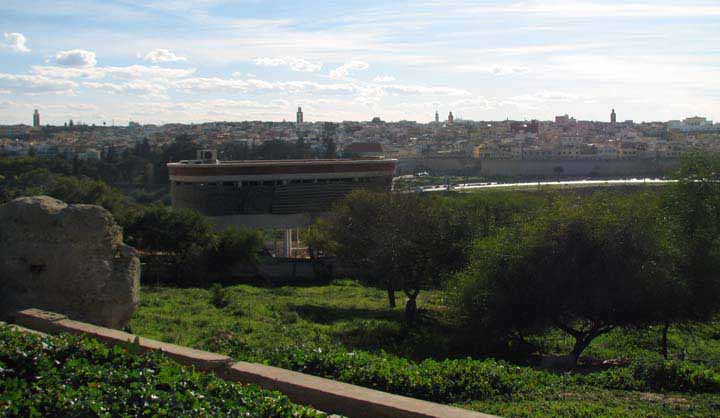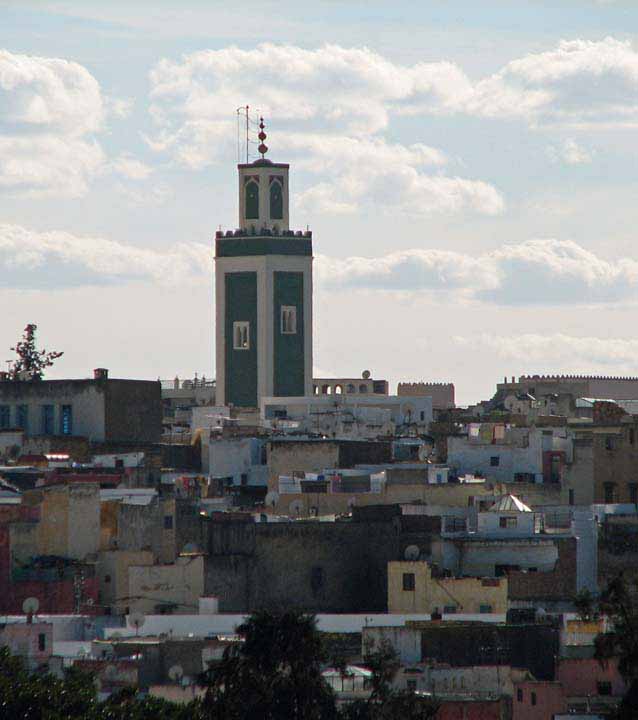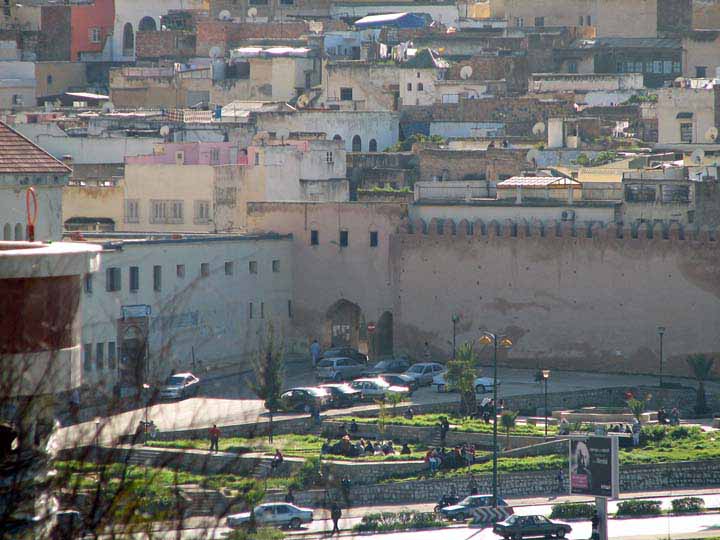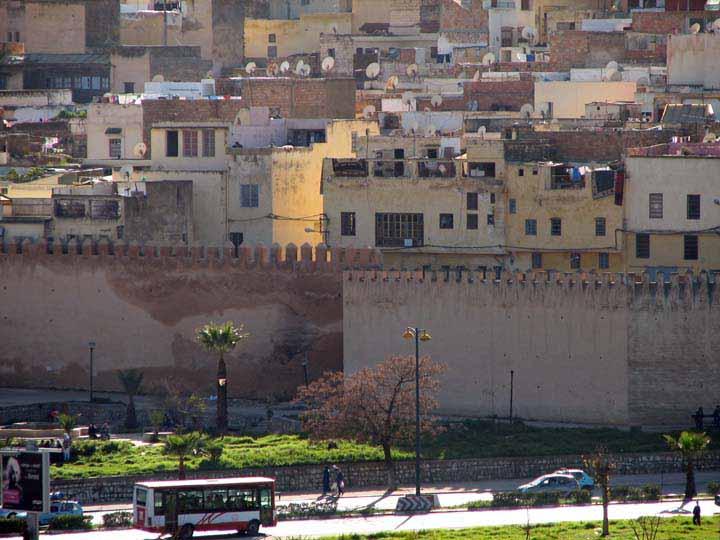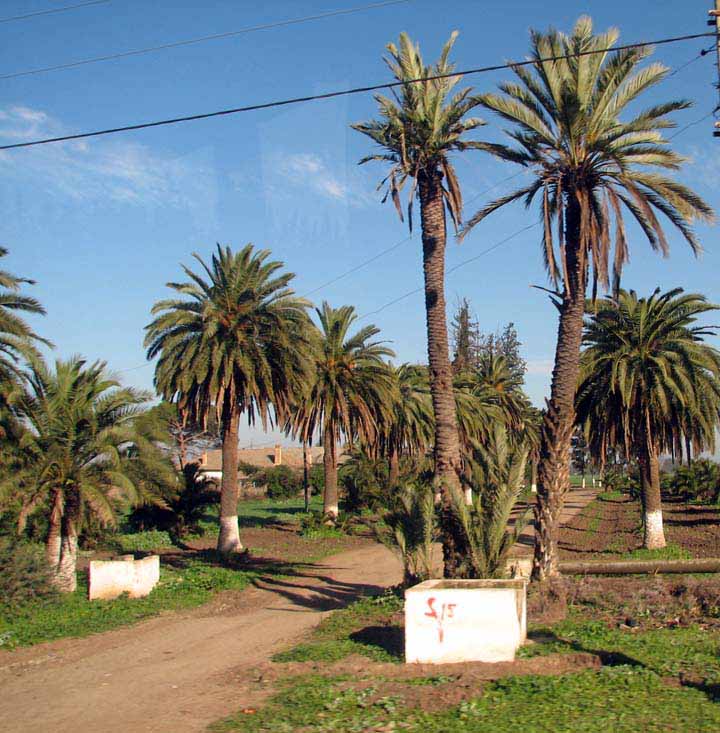 So we're on our way to Volubilis, through a beautiful countryside.
So we're on our way to Volubilis, through a beautiful countryside.Volubilis
 So we're on our way to Volubilis, through a beautiful countryside.
So we're on our way to Volubilis, through a beautiful countryside.
Seen here are examples of the "greeness" of Morocco. Everywhere we look, even in the more hilly and mountainous areas, there is still green fields and agriculture.
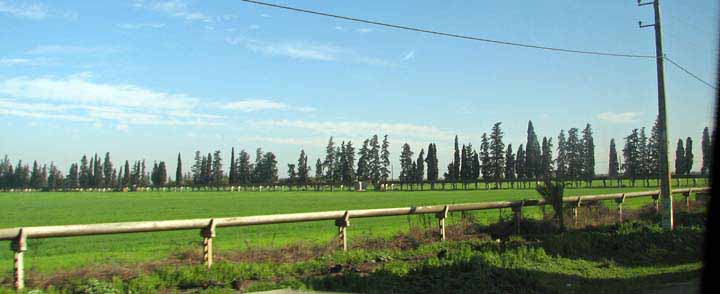
Here are some pictures of a feature that caught my eye. As I've seen irrigation ditches in nearly every country, I've never seen these elevated irrigation "tubes", for lack of a better description. They are from maybe two feet off the ground , up to perhaps six feet high. They are uncovered, and few by pump stations.
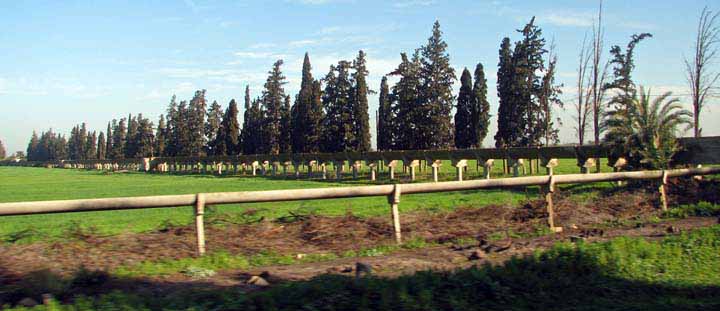
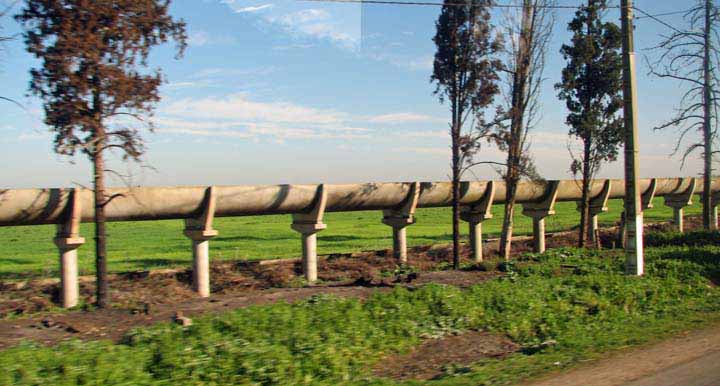
Older irrigation tubes are found adjacent to other fields

Acres and acres of beautiful fields
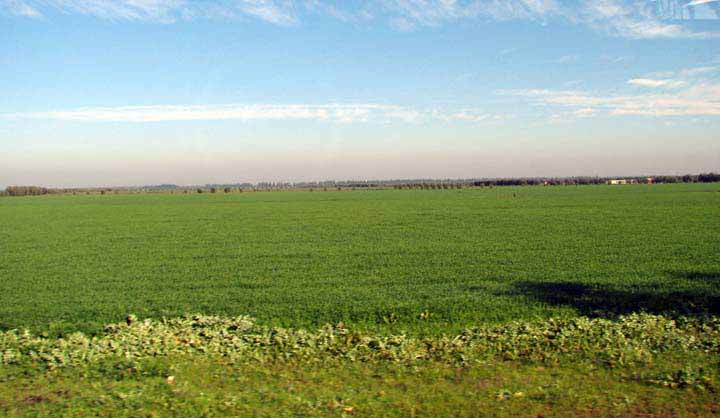
Here a field of artichokes
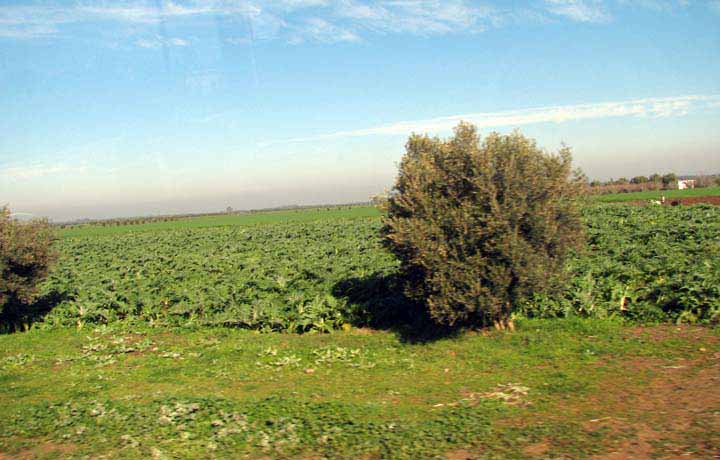
More newly built apartments
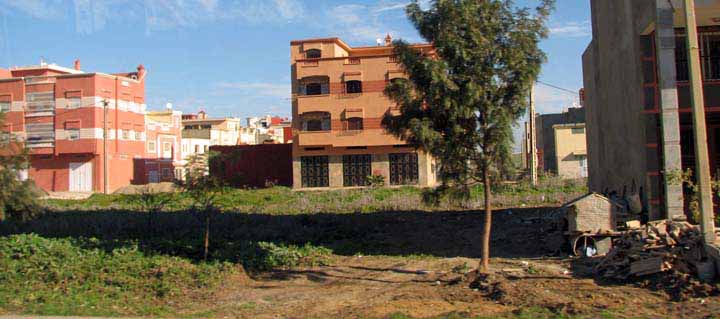
Both occupied and newly built living quarters
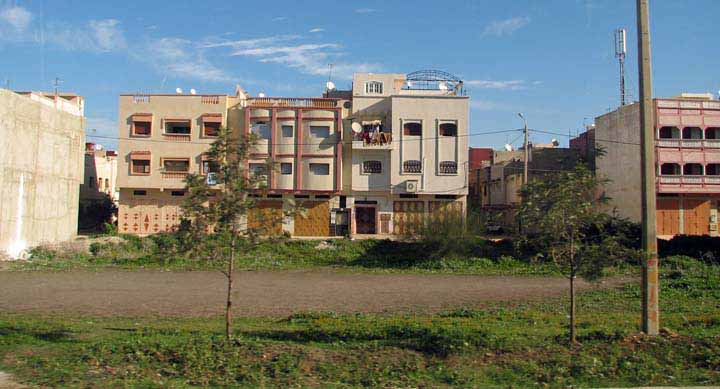
The only train station I saw
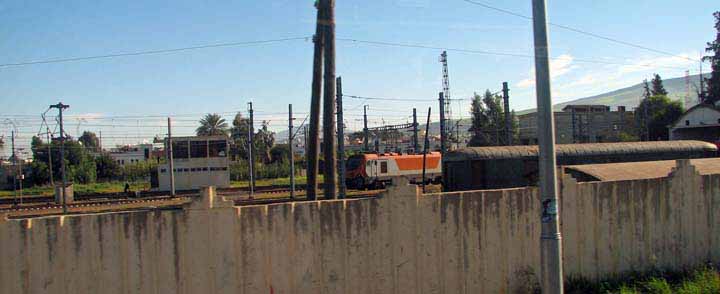
Government buildings
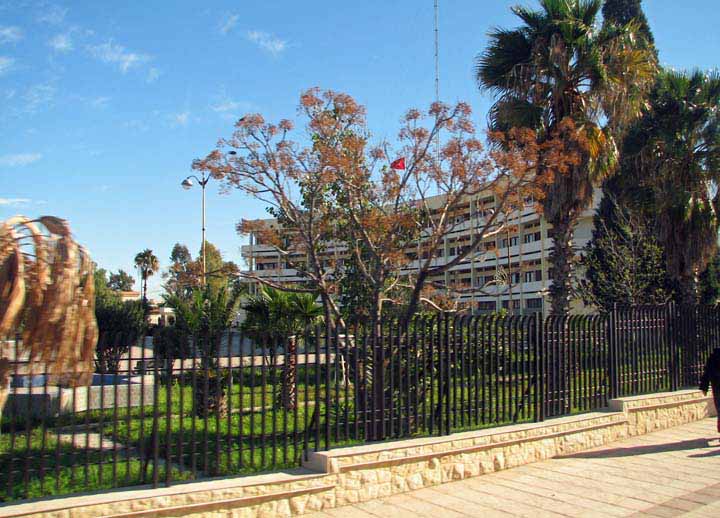
Towns scattered across and surrounded by fields
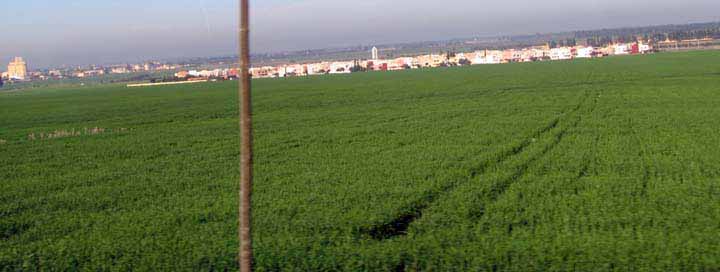
And we start seeing more sheep and shepherds
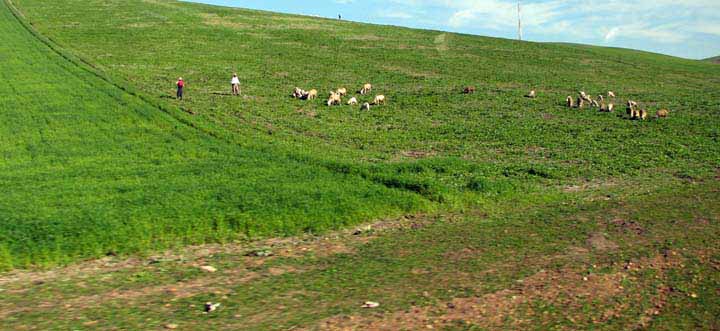
The flat fields give way to hills
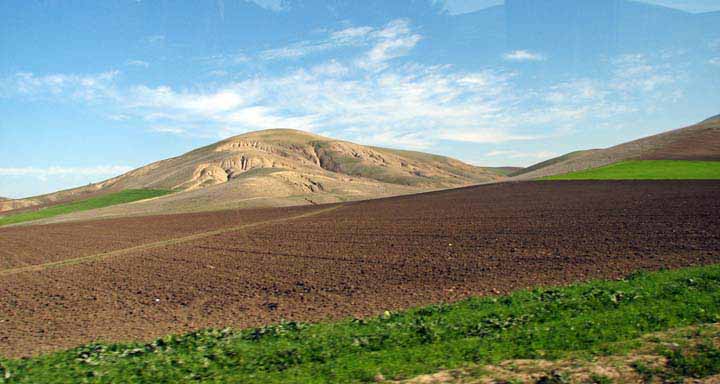
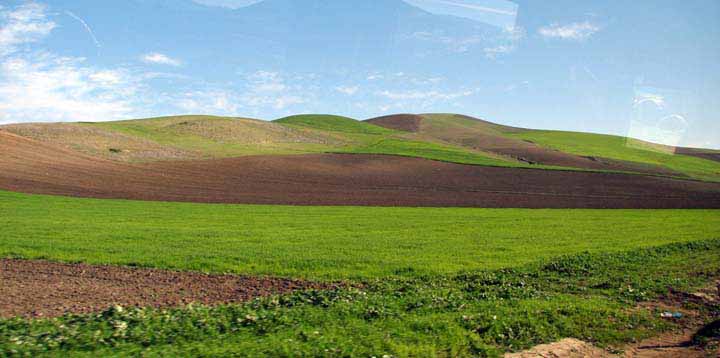
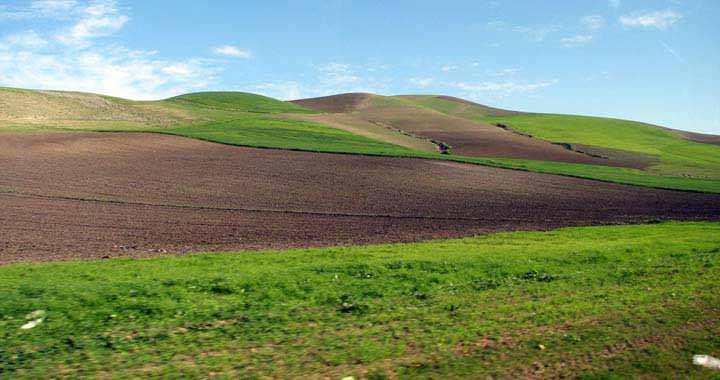
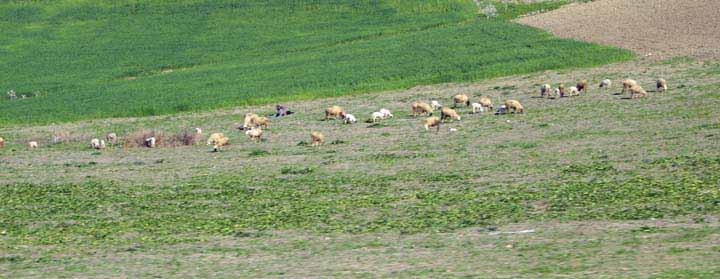
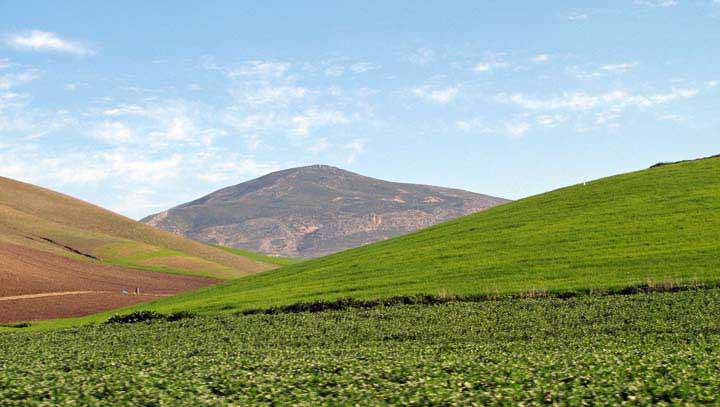
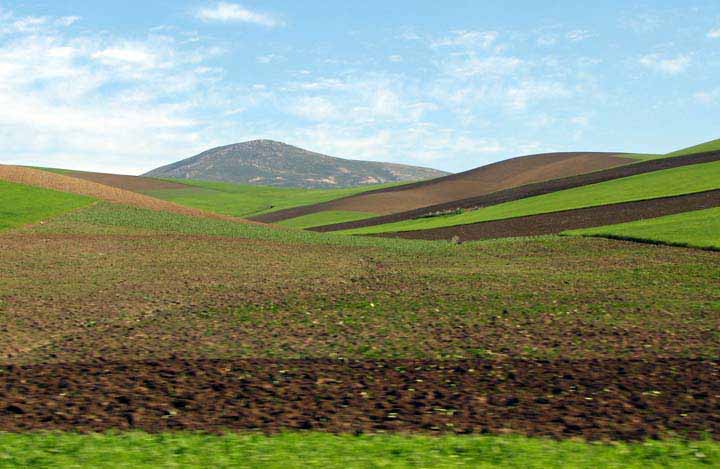
Farms surrounded by hay fields and more artichokes fields
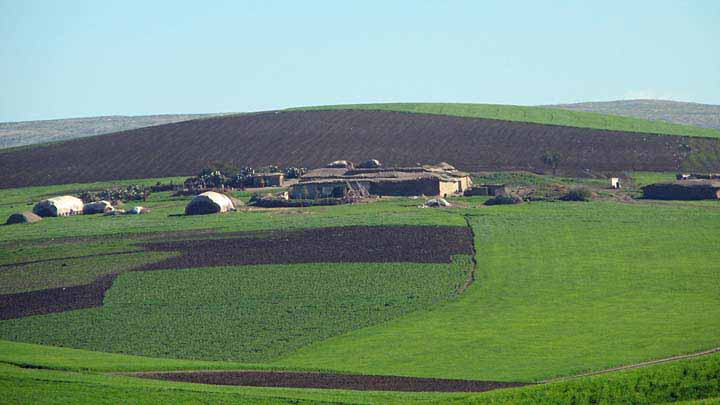
Notice, if you can, the ox pulling the plough
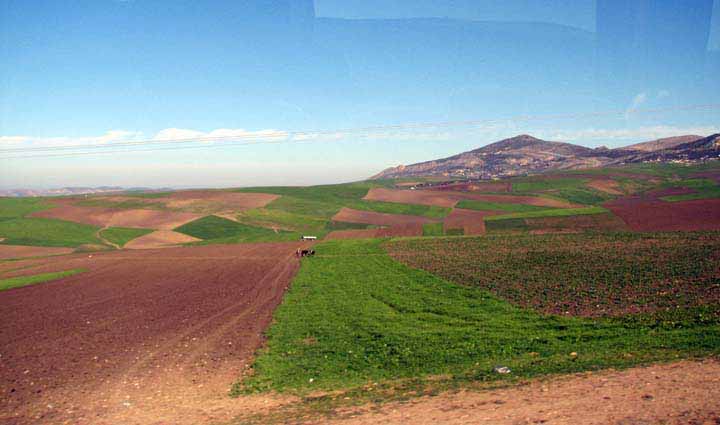
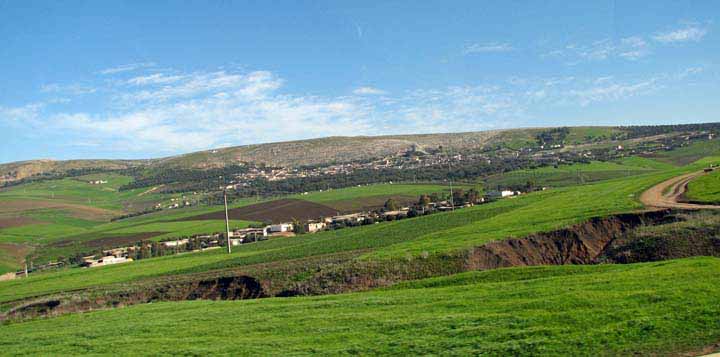
The field of olive trees protected by a cactus fence
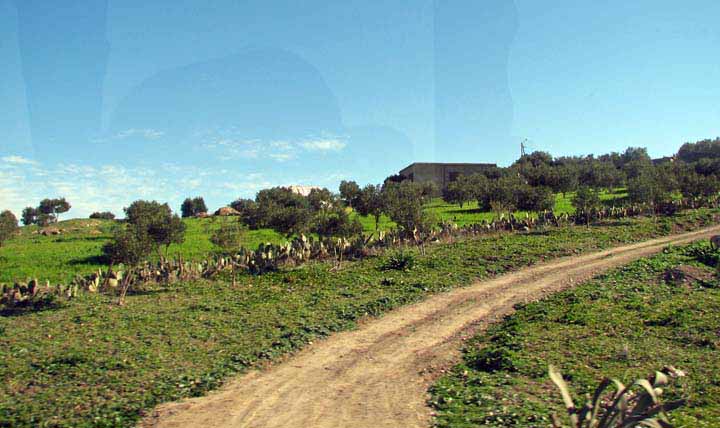
A cactus fence, olive trees and artichokes
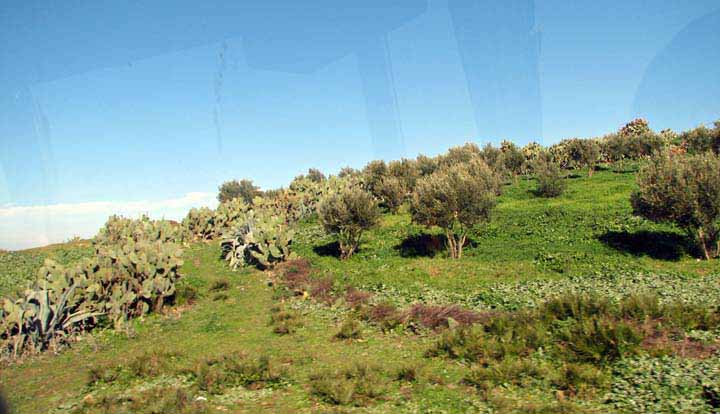
An olive tree orchard
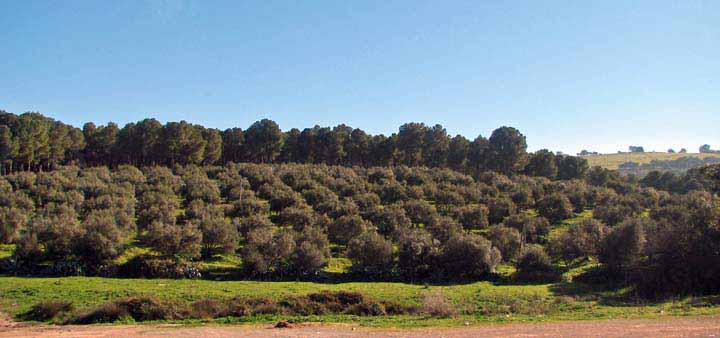
~ ~ ~ ~ ~ ~ ~ ~ ~ ~ ~ ~ ~ ~ ~ ~ ~ ~ ~ ~ ~ ~ ~ ~ ~ ~ ~ ~ ~ ~ ~ ~ ~ ~ ~ ~ ~ ~
And we come upon Volubilis, a World Heritage Site
one of the largest ancient ruins in Africa

Volubilis
(Arabic: Walili) is an archaeological site in Morocco situated
near Meknes between Fez and Rabat. Volubilis features the best-preserved Roman
ruins in this part of northern Africa. In 1997 the site was listed as a UNESCO
World Heritage site
In antiquity, Volubilis was an important Roman town situated near the westernmost border of Roman conquests. It was built on the site of a previous Carthaginian settlement from (at the latest) the third century BC. Volubilis was the administrative center of the province in Roman Africa called Mauretania Tingitana.
The Romans evacuated most of Morocco at the end of the 3rd century AD but, unlike some other Roman cities, Volubilis was not abandoned. However, it appears to have been destroyed by an earthquake in the late fourth century AD. It was reoccupied in the sixth century, when a small group of tombstones written in Latin shows the existence of a community that still dated its foundation by the year of the Roman province.
Volubilis'
structures were damaged by the 1755 Lisbon earthquake; while in the 18th century
part of the marble was taken for construction in nearby Meknes.
In
1915, archaeological excavation was begun there by the French and it continued
through into the 1920s. Extensive remains of the Roman town have been uncovered.
From 2000 excavations carried out by revealed what should probably be
interpreted as the headquarters of Idris I just below the walls of the Roman
town to the west. Excavations within the walls also revealed a section of the
early medieval town
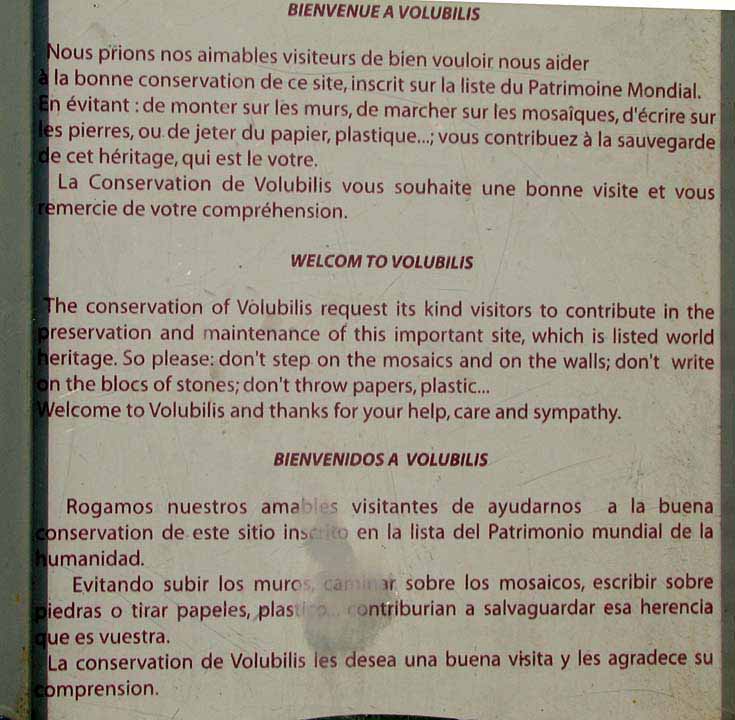
The forum
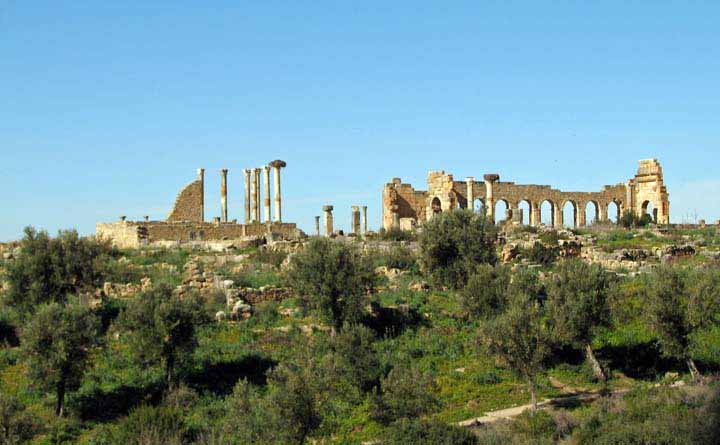
Yes, here the pelicans nest
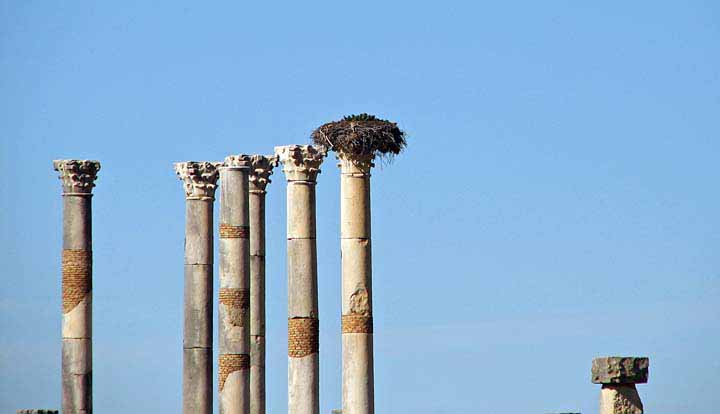
We look down to a small village nearby
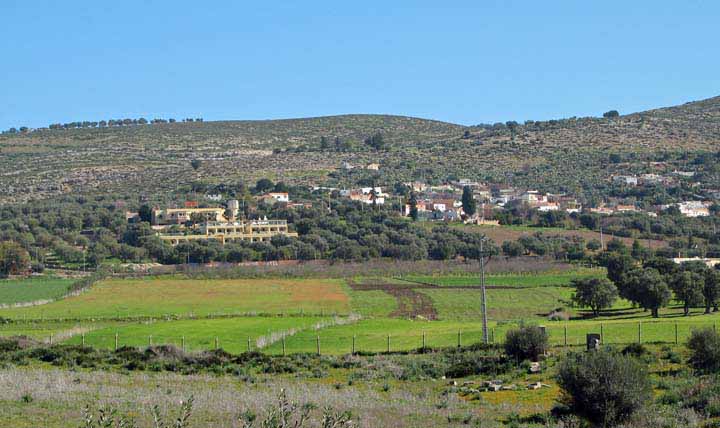
It seems that virtually everywhere we've visited, regardless of the country, we find Roman ruins. In some places, as in Turkey, the ruins are as fine, if not finer, than any we've seen in Italy. Here, again, are Roman ruins. Unfortunately, where other country's Roman sites have not withstood the test of time, the strength of earthquakes, the theft of materials for building other sites, or theft of antiquities by museums, theses ruins cannot withstand lack of care.
While sites filled with local wild flowers and greens are attractive, here they are simply overgrown. Sites with mosaics are more often protected by screens, or are carefully maintained, the mosaics found here are exposed, often covered by mud, and appear to have been picked over by visitor/thieves.
One visitor's guide calls Volubilis the "neglected jewel" - amen!
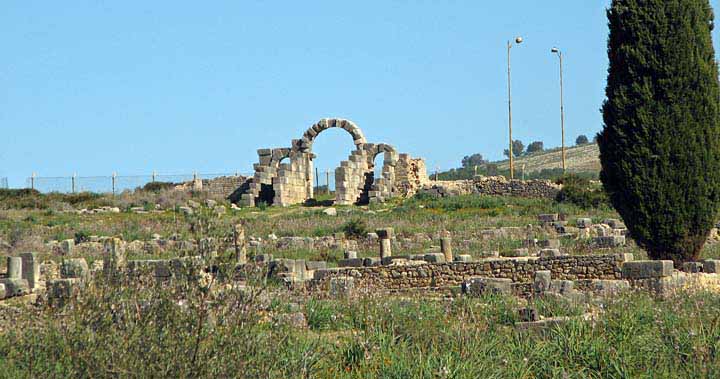
However, having said that, there is an aura of past grandeur and a pulse of history - people who walked these paths, lived in these buildings, wandered the cities, enjoyed the baths, lived and died without ever leaving the immediate area. This remains true of Volubilis.
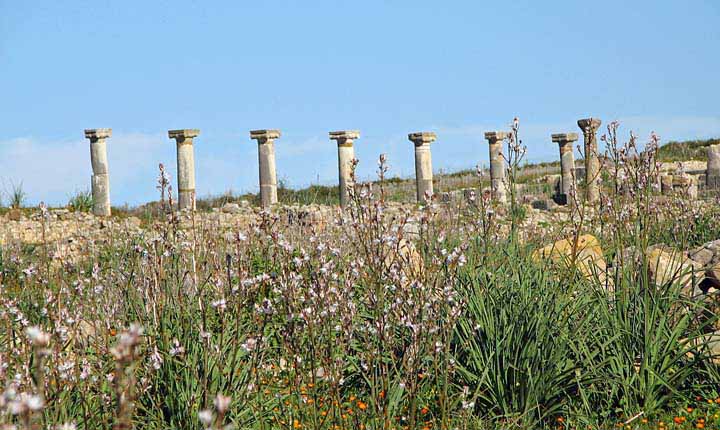
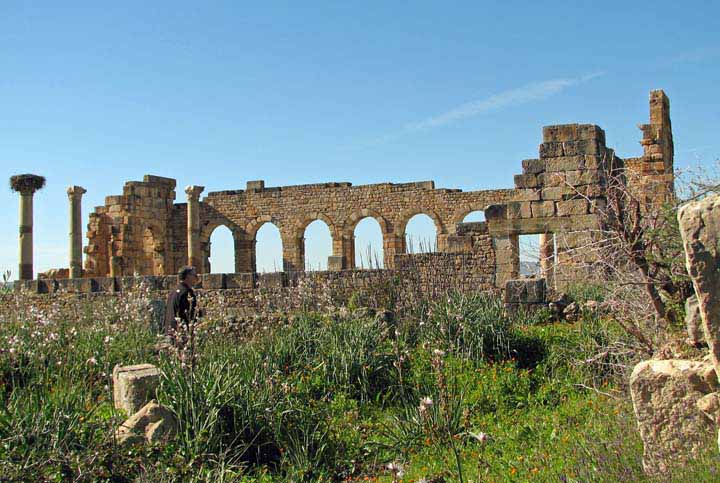
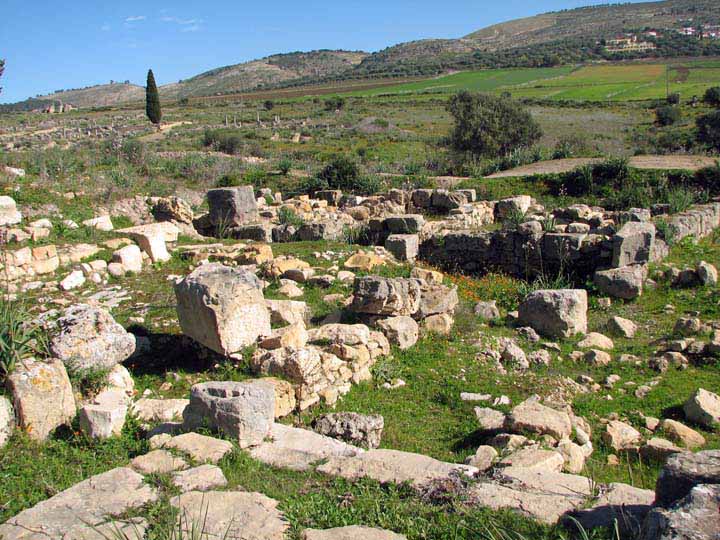
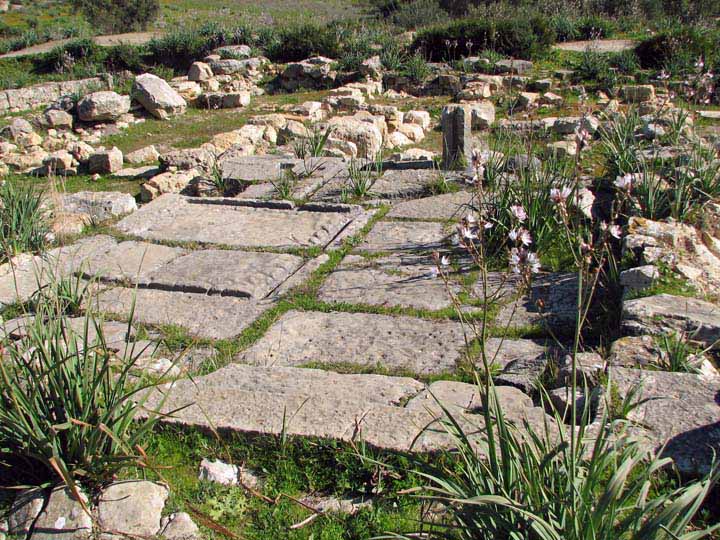
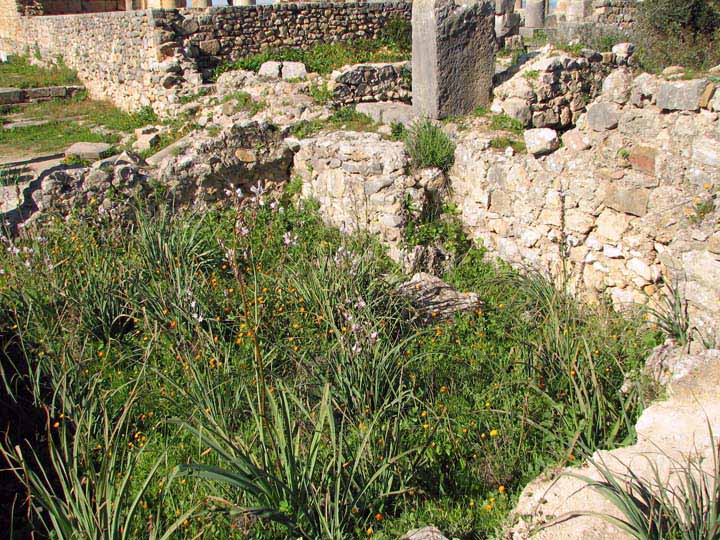
The forum
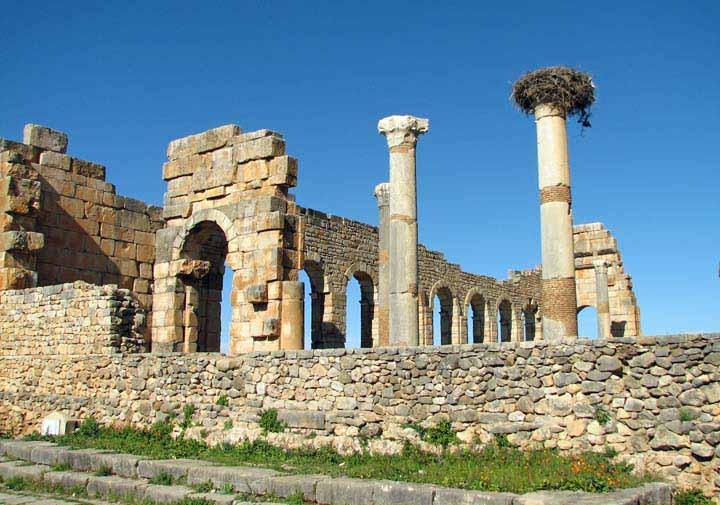
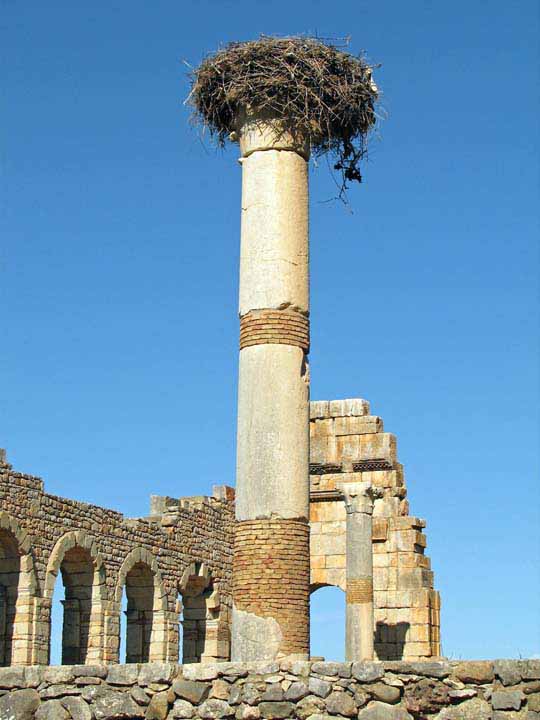
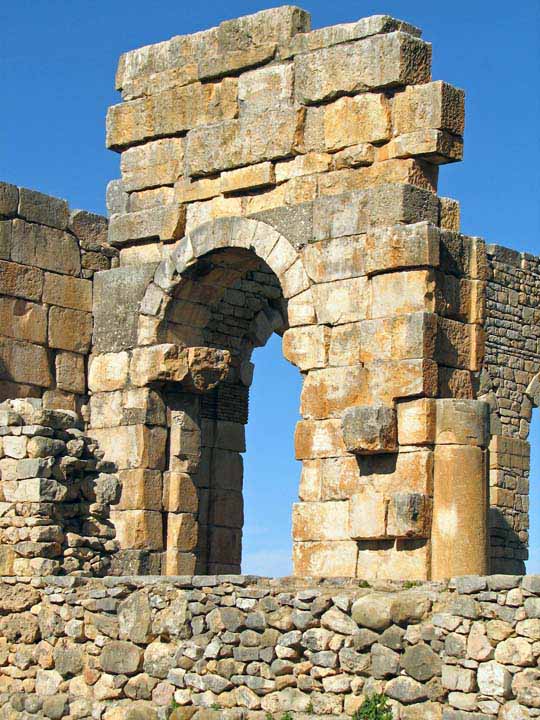
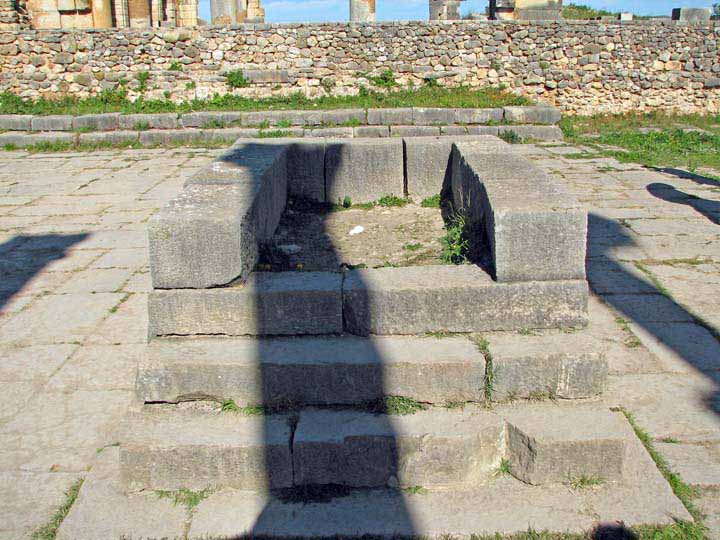
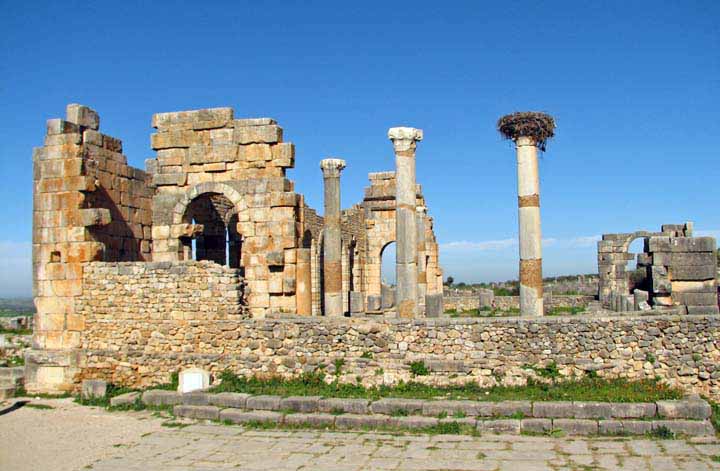
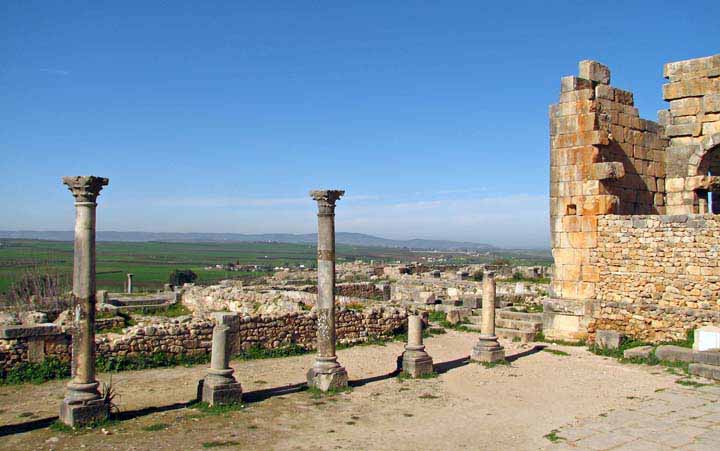
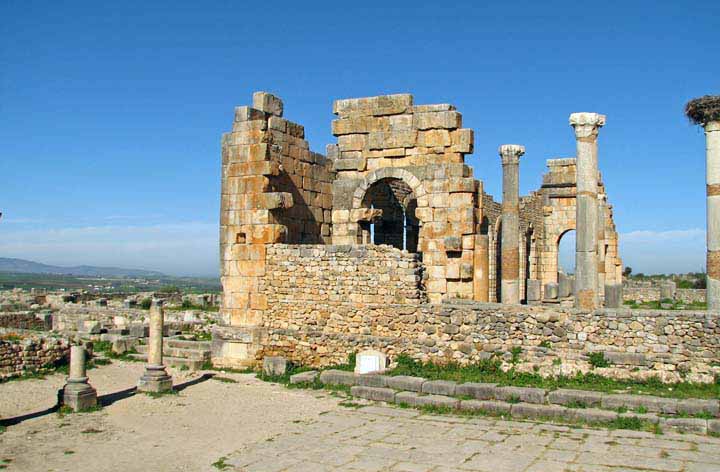
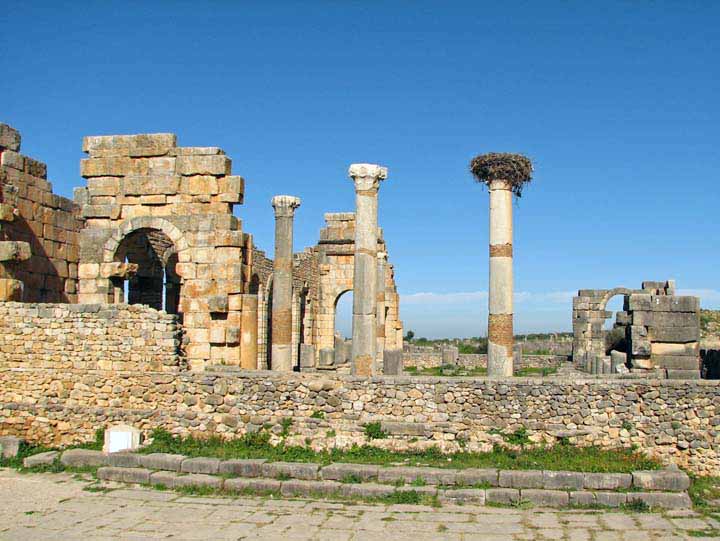
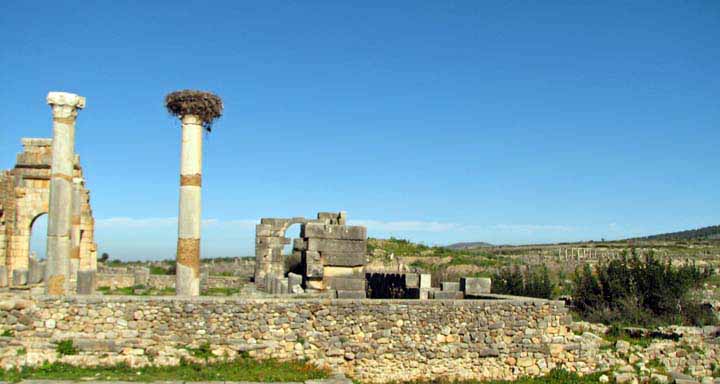
No, not all visitors are foreign tourists; we share the site with small groups of those who appear to be Moroccans.
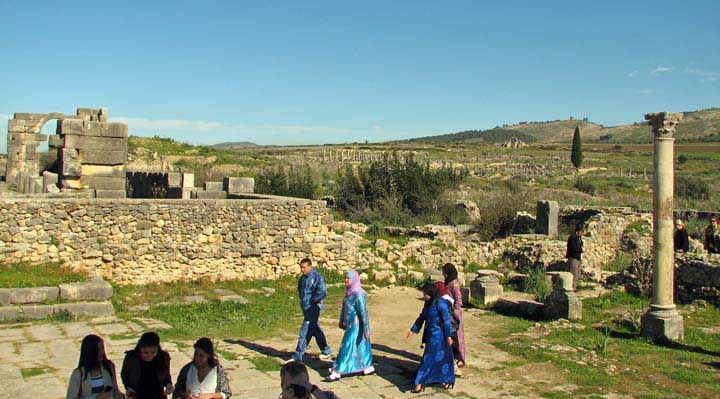
Some of the earlier repairs and reconstructions were done in an unusual , but artistic manner.
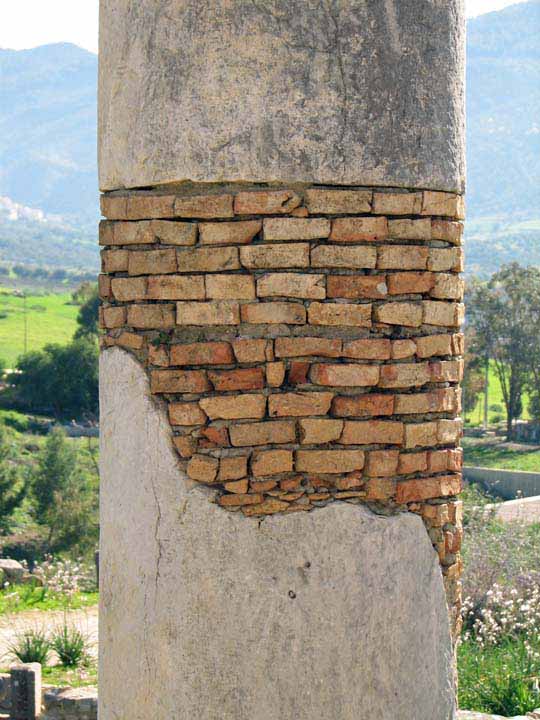
Other locations appear to remain only rubble.
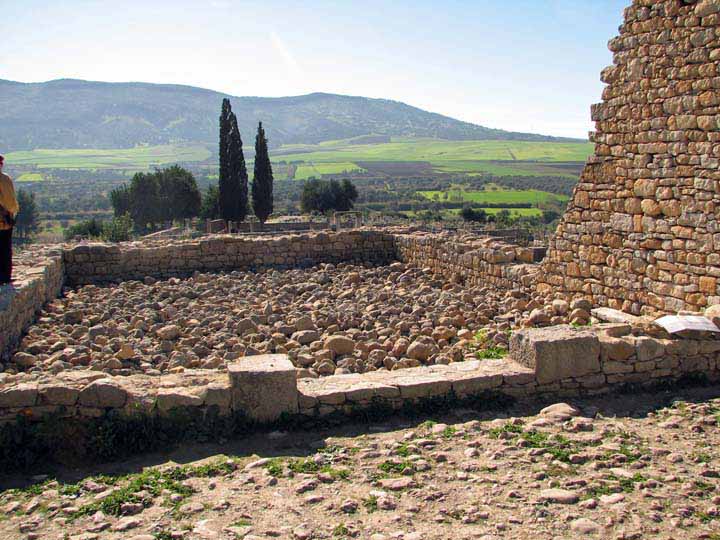
But the beauty of the location cannot be denied.
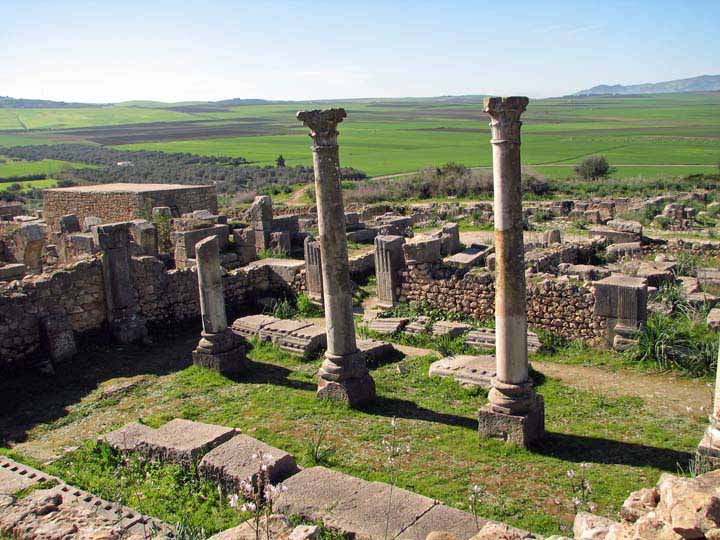
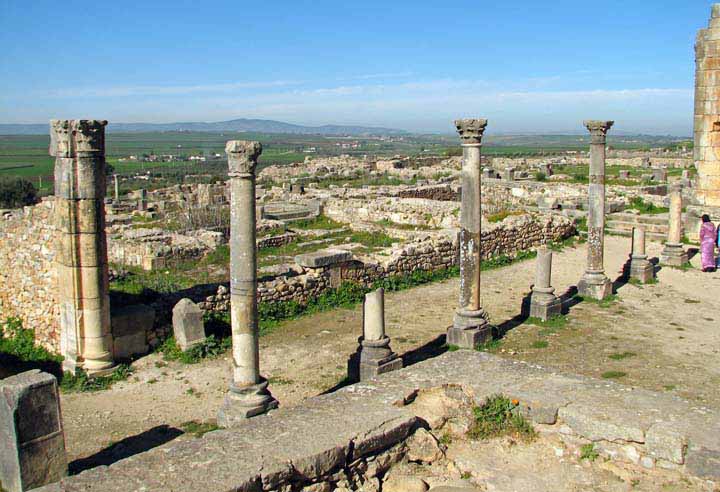
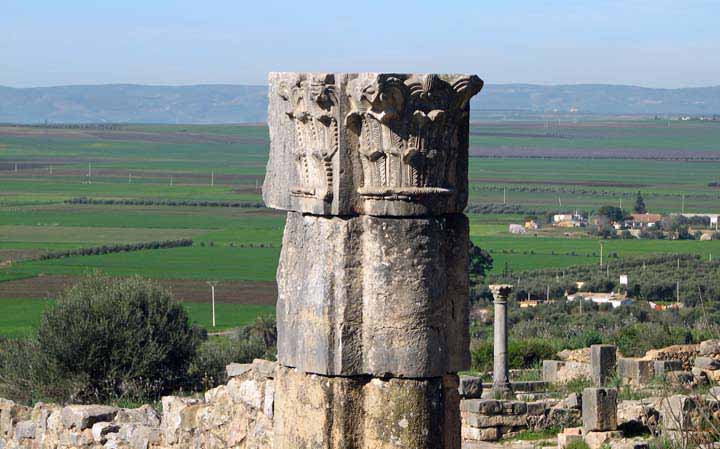
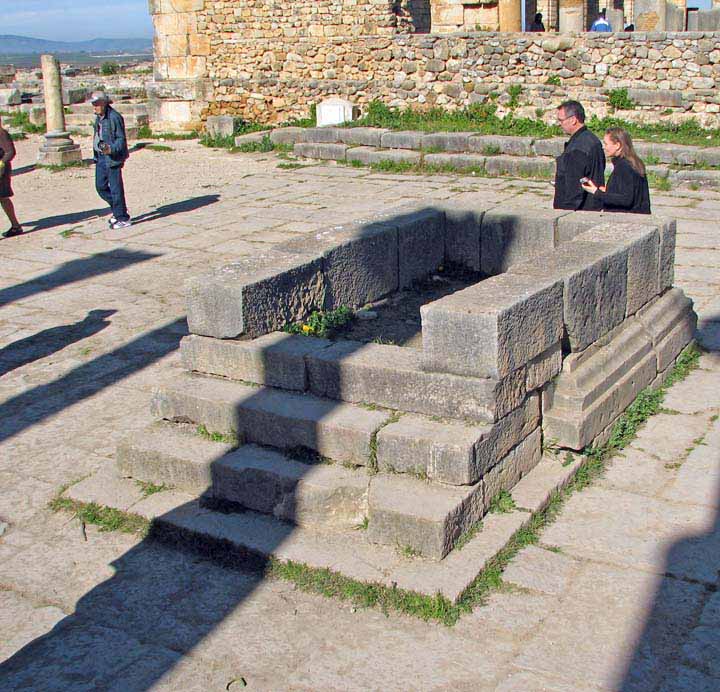
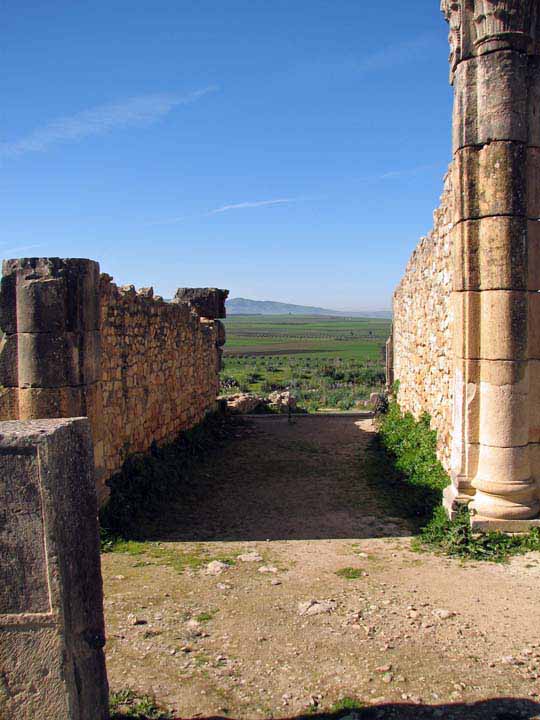
An old grain mill
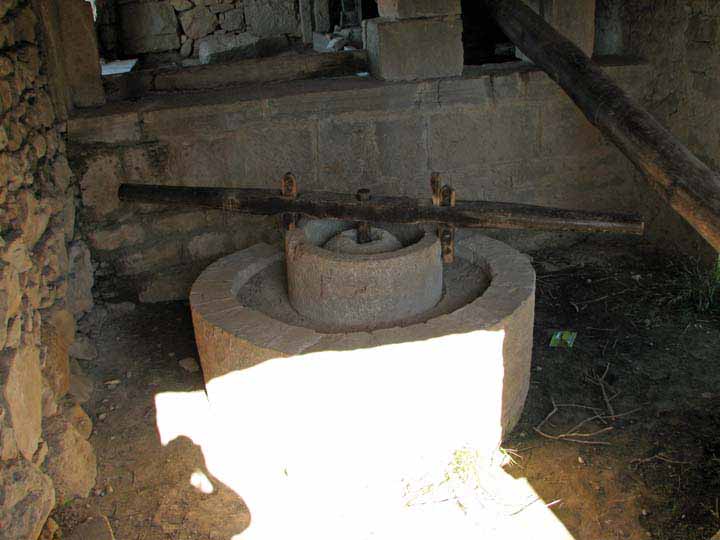
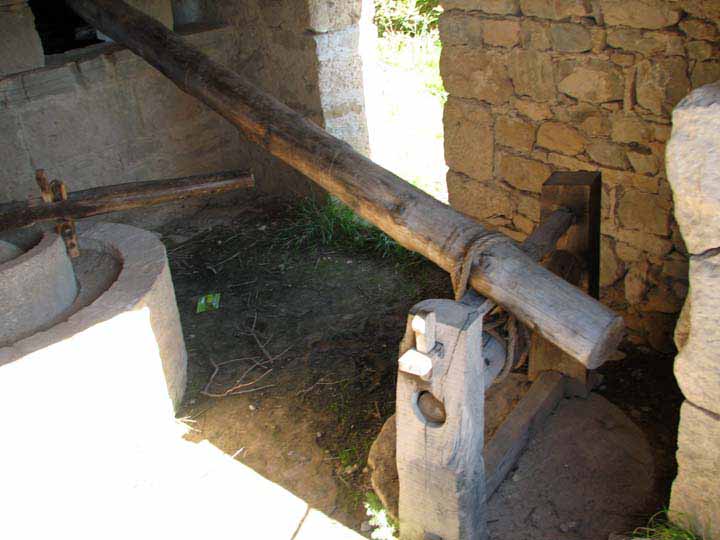
Views of the surrounding countryside
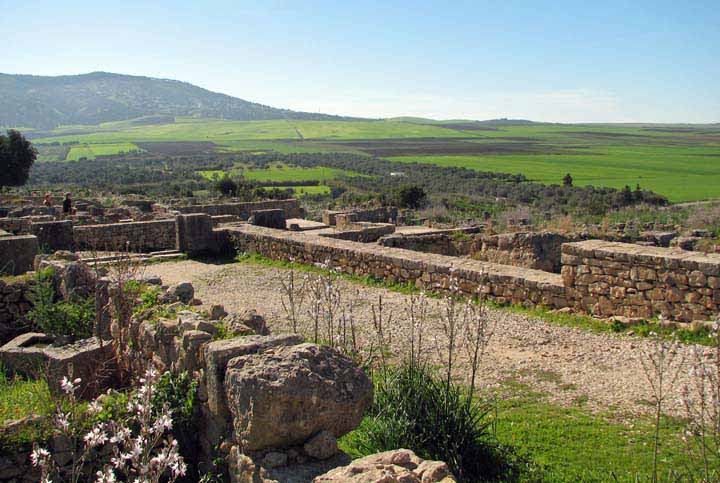

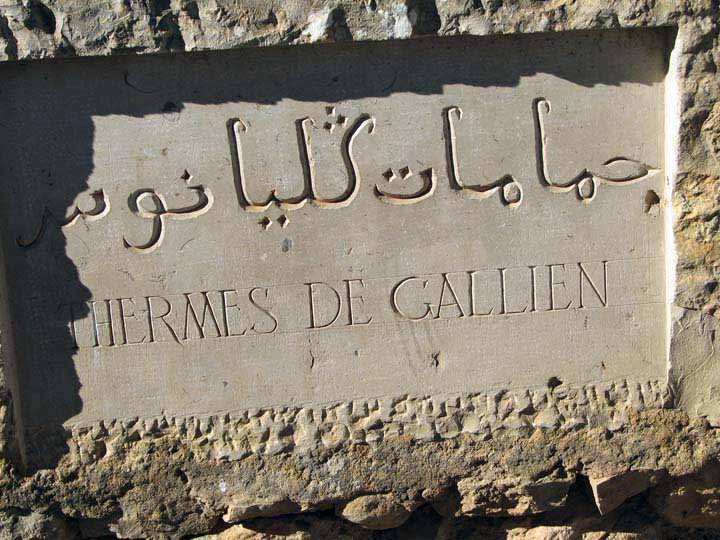
Gallien Baths - the first of many baths we saw
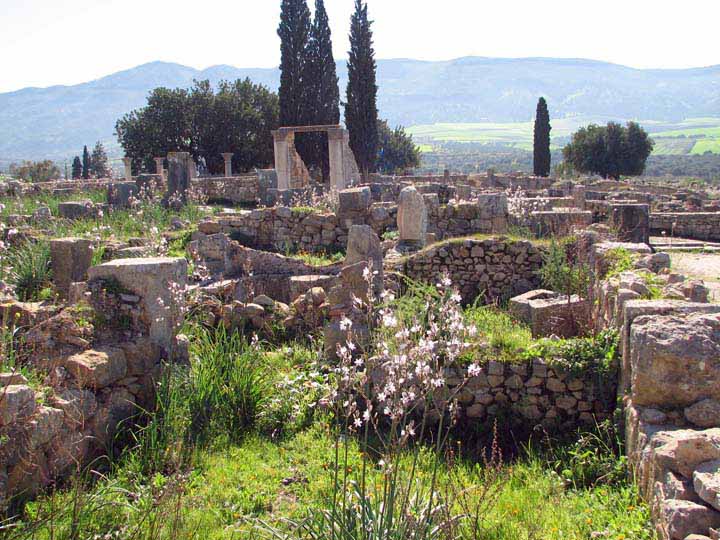
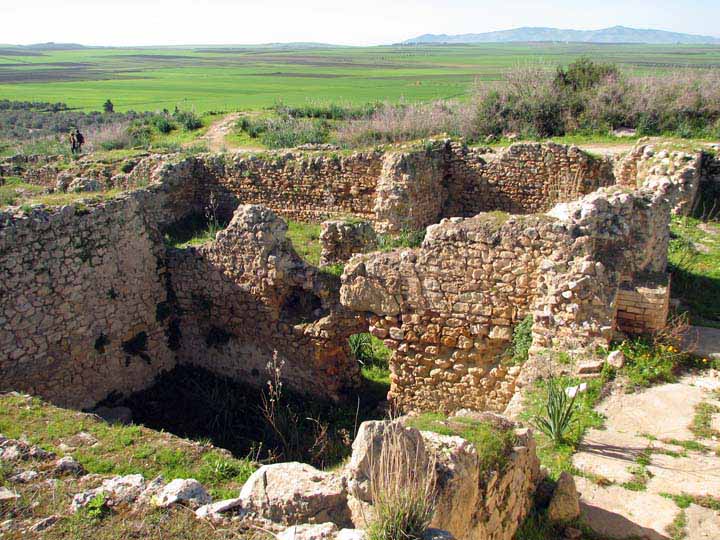
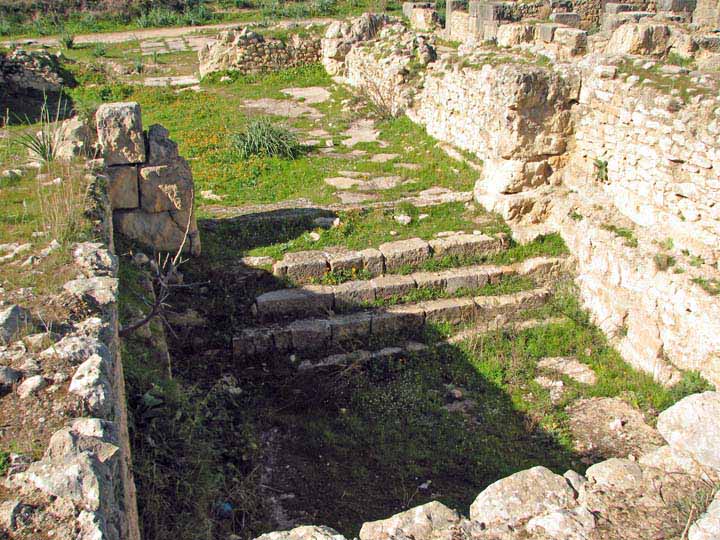
The city had extensive storm drains and sanitation
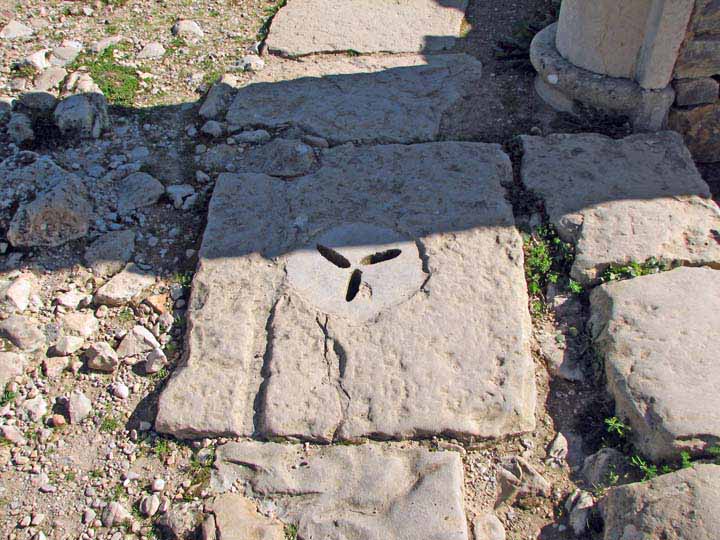
There is some repair and renovation occurring, but as you see, this is work being done more as labor than scientific efforts.
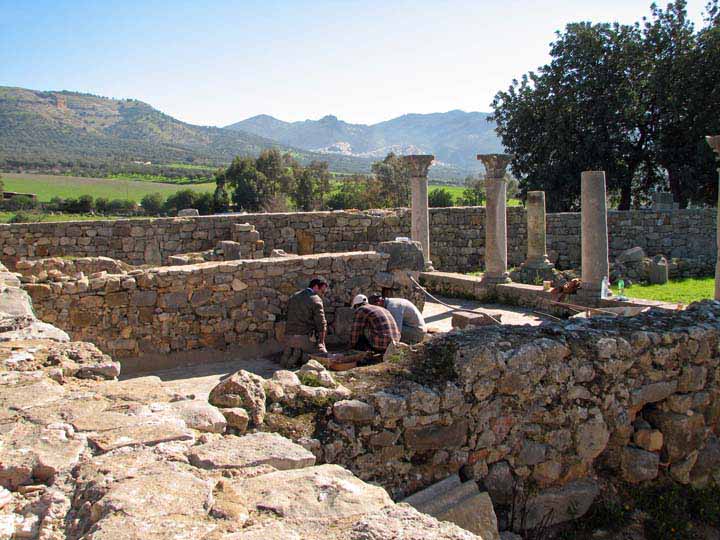
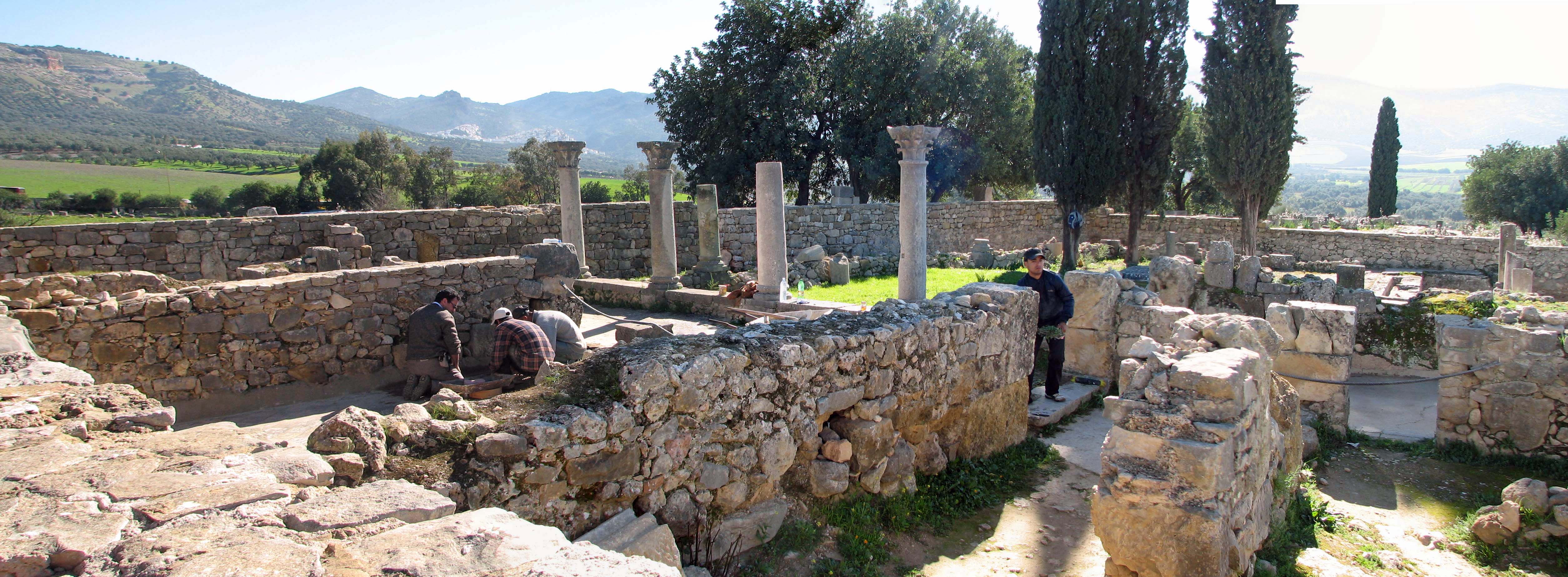
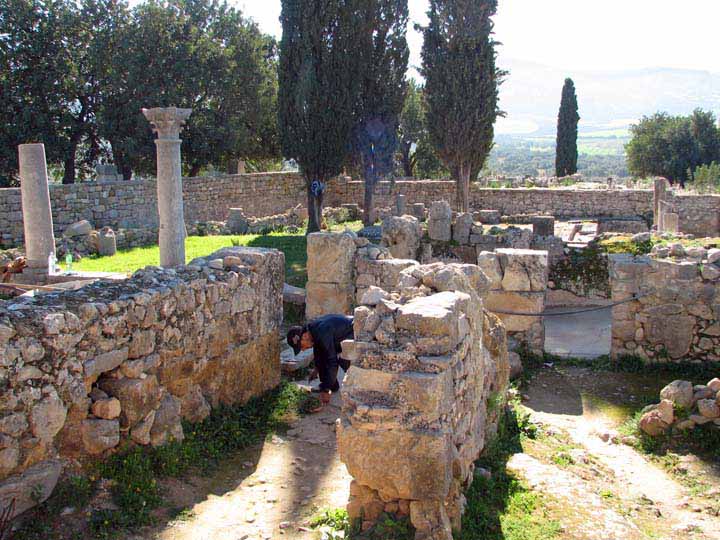

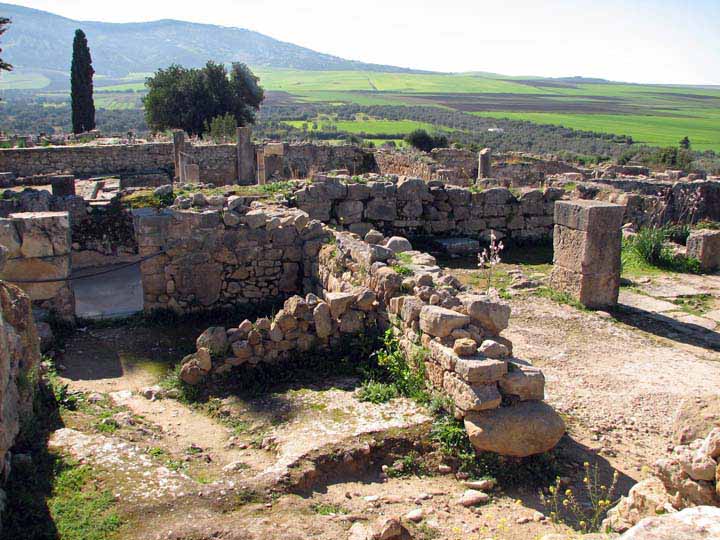
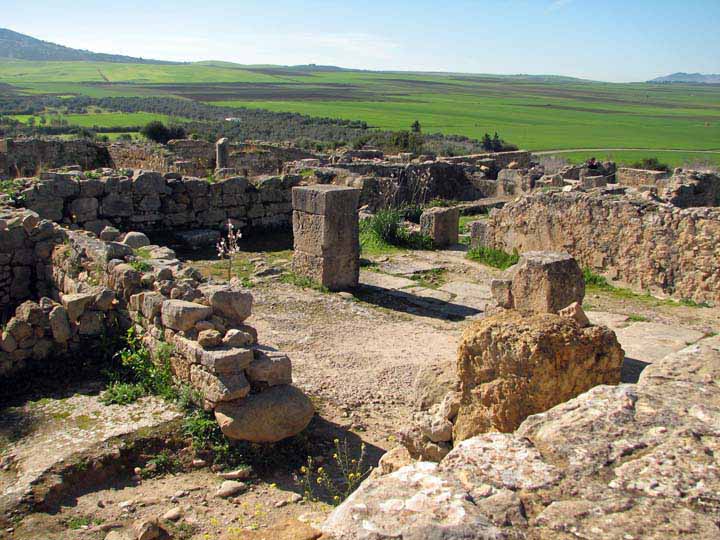
The Orphet House
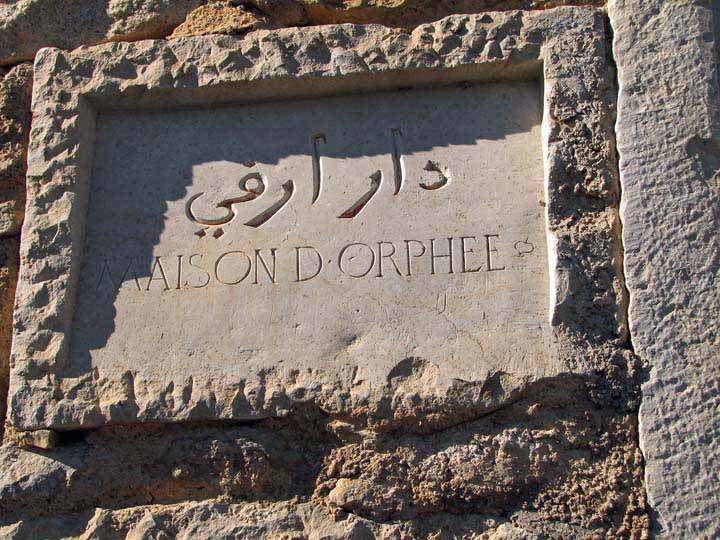
Here we start to see our first mosaics and underground structures
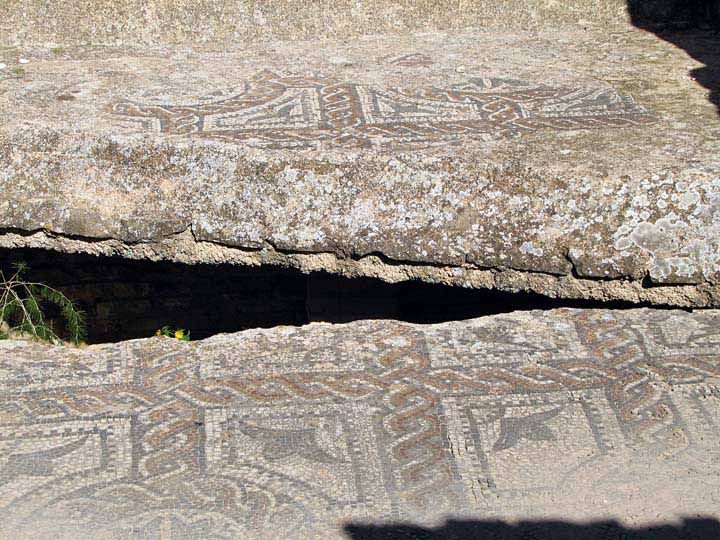
Sometimes the mosaics are broken or separated
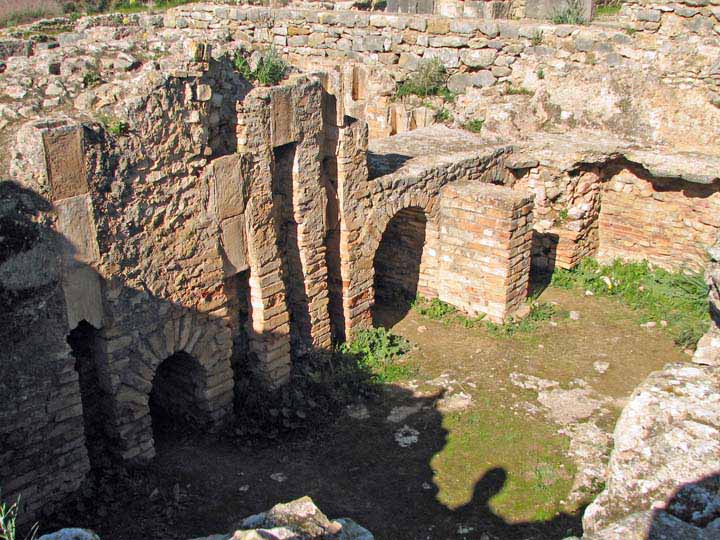
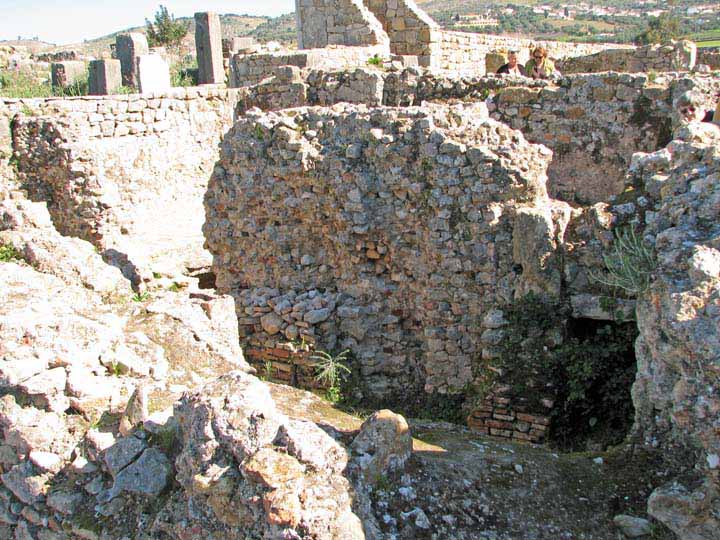
Heating area for heating water for the baths
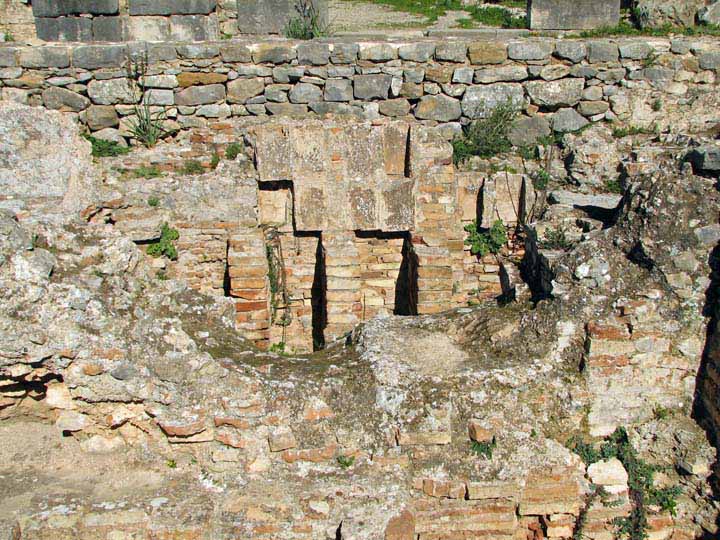
And we see the first of many baths - with ornate mosaics and finely carved stone furnishings
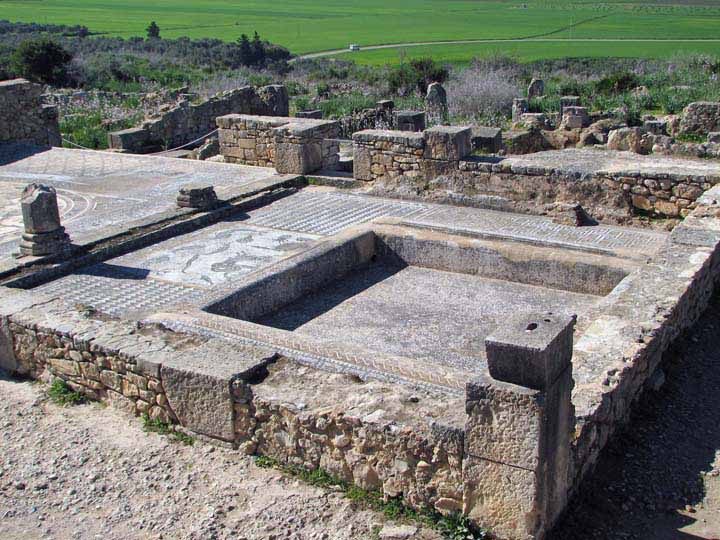
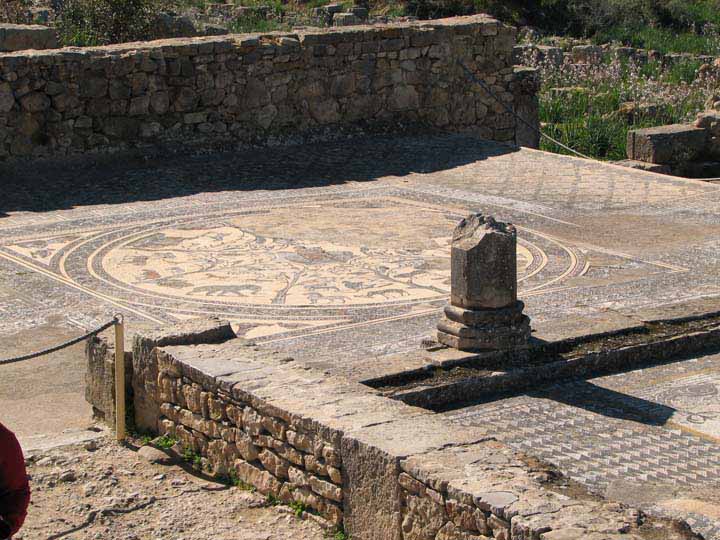
Notice the real and imaginary sea creatures
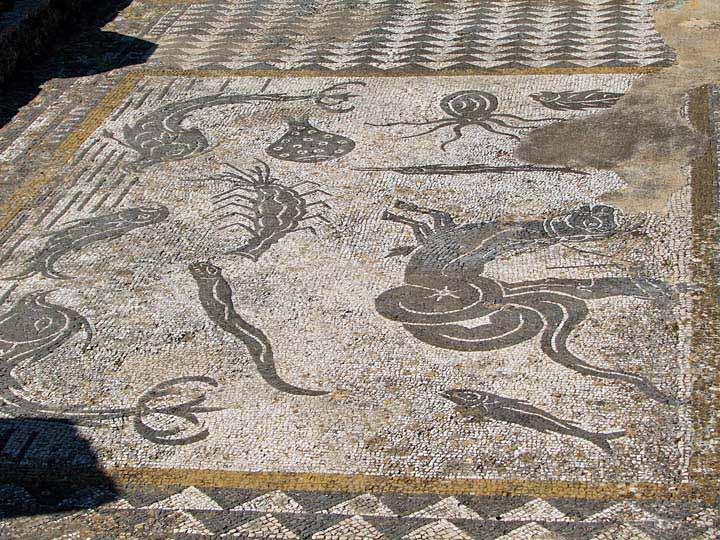
A forest and wild animals
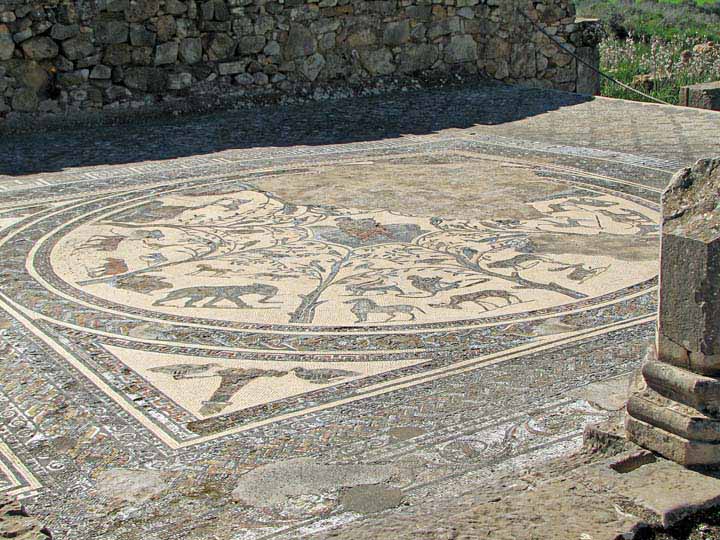
Elephants
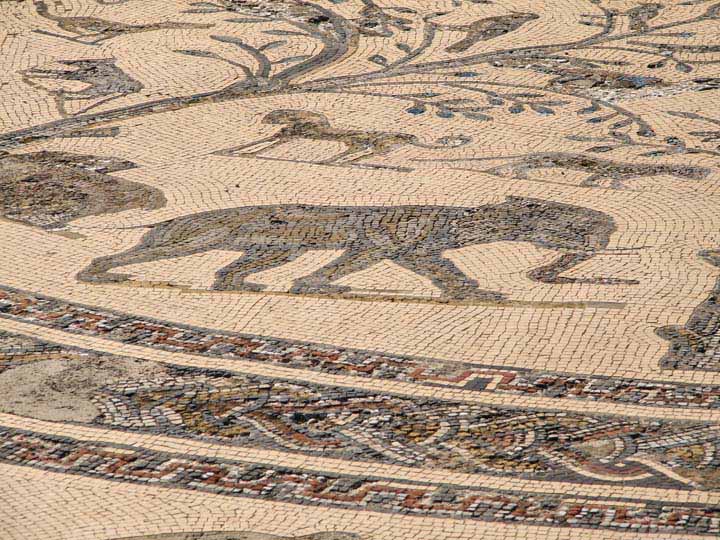
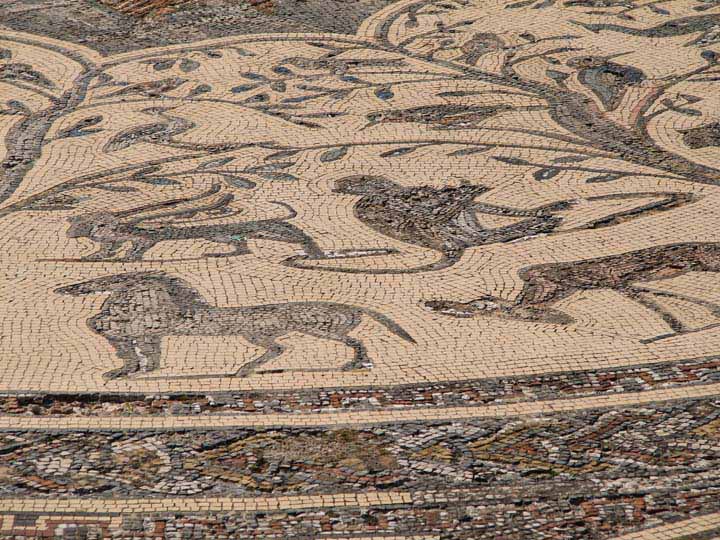
As we leave this home, we are again exposed to the beautifully green fields
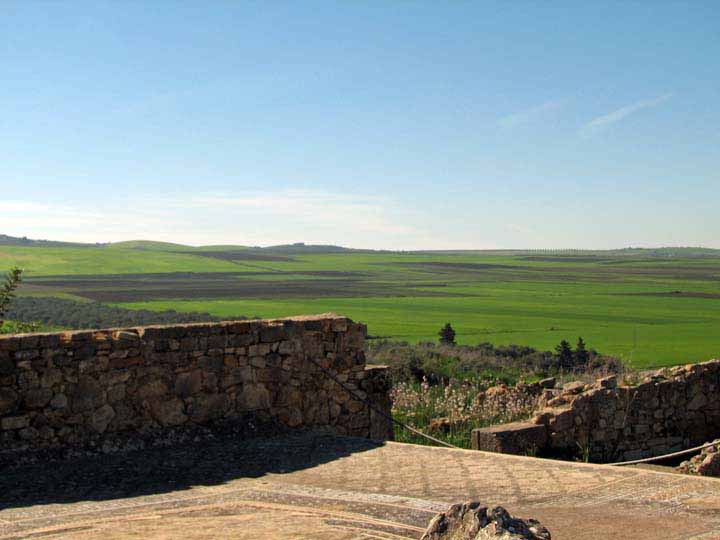
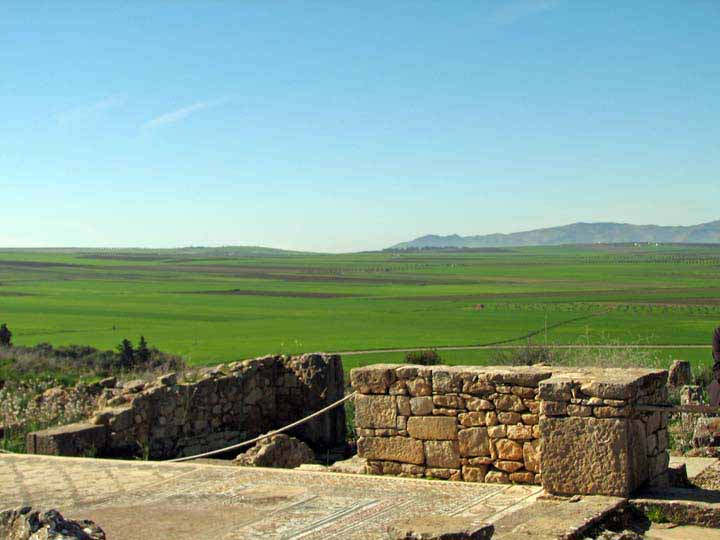
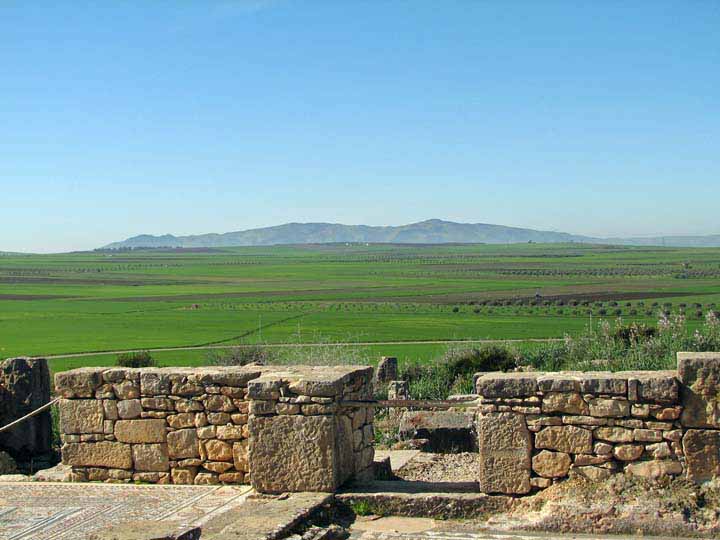
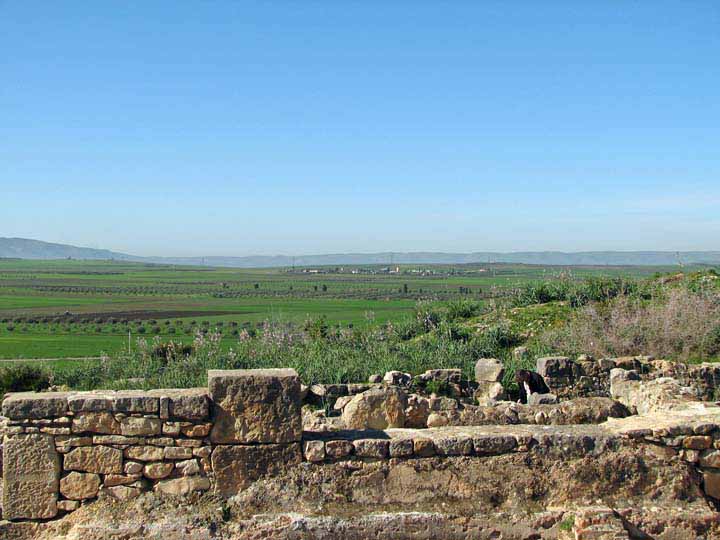
A basin to wash feet prior to gaining the bath
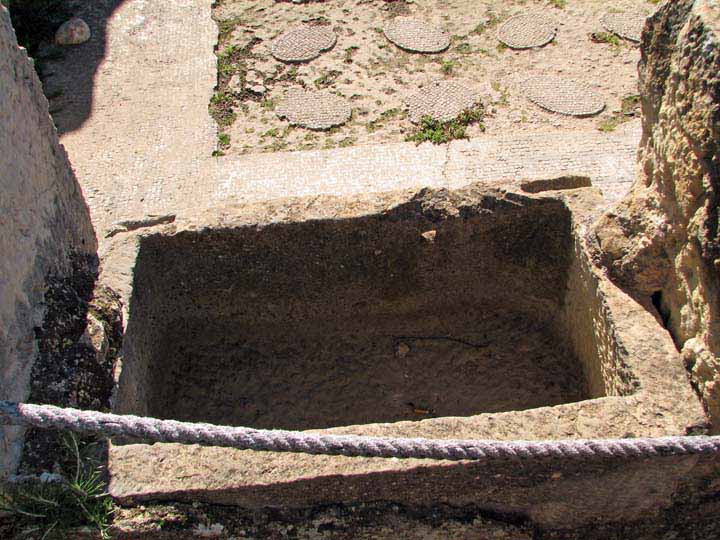
Many of the mosaics are missing and very faded - also covered by a layer of dust and mud
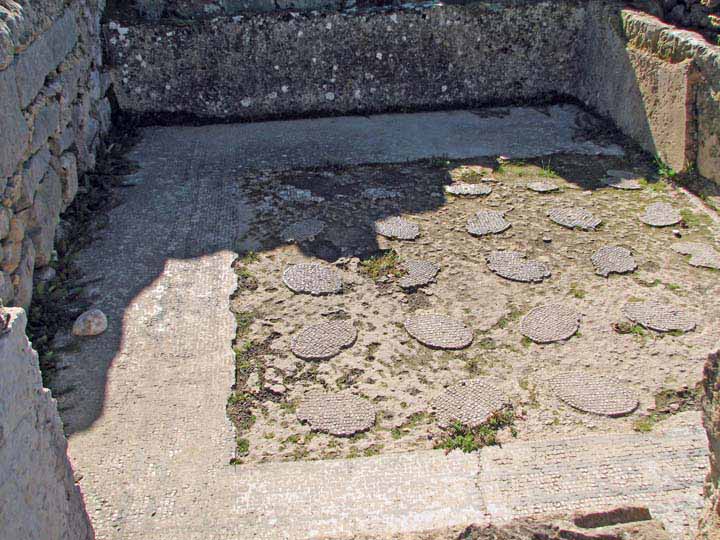
This is a deep bath with benches carved into the walls for relaxing
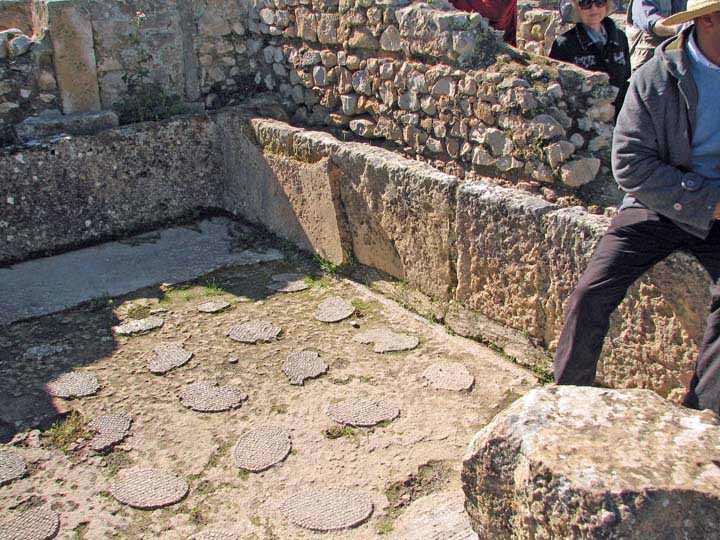
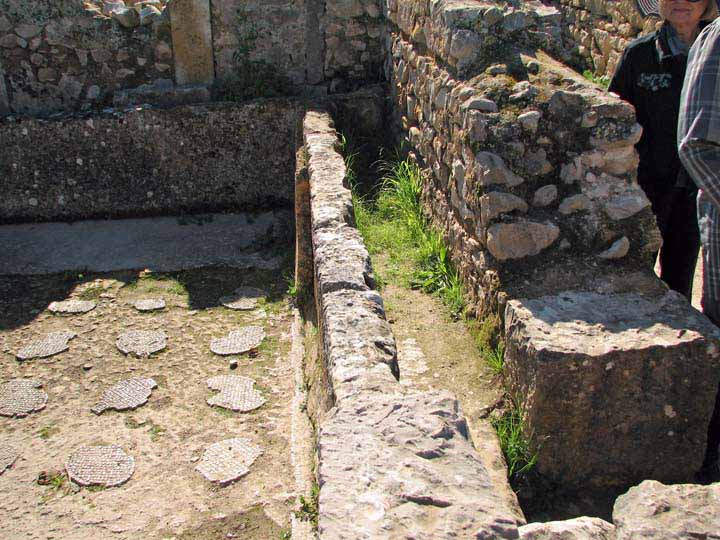
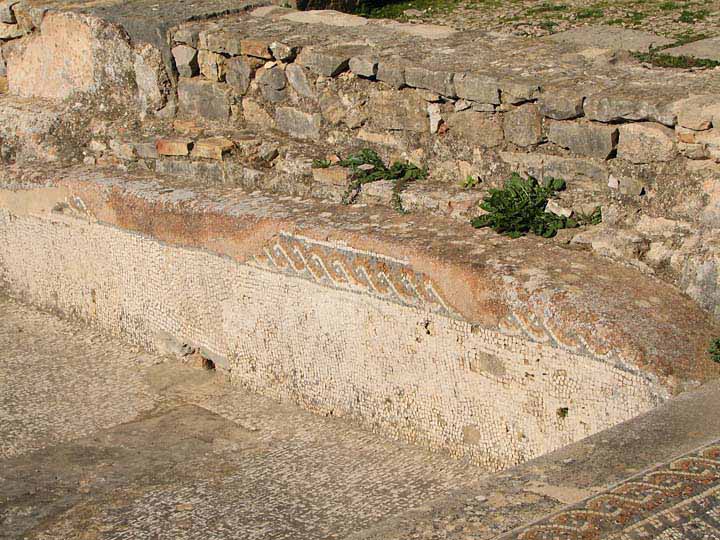
Some of the arches and walkways between homes
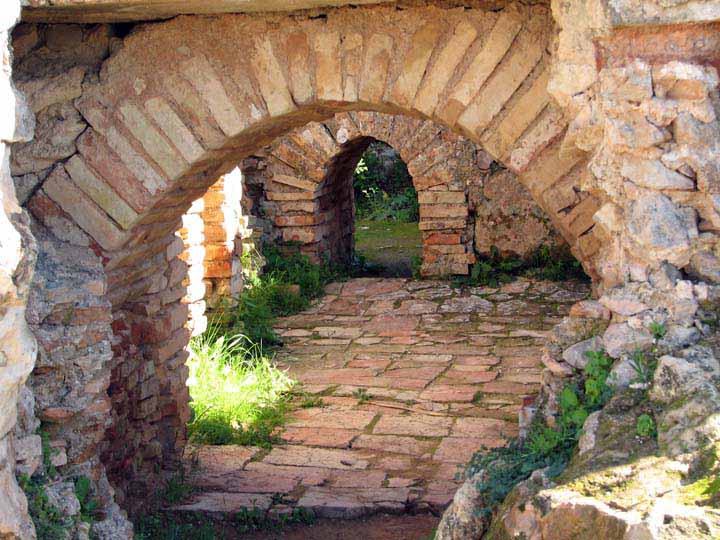
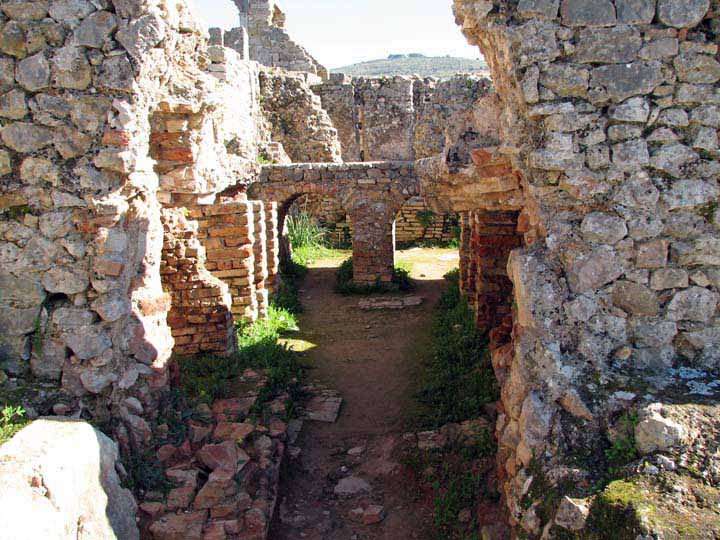
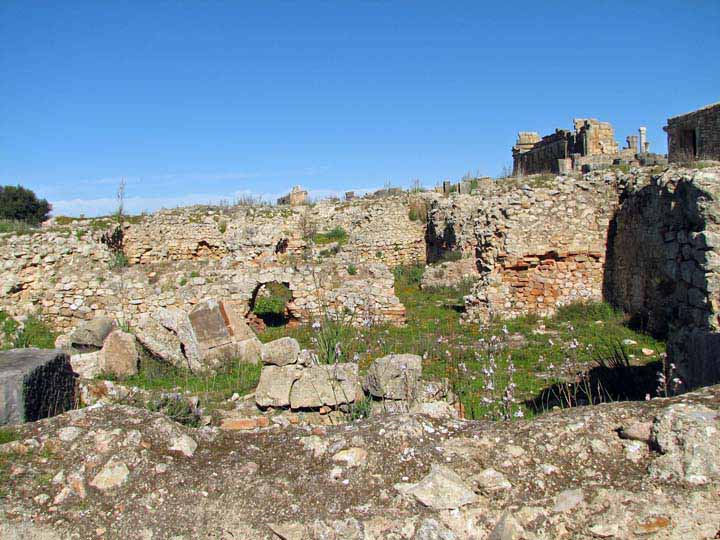
An ancient grinding stone
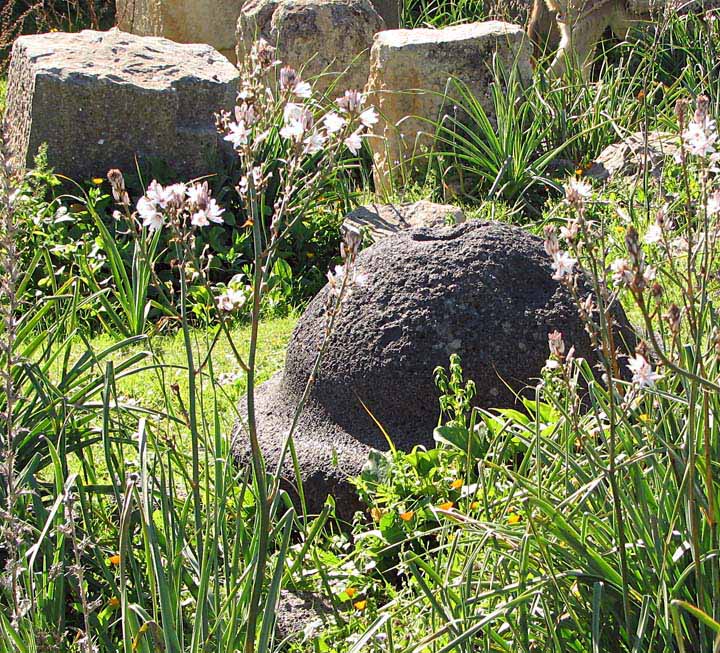
In the distance, above the homes, the forum stands
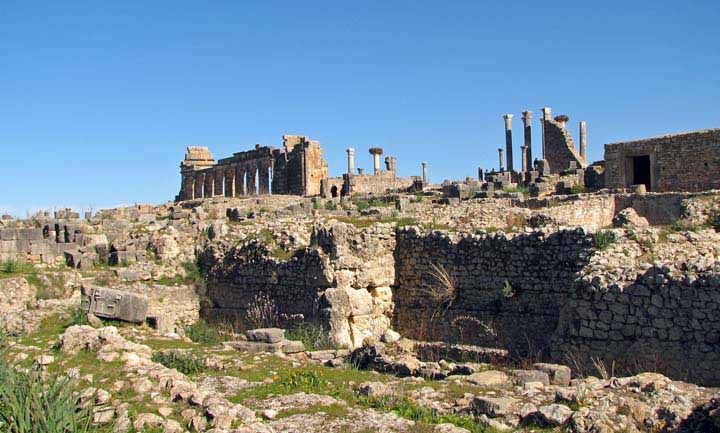
carved stone lays asunder
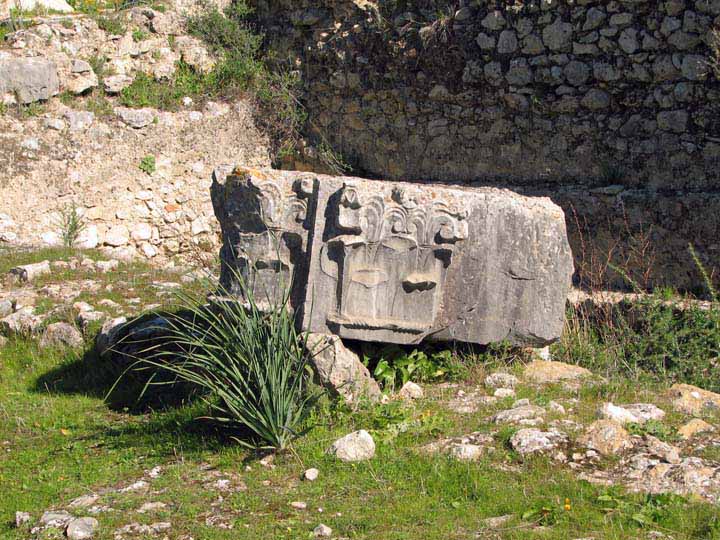
There are thermal baths in Volubilis
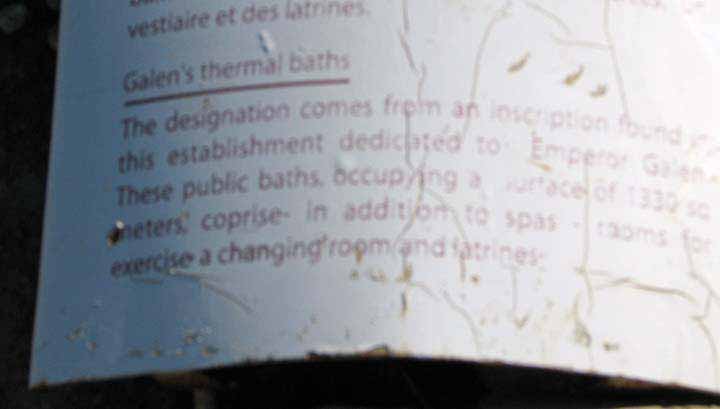
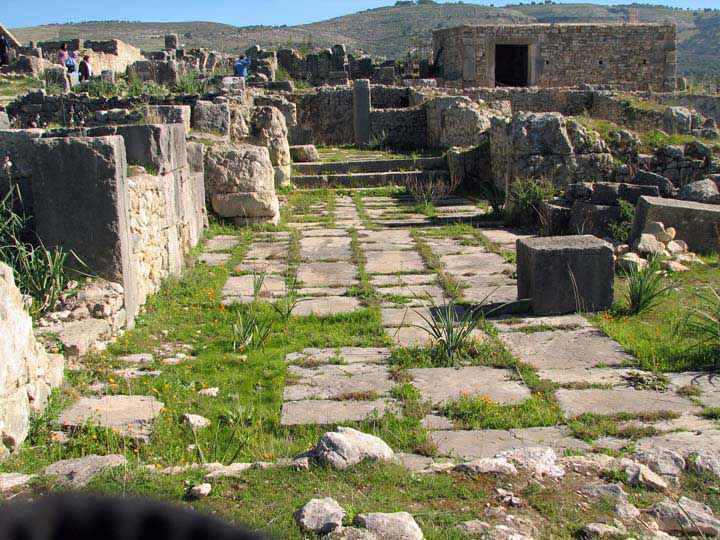
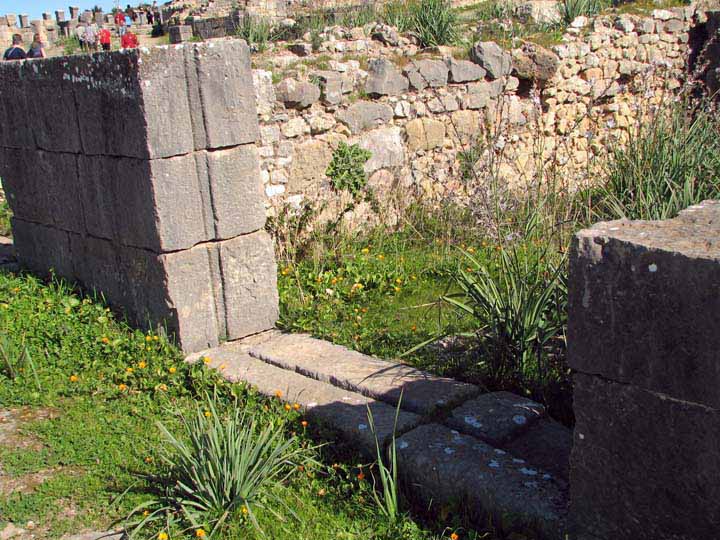
Stone walkways provided the town with foot traffic
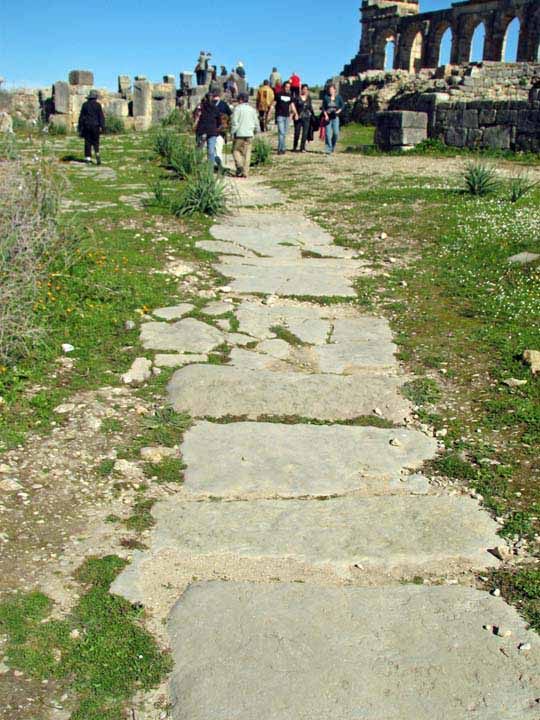 There are many example of stone work
There are many example of stone work
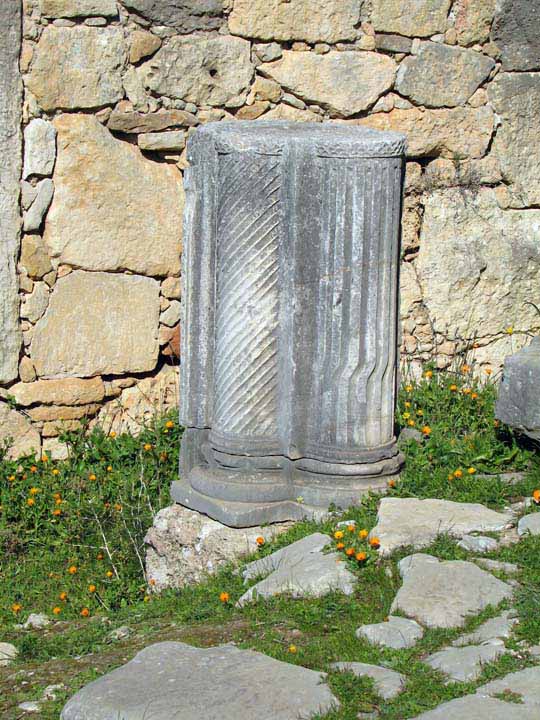
A drain provides a colorful picture
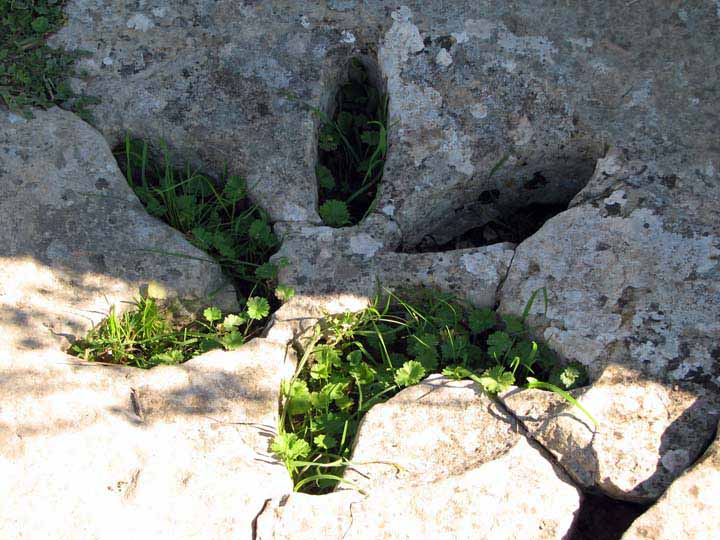
The Forum
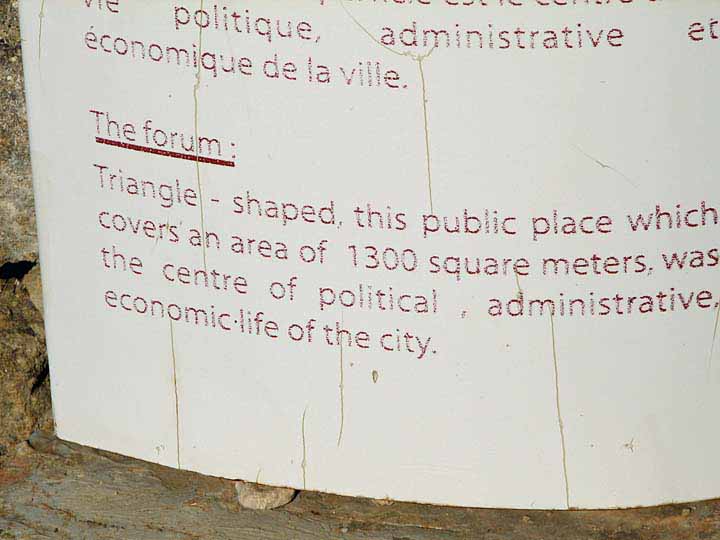
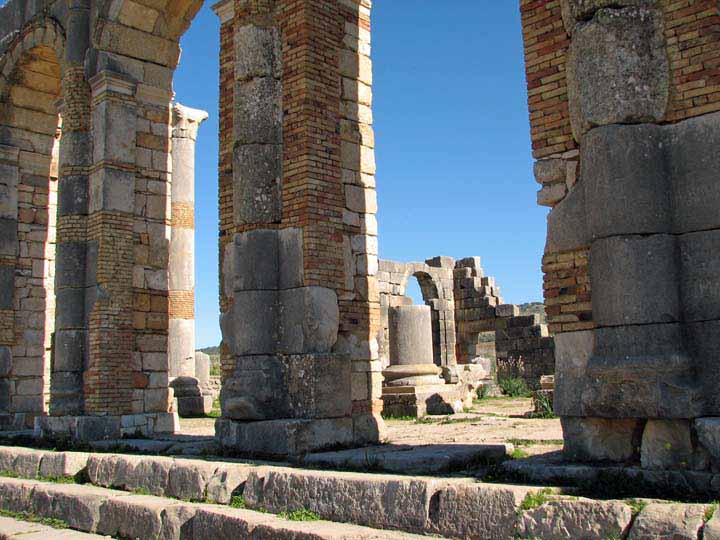
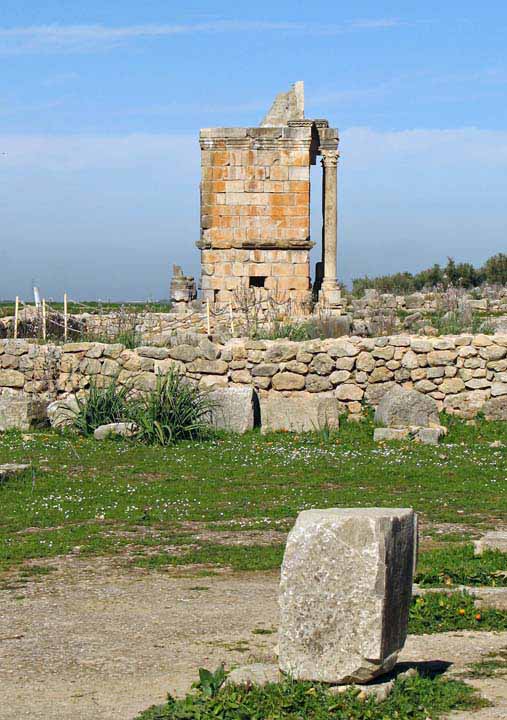
Our group of "legislators" fill the Forum steps
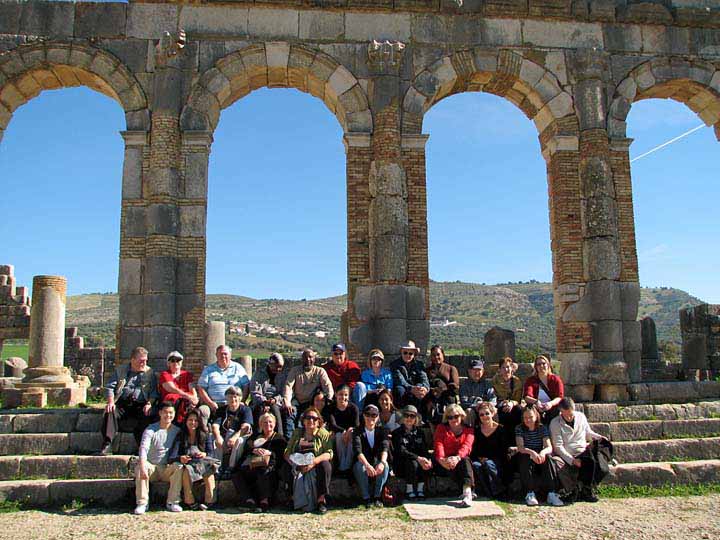
The Forum has a large government area
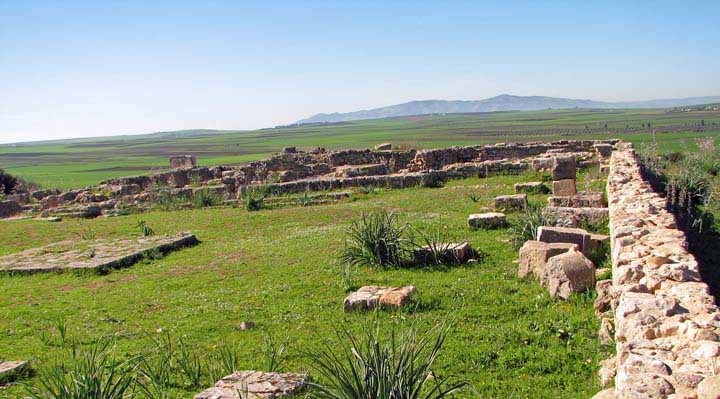
We enter another area with outstanding, if neglected, mosaics
The House of the Acrobat
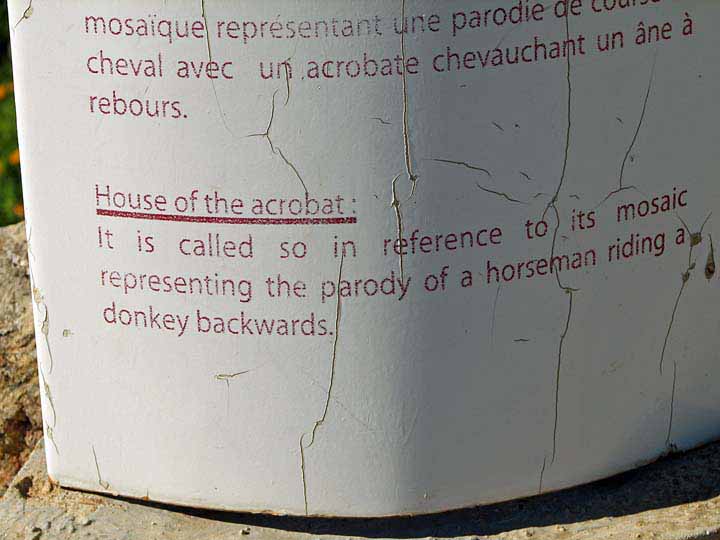
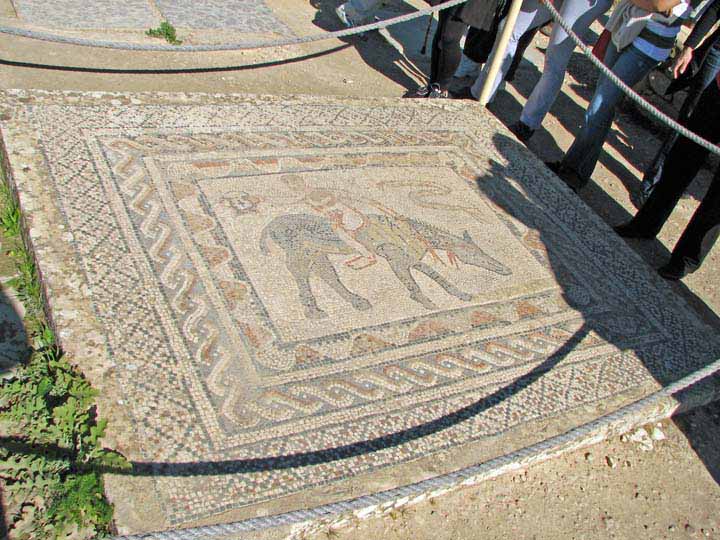
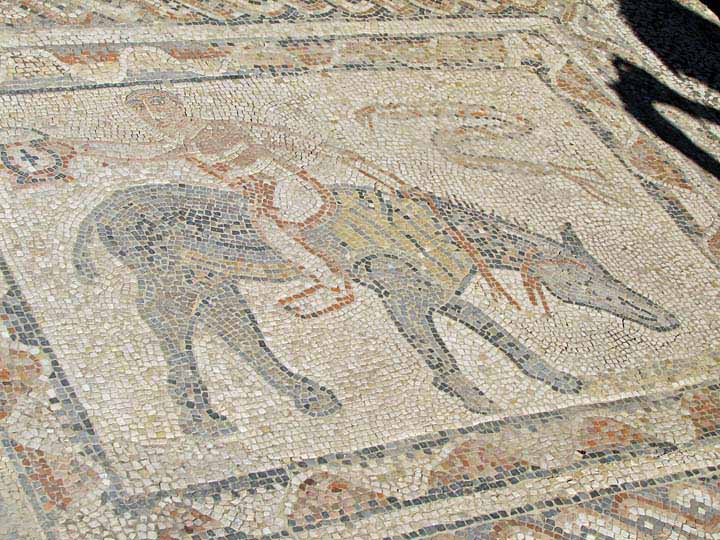
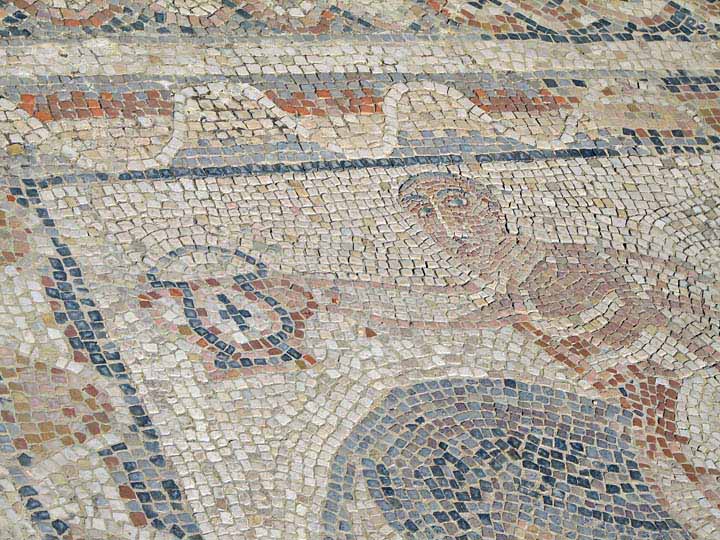
The Fountain
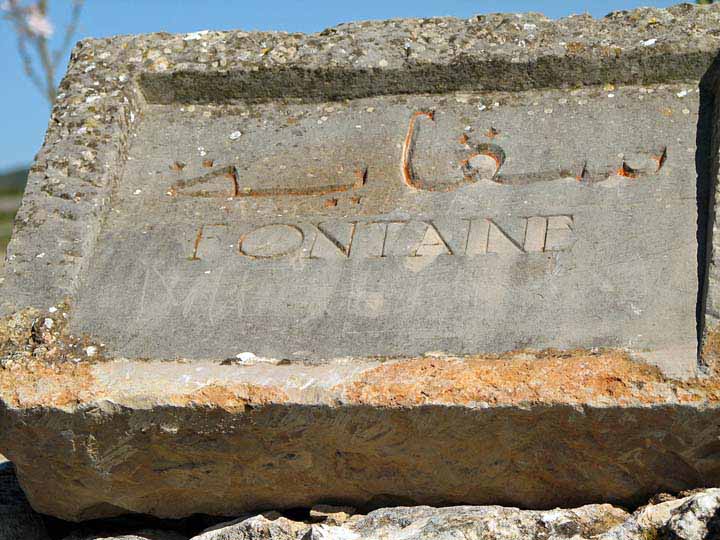
These mosaics represent swimmers and sea creatures
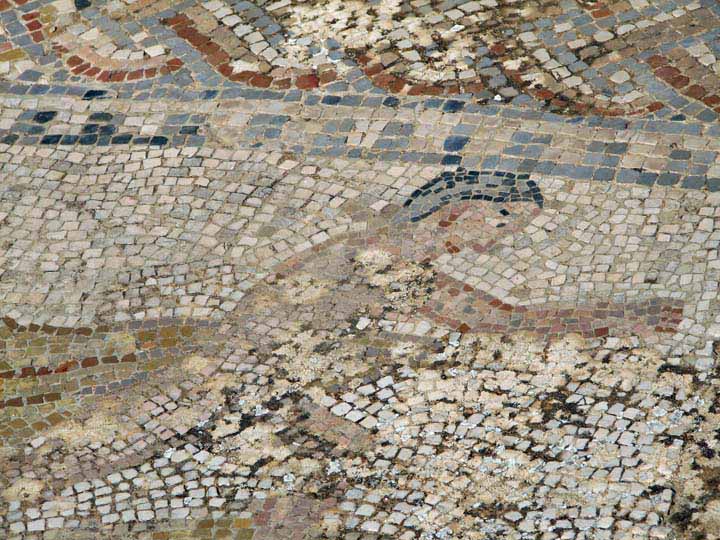
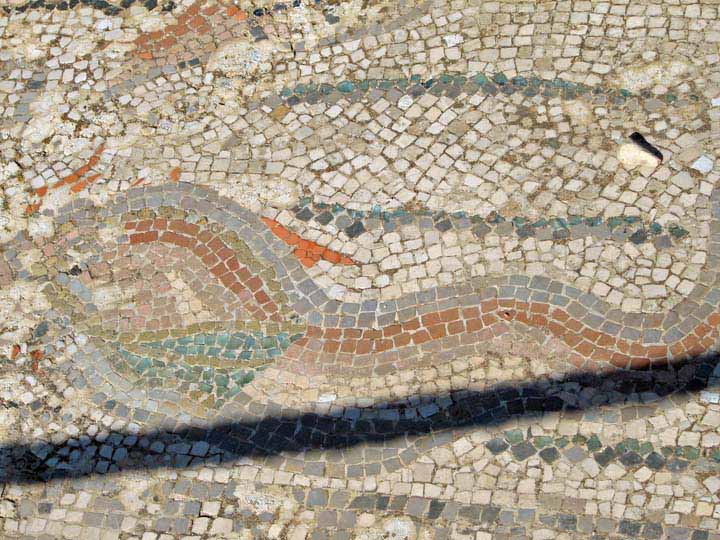
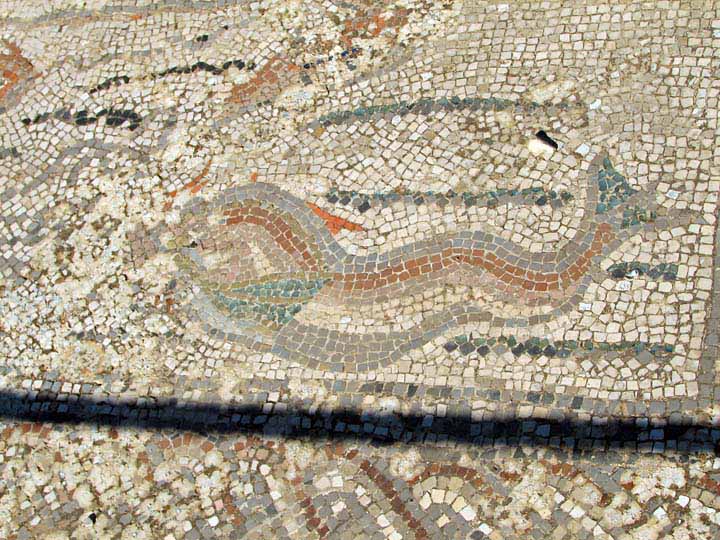
Elaborate spillways provide for water movement
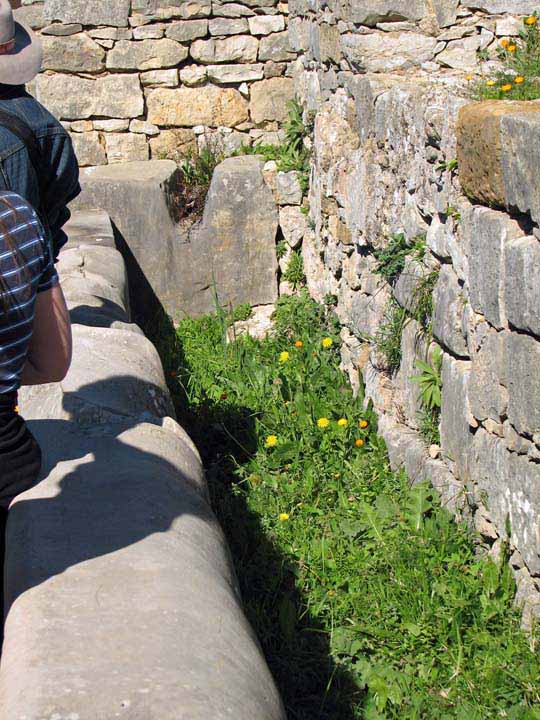
Arch of Caracalla
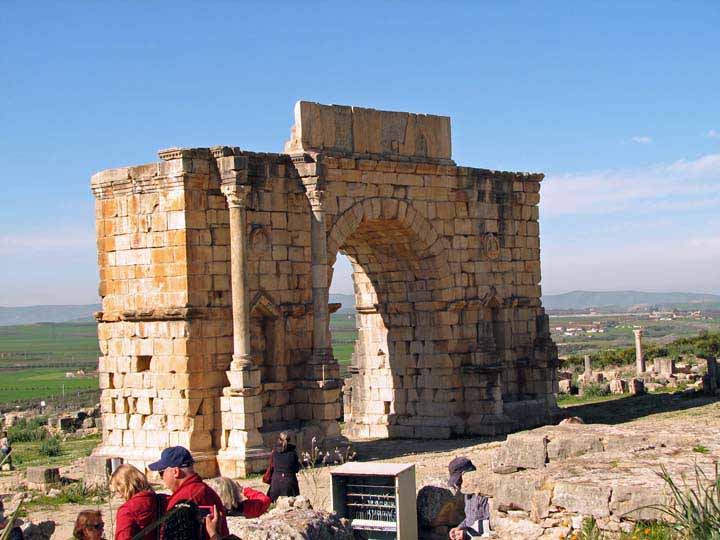
I've included a number of picture of the Caracalla Arch because of its majesty
and the details that remain - both portraits and inscriptions
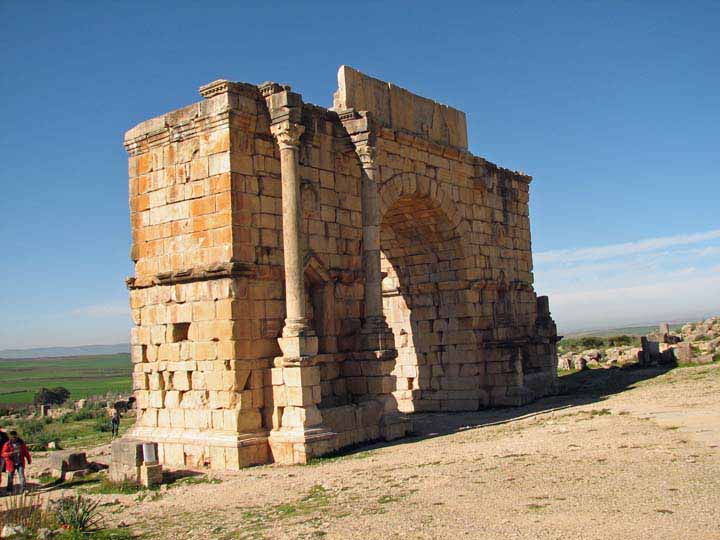
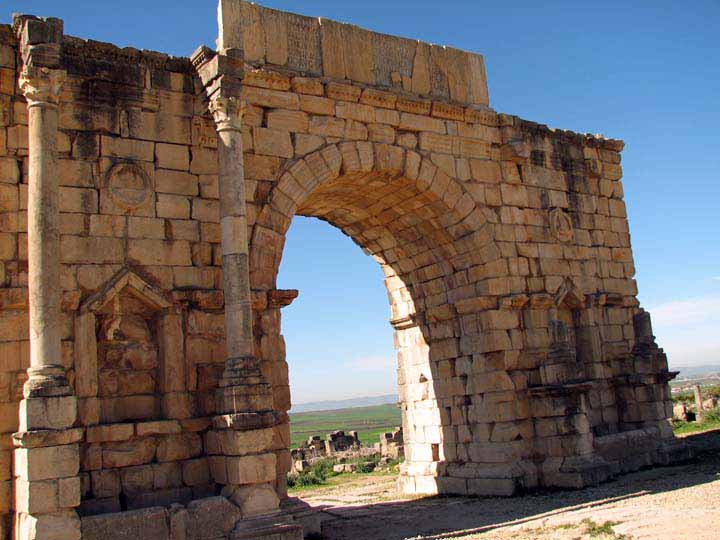
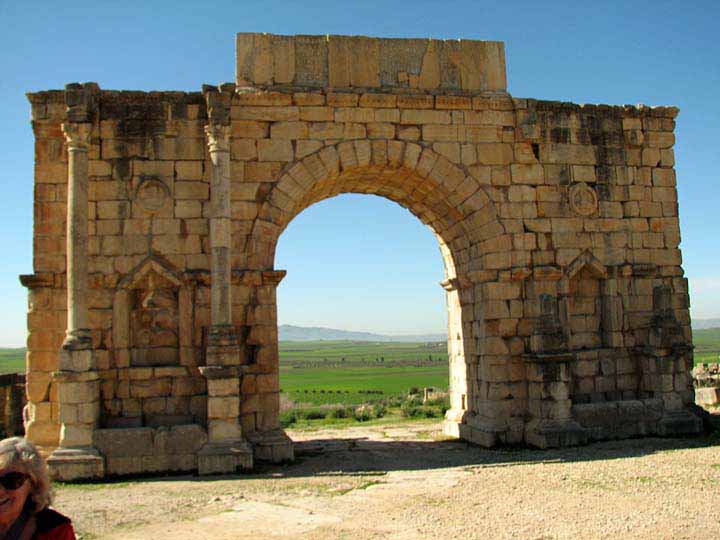
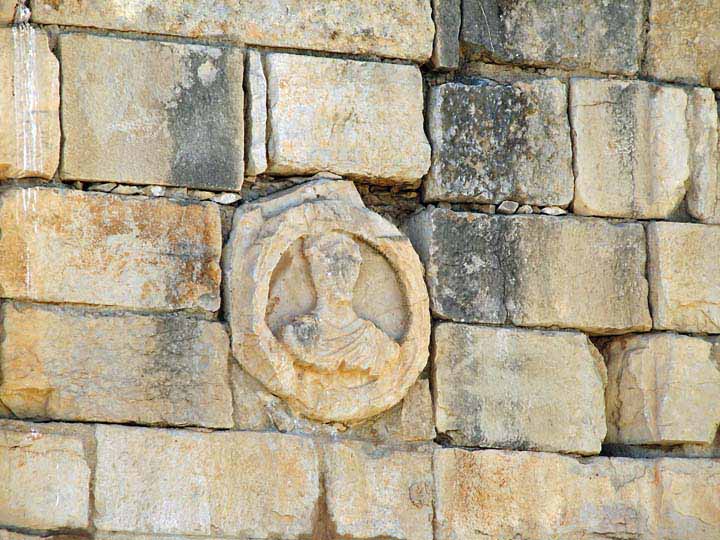
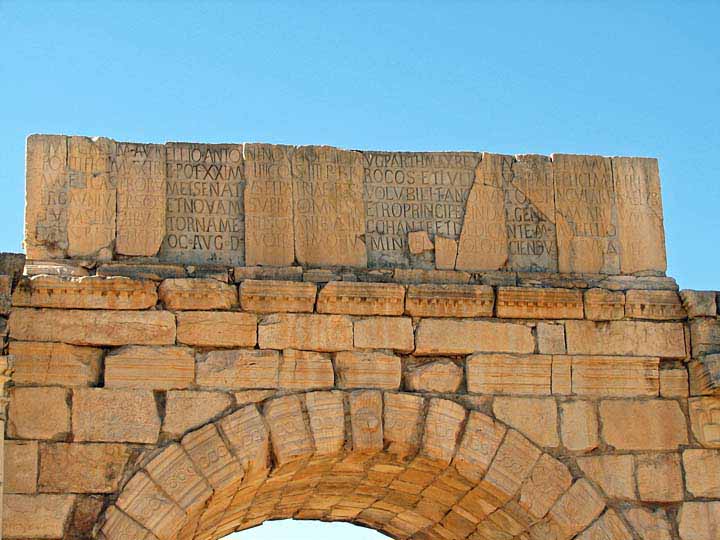
The square
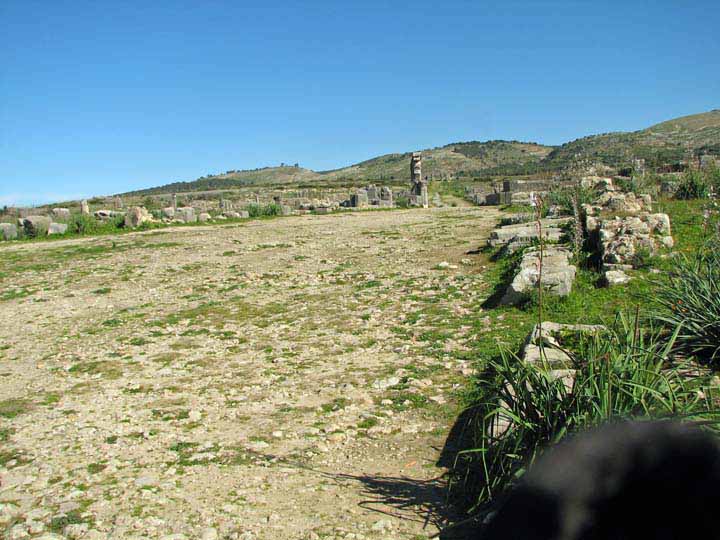
Street from a city gate
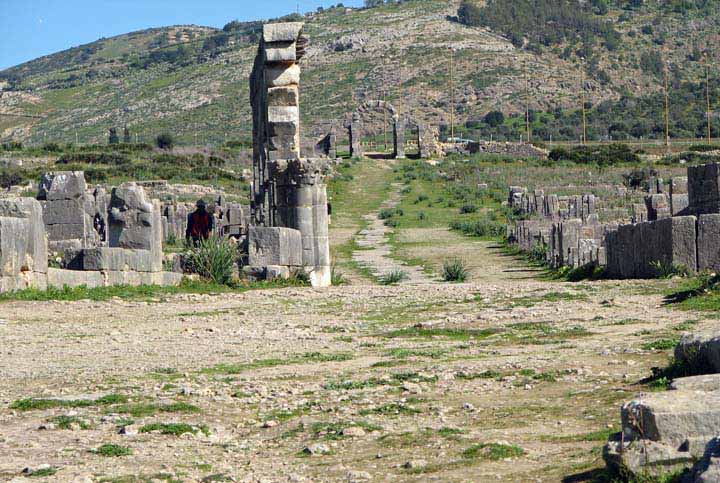
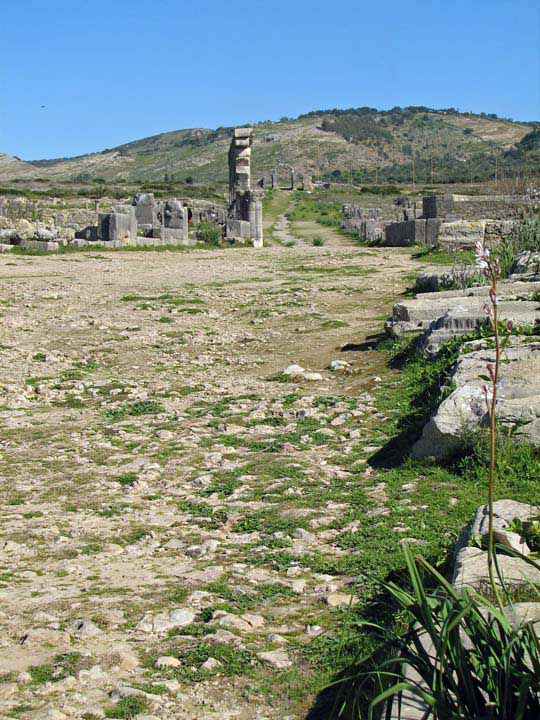
Walking the town
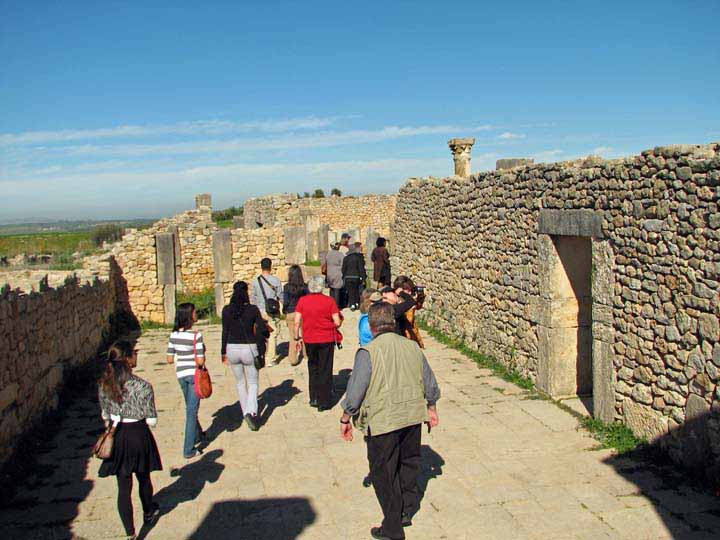 Impressive doors to homes
Impressive doors to homes
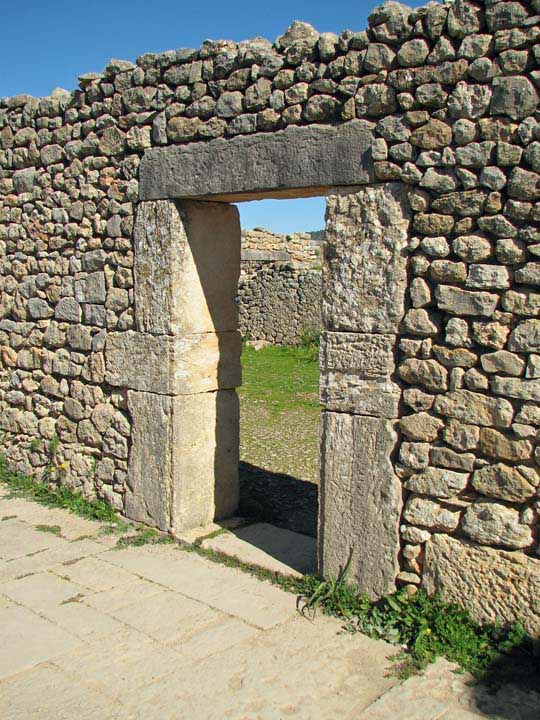
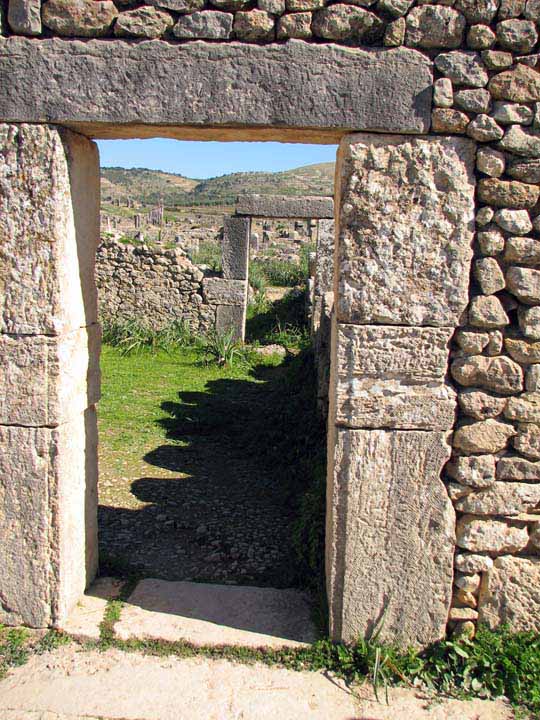
Doors between rooms
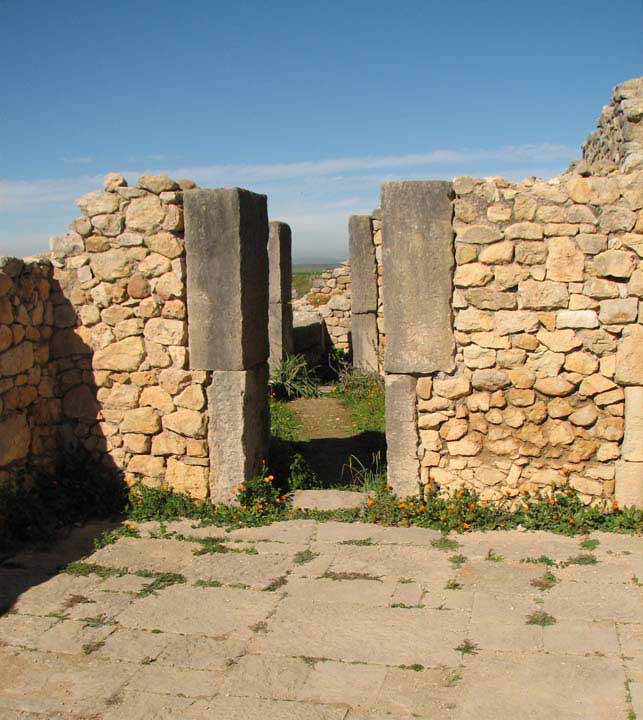
Beautiful columns
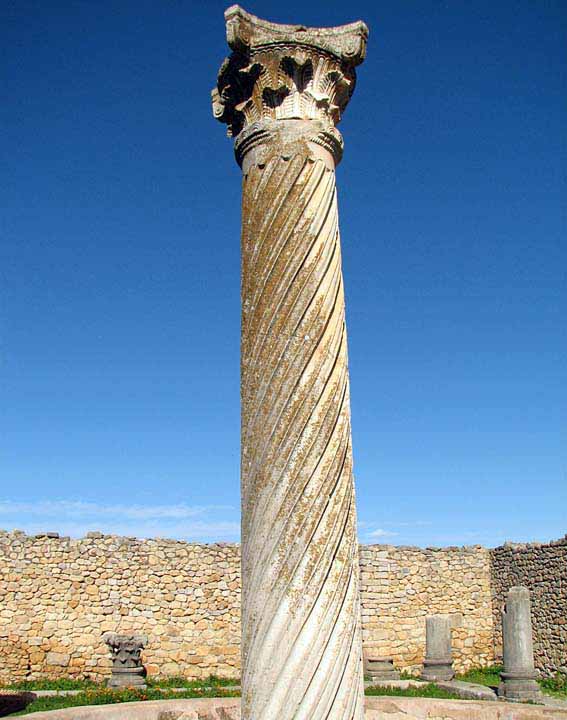
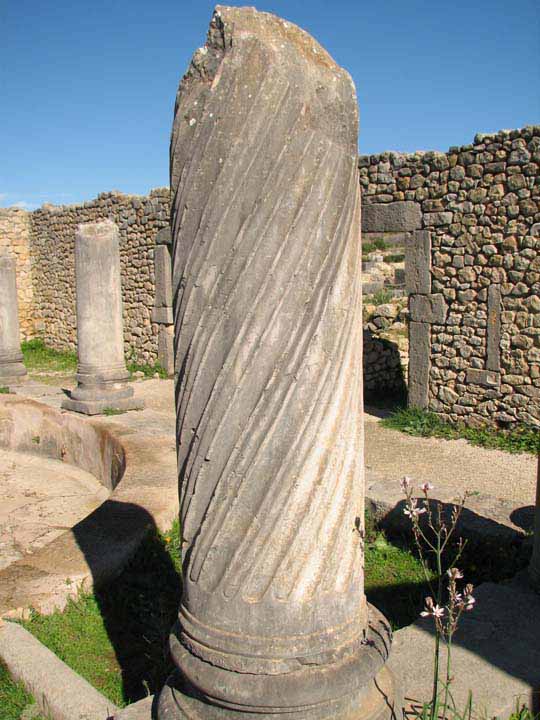
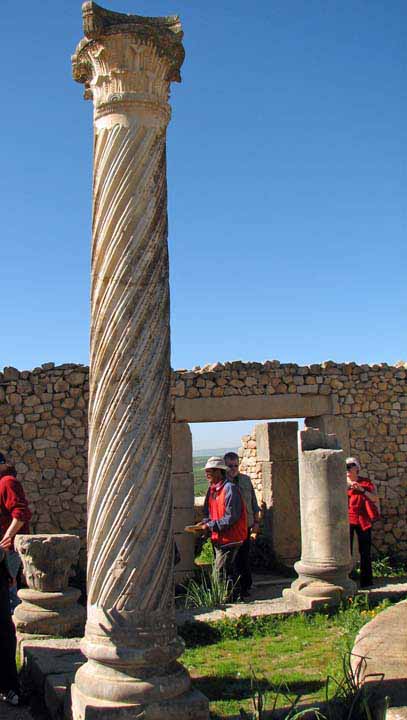
Notice some doorways were on guides
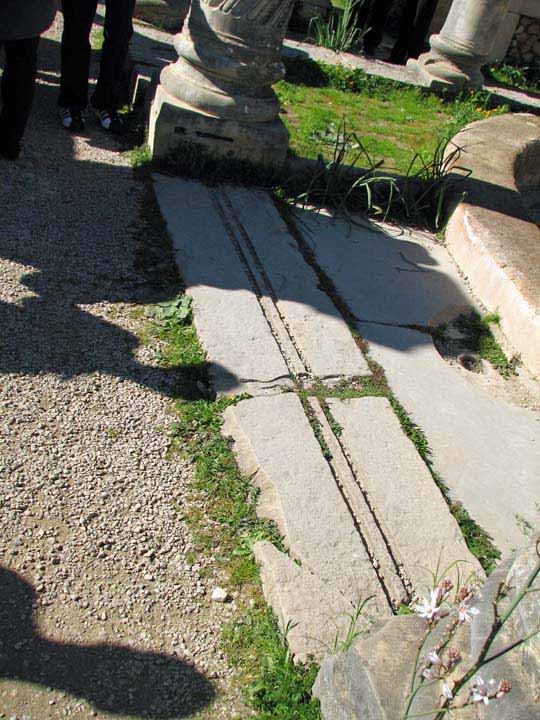
A central pool
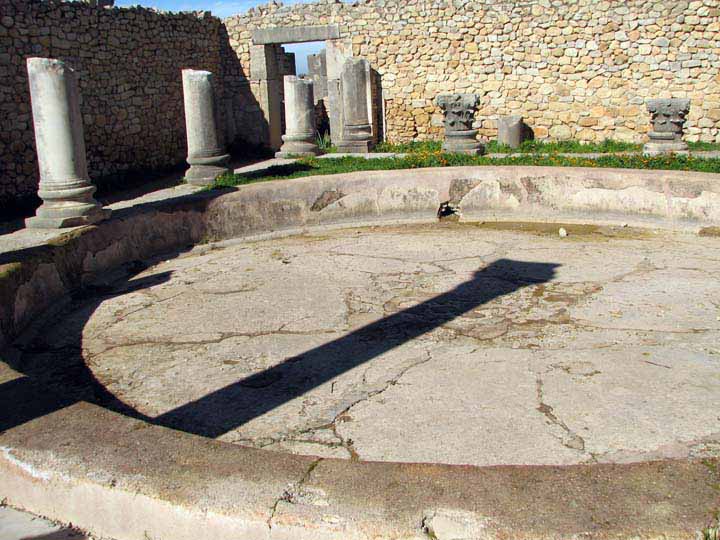
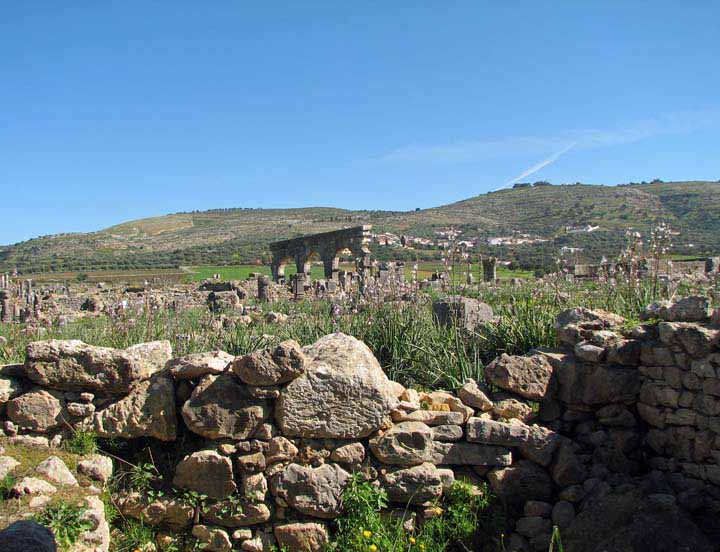
The house of the Jumper
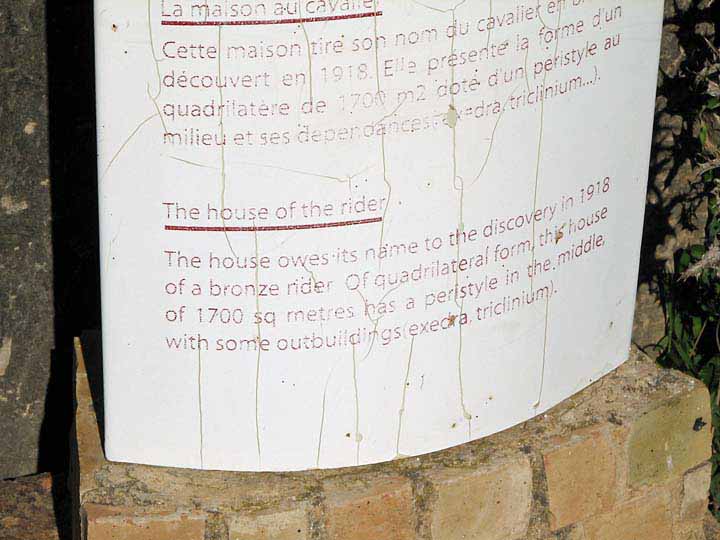
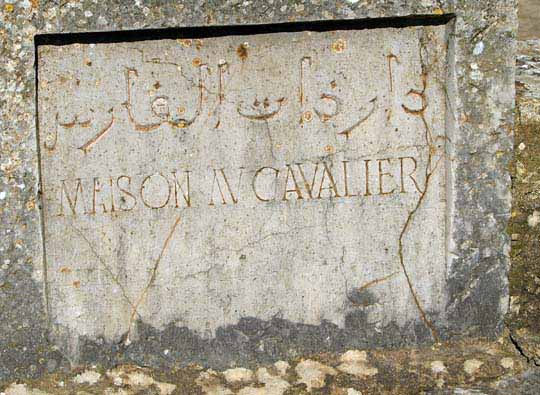
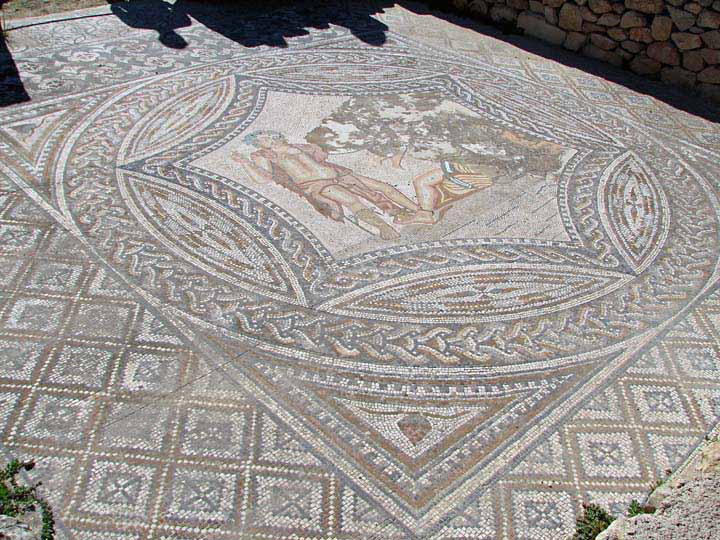
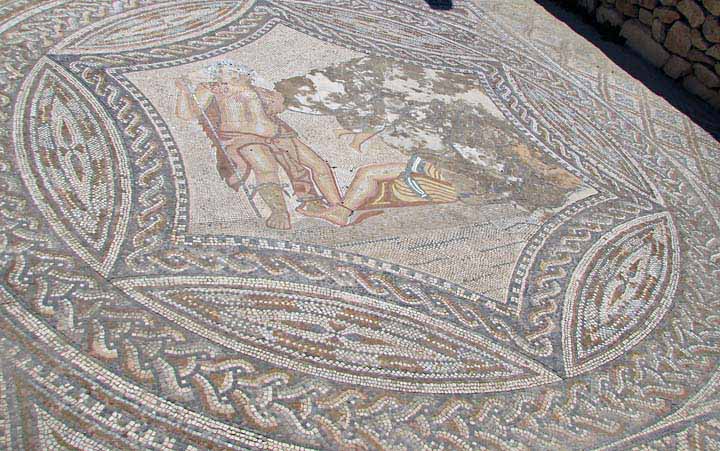
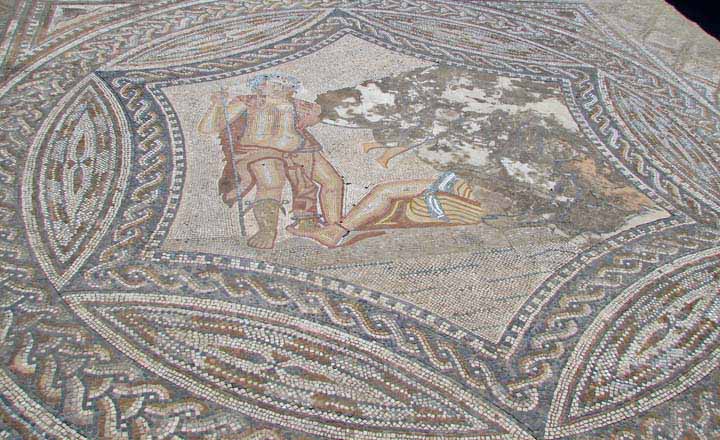
Rails used during earlier excavations
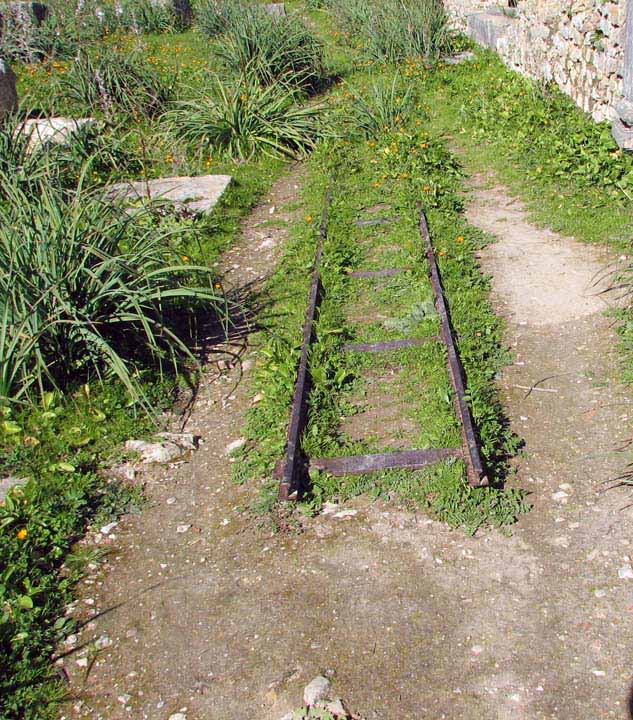
The House of the Labors of Hercules
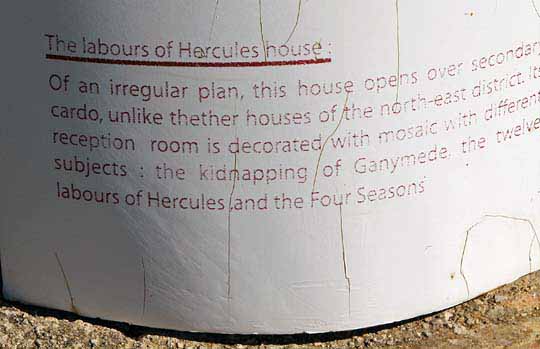
A central bath with seating in the middle as well as the sides
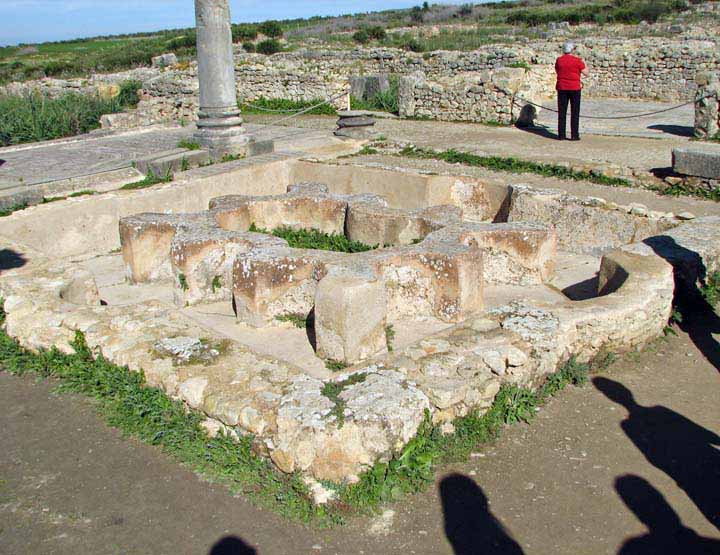
Some of the patterned mosaics of this famous home
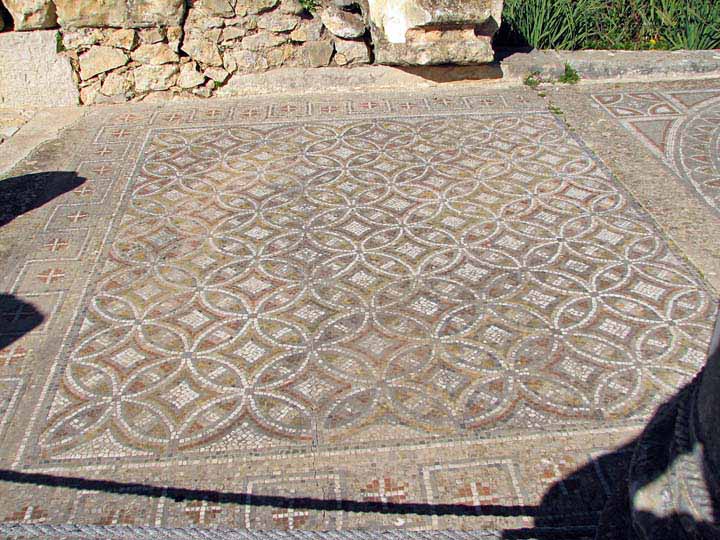
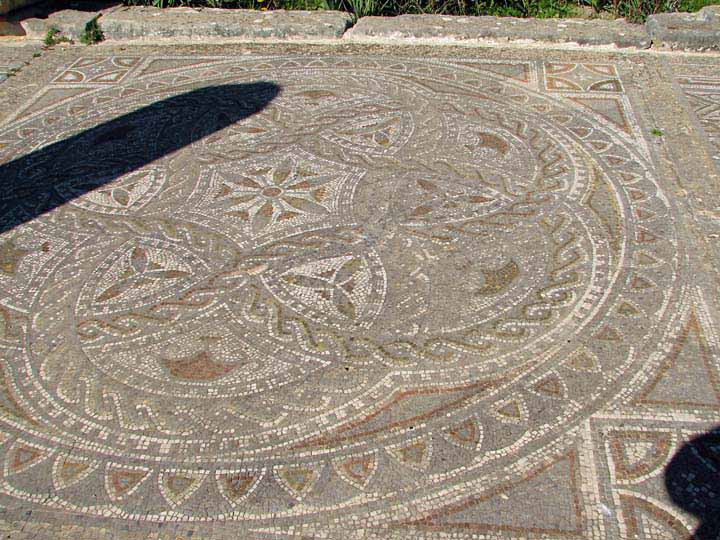
In the center of the main mosaic - Hercules
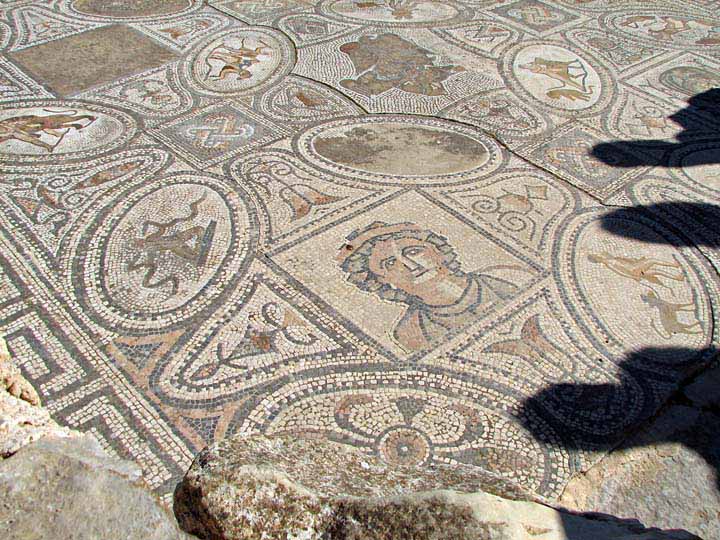
He is surrounded by many of his famous deeds - his "labors"
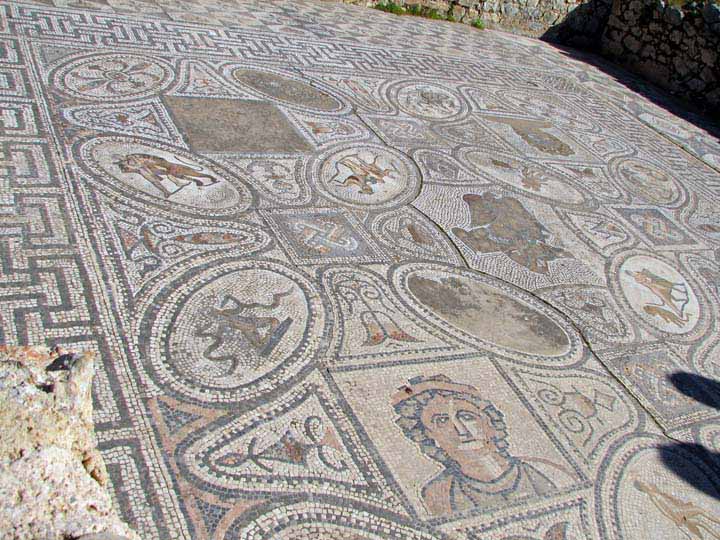
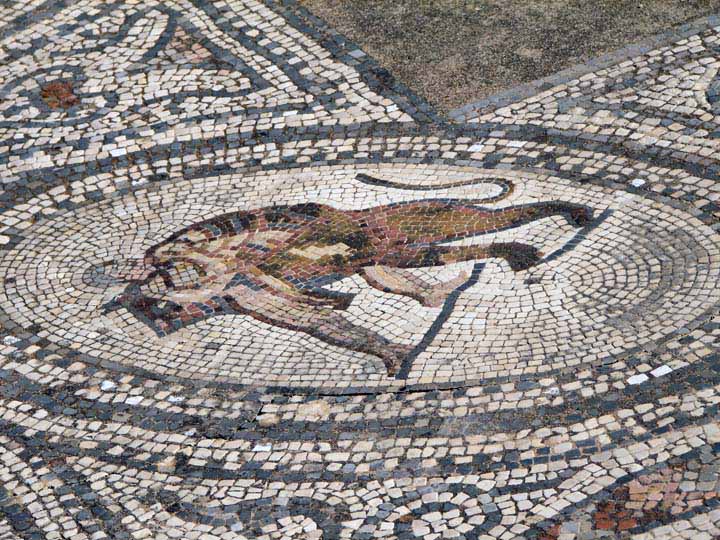
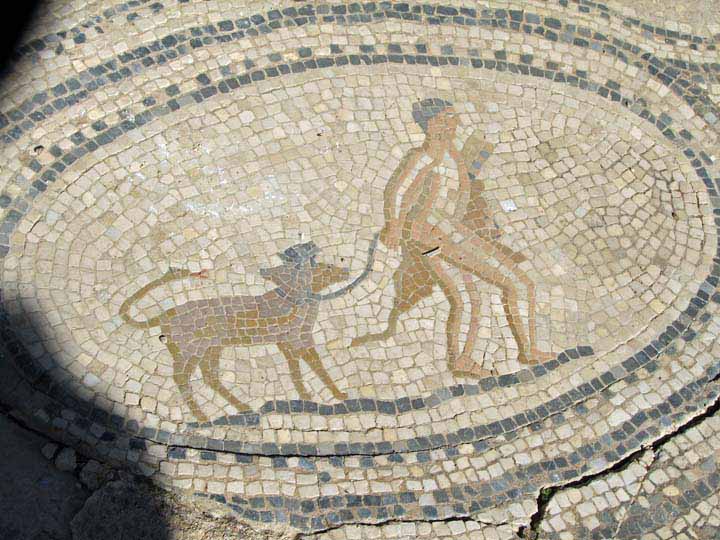
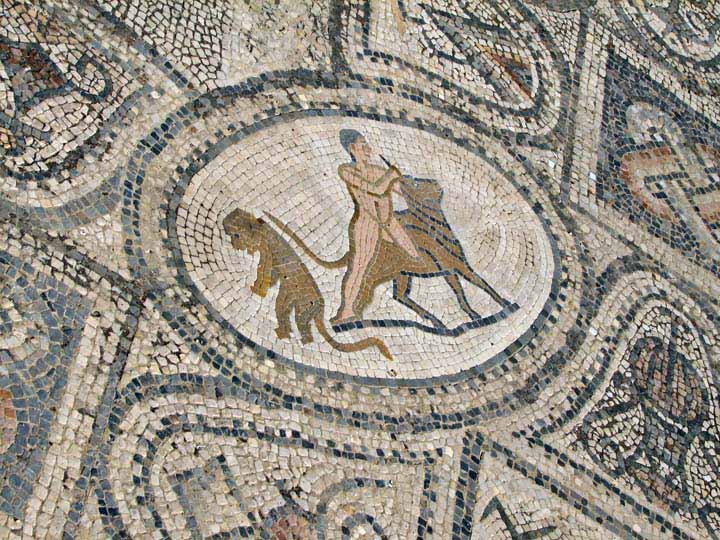
In another home
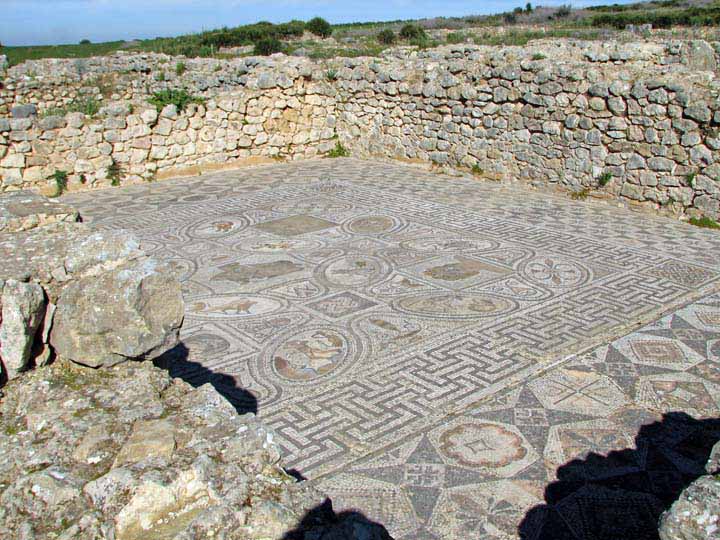
A fountain with mosaic corners
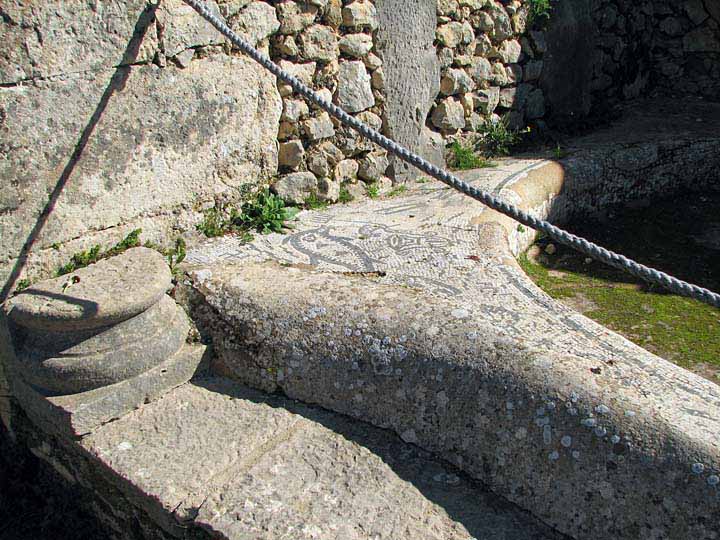
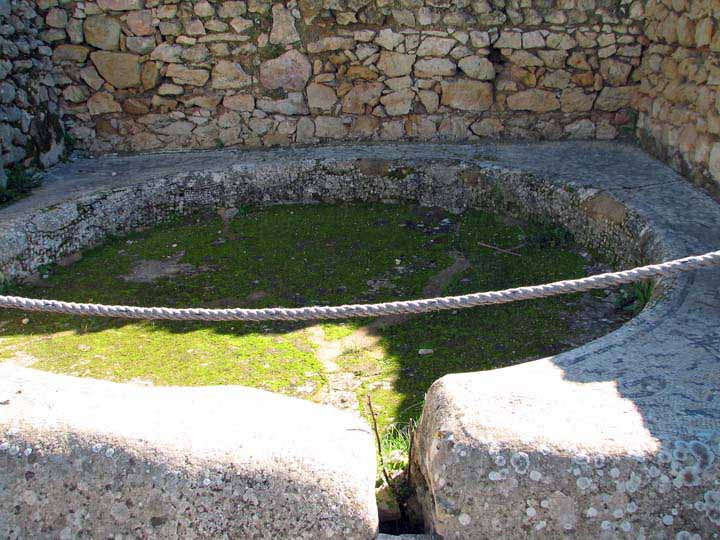
We cross the main street to another section
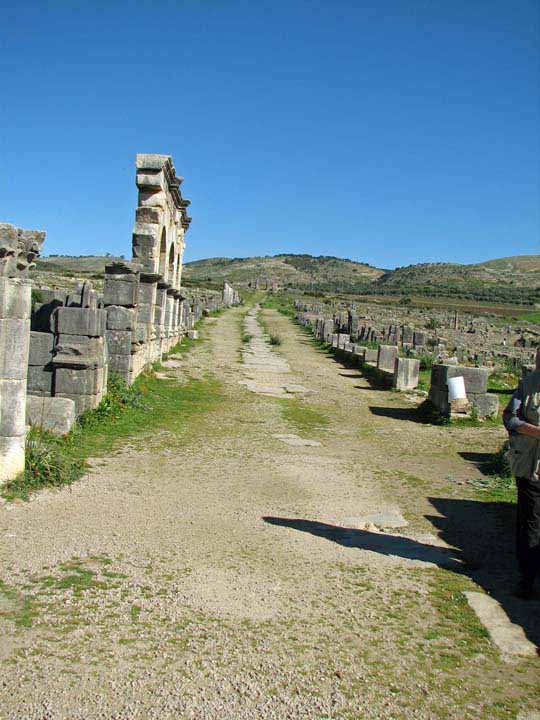
The Triumphal Arch
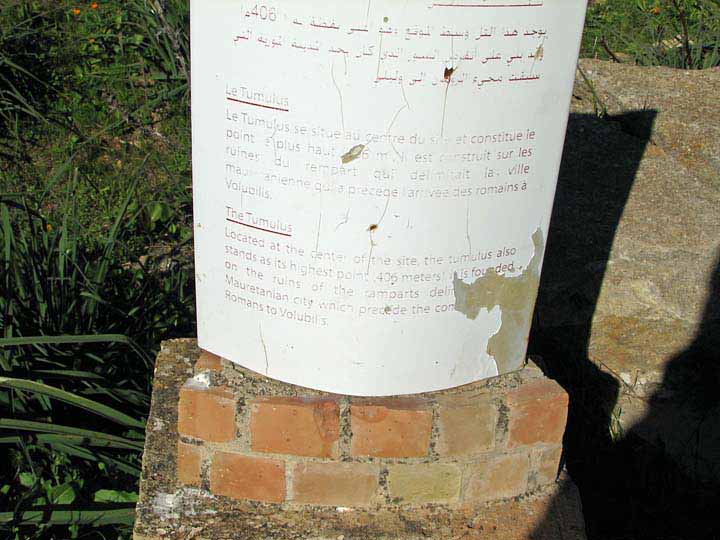
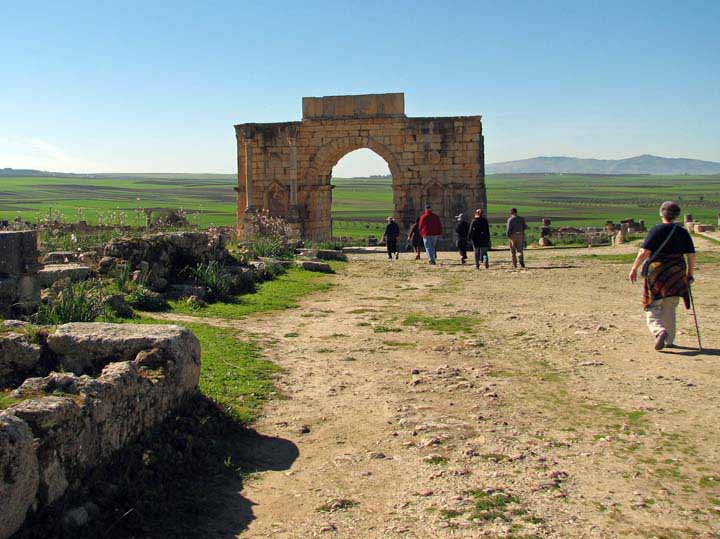
As we start our walk our, we catch views of the larger area
As usual, I'm attracted by the wild flowers blooming everywhere
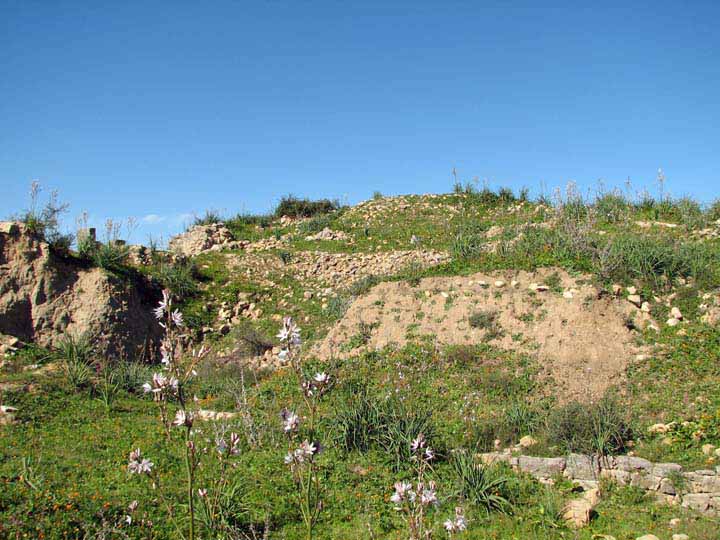
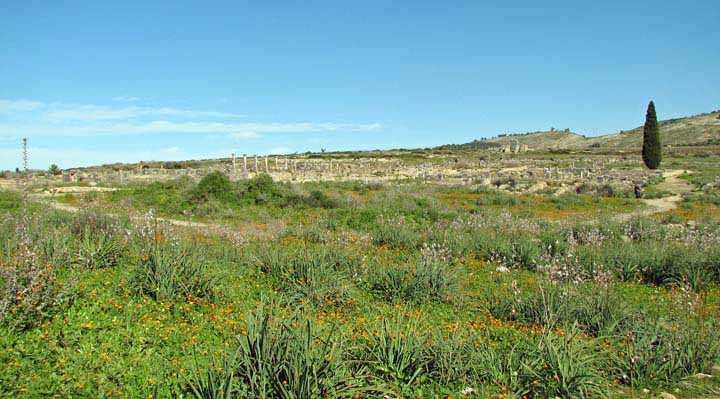
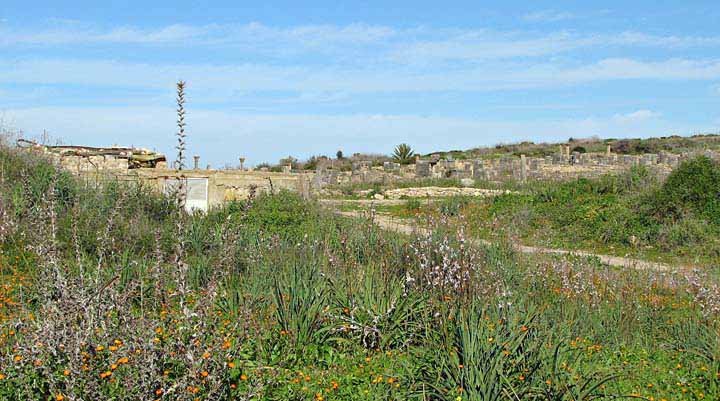
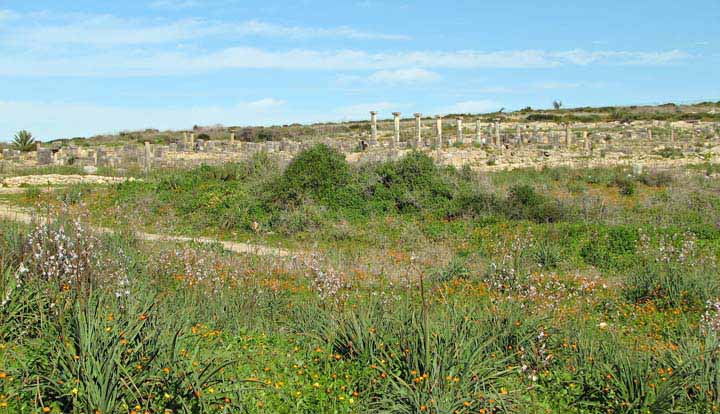
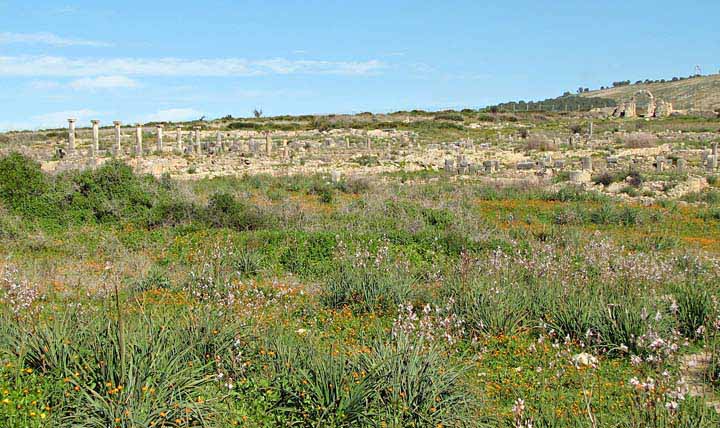
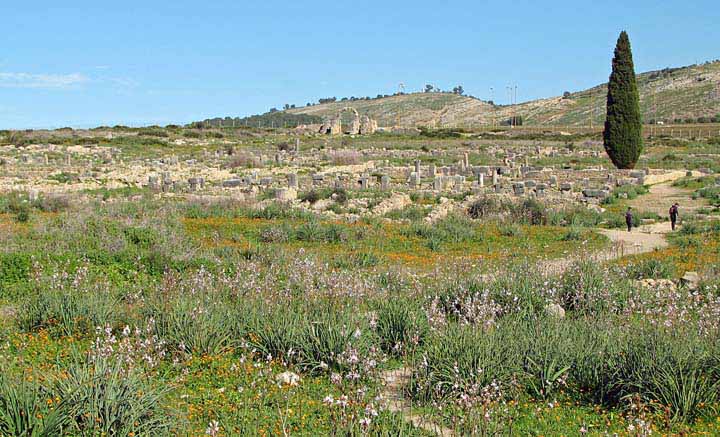
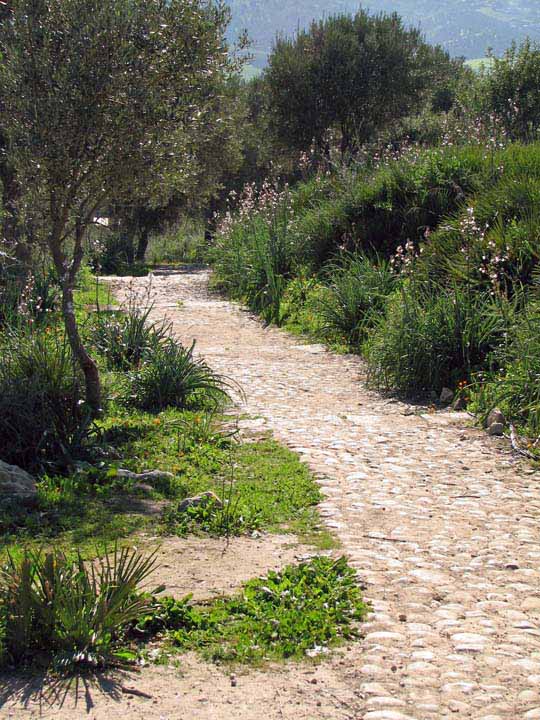
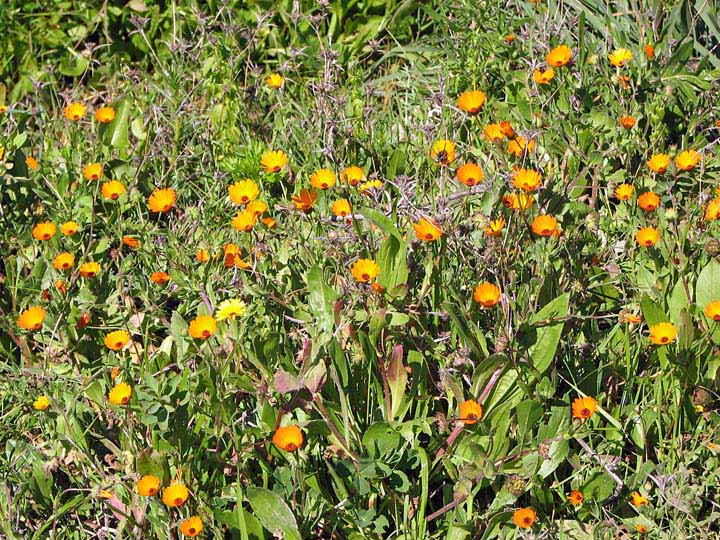
Here we see an unusual vine. At first we thought it had a dusting of a type of mold or disease
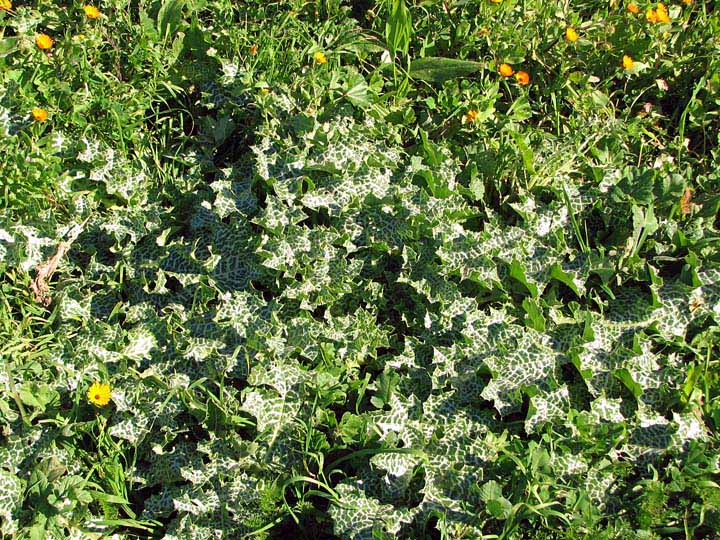
Upon closer examination the veins contrast with the color of the leaves
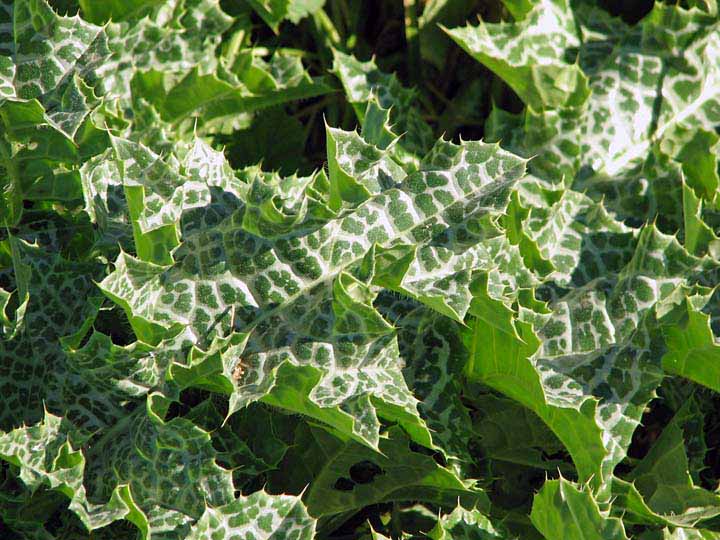
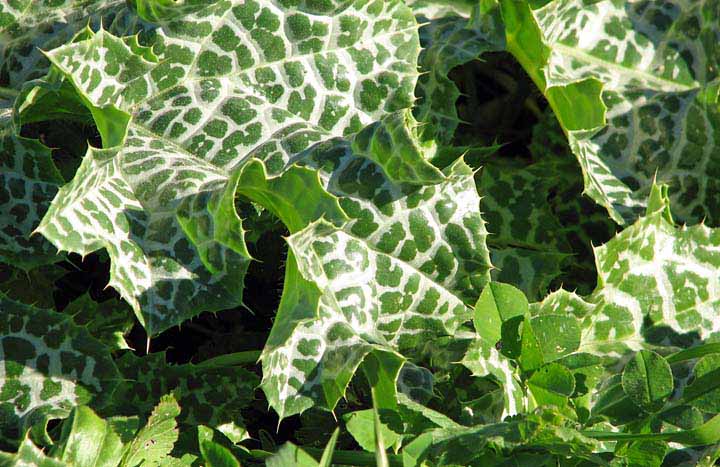
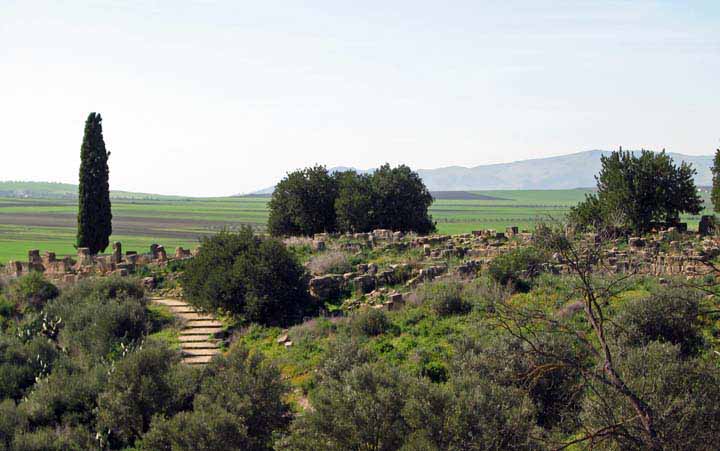
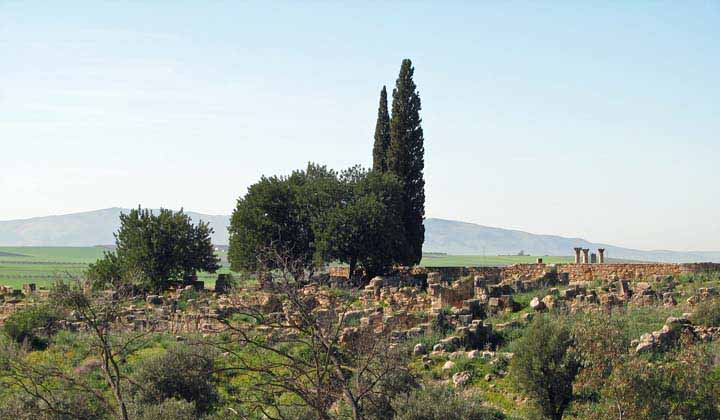
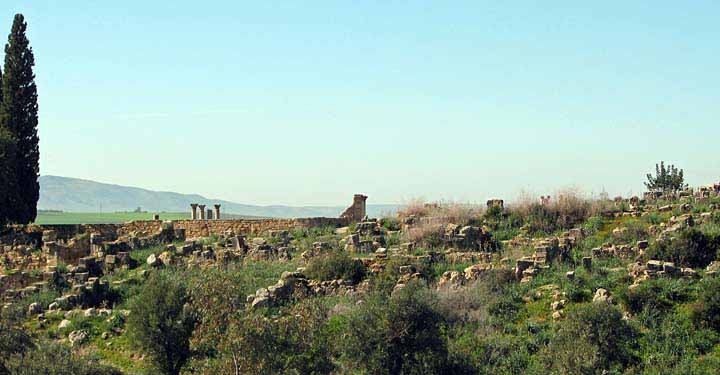
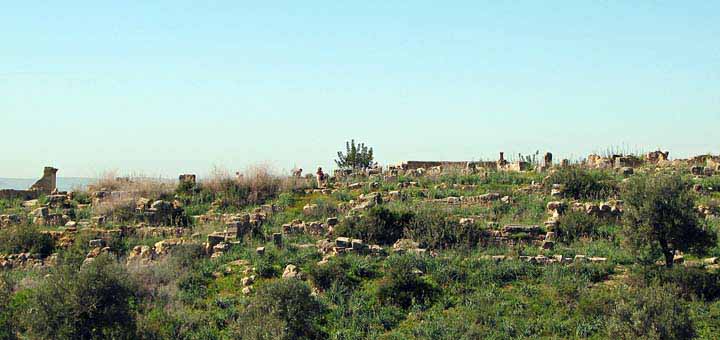
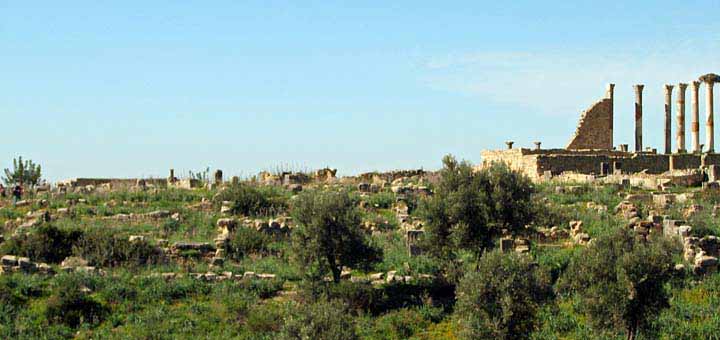
The Basilica
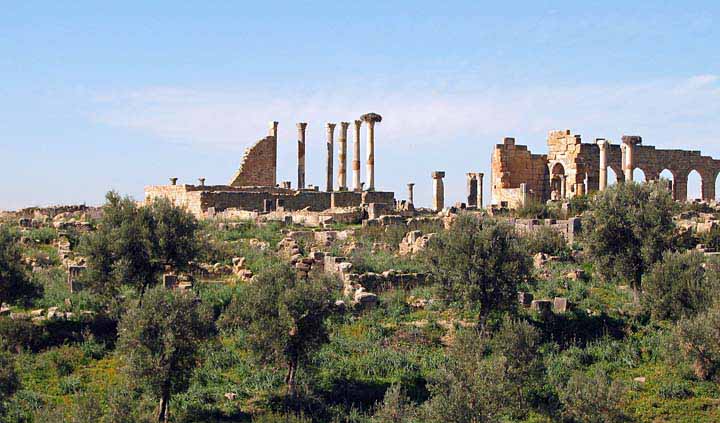
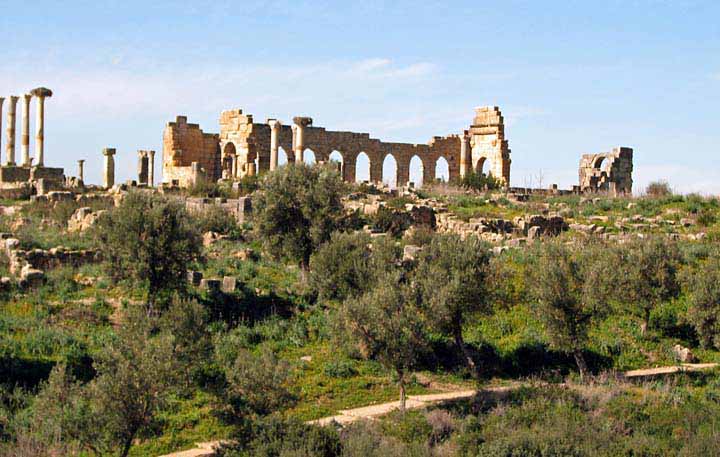
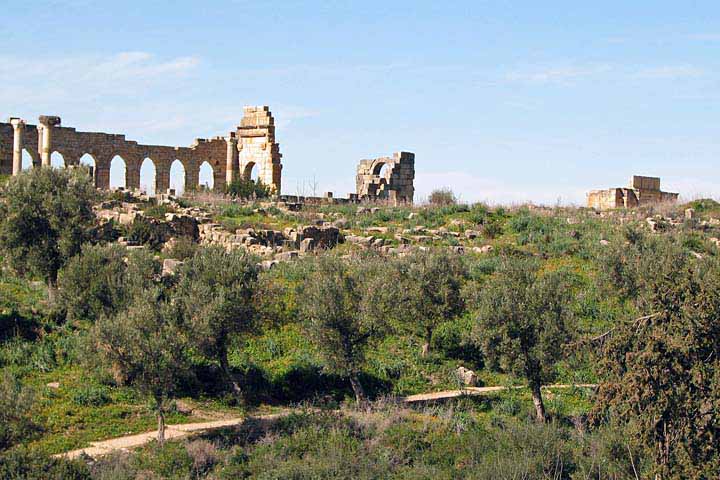
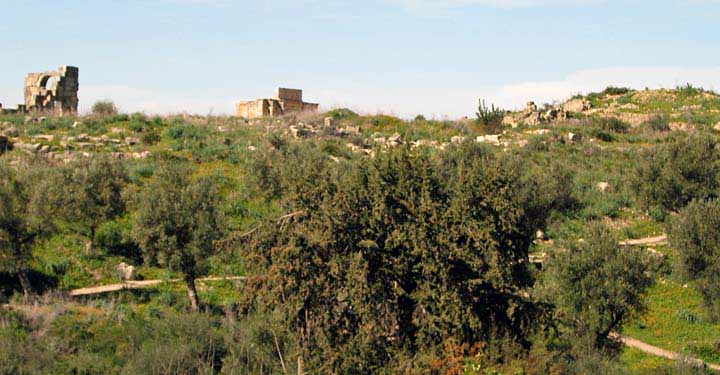
With this last view, we leave

~ ~ ~ ~ ~ ~ ~ ~ ~ ~ ~ ~ ~ ~ ~ ~ ~ ~ ~ ~ ~ ~ ~ ~ ~ ~ ~ ~ ~ ~ ~
So we're on the way to Meknes. There's some more of the picturesque countryside; this time we see more hilly, rocky land.
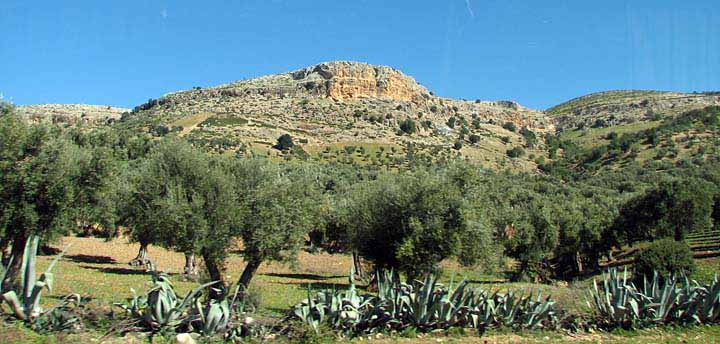
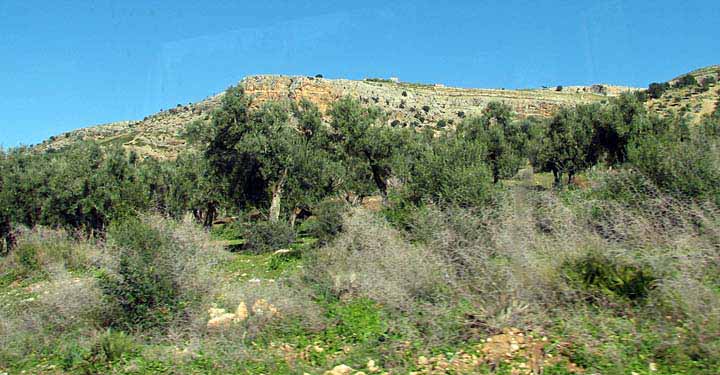
We see more sheep and agricultural practices - donkey transportation
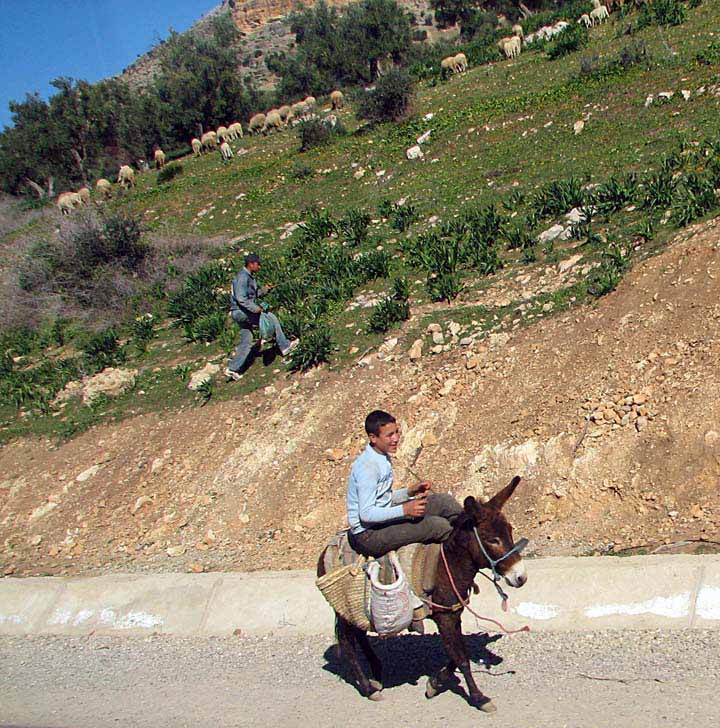
One
small town we pass has their old grinding wheel at the entrance to the town
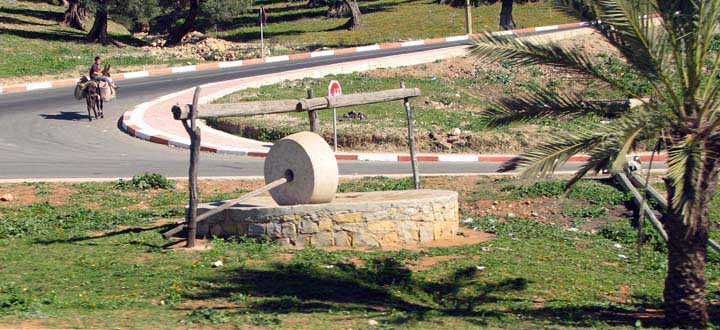
Sacred
sites of Morocco and Islamic pilgrimage from Northwest Africa
Islam was brought to North Africa by early Arab warriors conquering territories and by traders voyaging back and forth along ancient trans-Saharan caravan routes. The first African pilgrimages to Mecca were from Cairo during the era of the Fatamid dynasties (909-1171). These early Muslims, traveling in camel caravans across the Sinai Peninsula to the Hijaz region of Arabia (where Mecca is located), established a route that was used continuously until the 20th century.
By the 13th century, pilgrim routes across
North Africa from as far west as Morocco linked with the Cairo caravan to Mecca.
Three caravans were regularly started from the Moroccan towns of Fez, Marrakech
and Sijilmasa. They often combined on the route and proceeded under a united
leadership eastward across the North African deserts. Composed of pilgrims,
merchants and guards, the great caravans often had a thousand or more camels.
Covering perhaps twenty miles a day and visiting the fabled Islamic mosques of
Tlemcen (Algeria) and Kairouan (Tunisia), they took many months to reach Egypt.
Scattered throughout the deserts, coastlines
and mountains of Morocco are sacred sites and pilgrimage places specific to the
indigenous Berber culture and the Roman, Jewish and Islamic people who settled
in the northwest reaches of the African continent.
In 788 (or 787) AD, an event occurred that
was to forever change the trajectory of Moroccan culture. Idris ibn Abdallah (or
Moulay Idris I as he is called in Morocco), the great-grandson of the Prophet
Muhammad fled west from Baghdad and settled in Morocco. The heir to the Umayyad
Caliphate in Damascus, Moulay had participated in a revolt against the Abbasid
dynasty (which had usurped the leadership of the Umayyad dynasty and
precipitated the split between the Shia and Sunni sects). Forced to flee Abbasid
assassins soon thereafter tried to establish himself among the remnants of the
old Roman city of Volubilis. Before long he moved to the nearby region of
Zerhoun, where he founded the town that is now called either Moulay Idris or
Zerhoun, and which is the most venerated pilgrimage site in all of Morocco.
Moulay Idriss
The Mausoleum of Moulay Idriss is one of the most spectacular devotionals of more than six hundred religious pilgrimages to saintly shrines in Morocco.
In 788, a
descendant of the Prophet Mohammed, named Moulay Idriss, was proclaimed king by
the Berber tribes. Moulay Idriss quickly became powerful and influential but was
murdered by a rival. The village which is the location of his tomb is now called
Moulay Iddriss and is one of the most sacred shrines in Morocco. The son Moulay Idriss, Moulay Idriss II took over and founded the present city
of Fez, the capital at that time.
Throughout
the centuries the mausoleums (burial sites) of Moulay Idris I in Zerhoun and
Moulay Idris II in Fez have become the primary pilgrimage sites in Morocco.
Originally it was thought that Idris II was buried, like his father, in Zerhoun,
but the discovery in 1308 of an uncorrupted body in Fez, gave impetus to the
establishment of a cult of Moulay Idris II. Local women who come to light
candles and incense, and pray for ease in childbirth venerate the cult's shrine.
The Sultan Moulay Ismail rebuilt the shrine itself in the 17th century.
The existence of pilgrimage places, other than the holy shrine of the Ka'ba in Mecca, is a controversial subject in Islam. Orthodox Muslims, following the dictates of Muhammad's revelations in the Koran, will state that there can be no other pilgrimage site than Mecca. Likewise, Orthodoxy maintains that the belief in saints is not Koranic. The reality, however, is that saints and pilgrimage places are extremely popular throughout the Islamic world, particularly in Morocco, Tunisia, Iraq and Shi'ite Iran.
A
typically Moroccan phenomenon is maraboutism. A marabout is either a saint or
his tomb. The saint may be a figure of historical importance in Moroccan culture
(such as Moulay Idris I) or a Sufi mystic of sufficient piety or presence to
attract a following. Dozens of saints from ages past are still revered by
Moroccans, and their musims, or feast days are the occasion for the assembling
of large crowds at the za'wiya of the saint. Besides their religious functions,
Musims feature horse races, folk dancing, song recitals and colorful markets
filled with native crafts. The two most important musims are those of Moulay
Idris the elder in Zerhoun on August 17 and Moulay Idris the younger in Fez in
mid-September.
Besides the mausoleums of Moroccan saints, certain mosques also attract large numbers of pilgrims. Primary among these are the Kairouine mosque of Fez and the Kutubiya (Koutoubia) mosque of Marrakech.
~ ~ ~ ~ ~ ~ ~ ~ ~ ~
I tried to get pictures of Moulay Idris, but as we were moving on the bus, I wasn't very successful. The pictures I did take follow - sorry to disappoint. The town is built on a fairly steep hill, and from the highway, you get a glimpse between trees and such
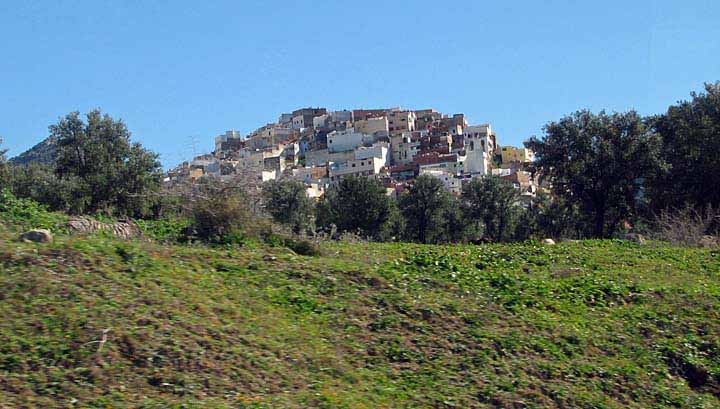
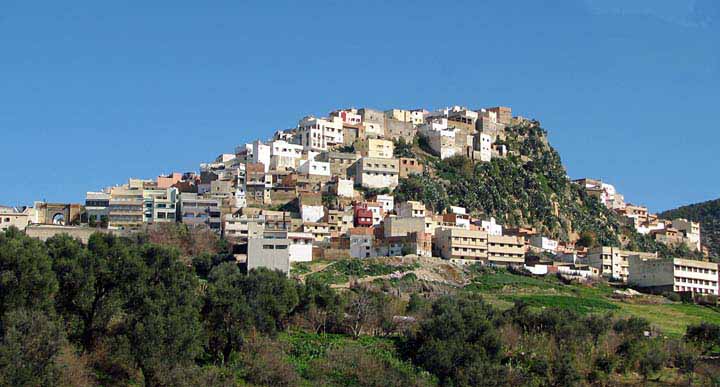
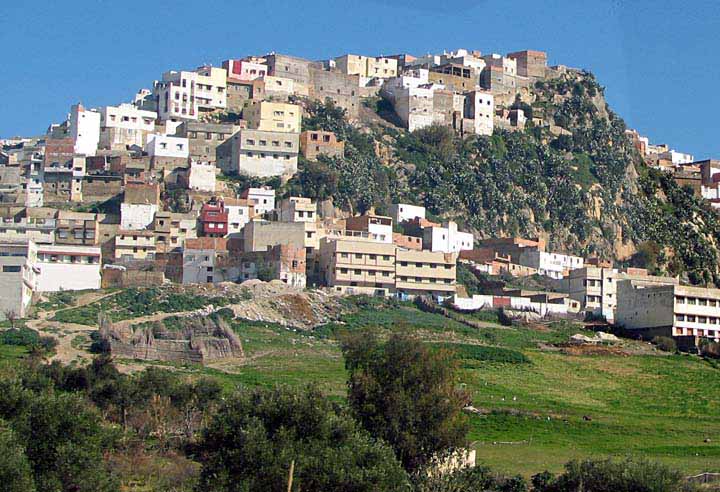
Alas I got no picture showing the shrine. As it is considered the most holy in Morocco , I did steal a picture from another website. The site is called Amazighroots, the page is labeled
Sacred Sites of Morocco, and the URL is - http://amazighroots.blogspot.com/2007/05/sacred-sites-of-morocco.html

I appreciate them sharing this picture of the green roofed holy site on the Internet.
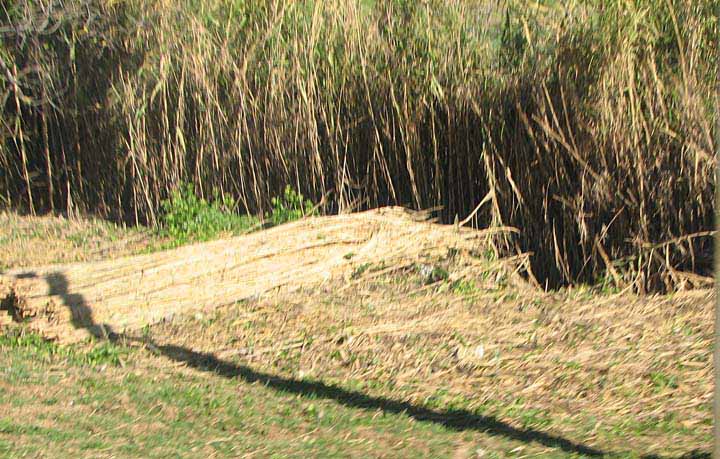
This picture is not apropos of anything in particular, other than these reeds are used very often to build fences around gardens, homes and other properties. This was the only clear (almost Clear) shot I got the entire trip.
Meknes
(Berber:
Meknas or Ameknas, French: Meknès,
Spanish: Mequinez) is a city in northern Morocco. Meknes
was the capital of Morocco under the reign of Moulay Ismail (1672–1727),
before it was relocated to Marrakesh. The population is 985,000 (2010 census).
It is the capital of the Meknes-Tafilalet region. Meknes is named after a Berber
tribe.
The original community from
which Meknes can be traced was an 8th century Kasbah. A Berber tribe called the
Miknasa settled there in the 9th century, and a town consequently grew around
the previous borough.
The Almoravids founded a fortress here in the 9th century. It resisted to the Almohads rise, and was thus destroyed by them, only to be rebuilt in larger size with mosques and large fortifications. Under the Merinids it received further Maadrasas, kasbahs and mosques in the early 14th century, and continued to thrive under the Wattasid dynasty. Meknes saw its golden age as the imperial capital of Moulay Ismail following his accession to the Sultanate of Morocco (1672-1727). He installed under the old city a large prison to house Christian sailors captured on the sea, and also constructed numerous edifices, gardens, monumental gates, mosques (whence the city's nickname of "City of the Hundred Minarets") and the large line of wall, having a length of 40 km.
